ARCHIVES
Here, you'll be able to find previous new proposal entries on tank encyclopedia, going all the way back to January 2021. Military Truck archives, including half-tracks, are not included but you can fin them here. As a general rule, if it's not armoured, armed or not, tracked or not, it will be found in Truck Encyclopedia. If it's armoured, even originally a staff car, truck, of just improvized, it will be found on tank-afv.com and tank-encyclopedia.com. Truck Encyclopedia englobes not only trucks and half-tracks from WWI to this day, but also military cars, artilery tractors and specialized vehicles, from supply to repair, workshops or ambulance. Some armoured vehicles are declined into these also, and so they are proper to the other sites. On the long run it is planned to cover ALL military vehicles, period.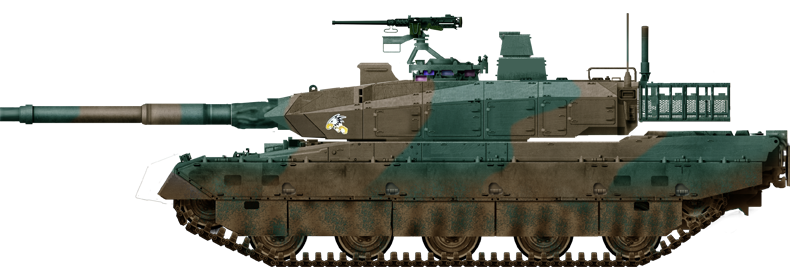
 Type 10 Hitomaru (2001)
Type 10 Hitomaru (2001)
♆ 24.11.2025 Manufactured by Mitsubishi Heavy Industries, the Type 10 Hitomaru is the latest Japanese Ground Forces Main Battle Tank. It was designed to be highly mobile, network-centric and tailored for Japan’s mountainous terrain and modern battlefield needs. Advanced Mobility means a 2nd generation adjustable hydropneumatic suspension allowing the tank to kneel, lean, and tilt for better firing angles. Its lower weight of 44–48 tons depending on configuration thanks to strong usage of composite allows easier transport on Japanese roads and better maneuverability in mountainous regions and to cross most Japanese bridges. The weight was a crucial requirement, as its predecessor, the Type 90, was only deployed only in Hokkaido due to weight limitations. The crew of three is possible thanks to an autoloader. So far 138 are listed built with a first acquisition of 13 dating back 2010, 12 more ordered in 2020 and 80 operated. Article covered in detail on Tank Encyclopedia in March 2017.
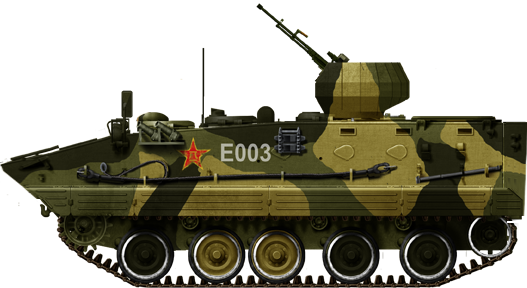
 Type 89/89A AFV (1990)
Type 89/89A AFV (1990)
♆ 15.11.2025 The Type 89 and stretched 89A tracked armoured fighting vehicle (AFV) is an armoured personnel carrier (and its infantry fighting vehicle variant) developed from the earlier export Type 85 AFV, entering service in around 1995 and first shown publicly in 1999. In the pure APC form around 1,700 are in service. Norinco industrial index is WZ534, with the export version denominated YW534. However the new designator system had it renamed officially as the ZSD-89. Apart China, the largest user, they were exported also to Ethiopia, Sri Lanka, Myanmar, Zimbabwe and Nigeria.
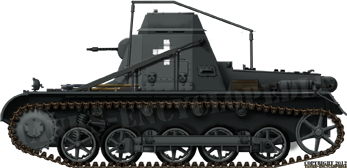
 Sd.Kfz.265 (1940)
Sd.Kfz.265 (1940)
♆ 15.11.2025 The Sd. Kfz. 265 also called kleiner Panzerbefehlswagen refers to a series of different types of armored radio and command vehicle based on the German Panzerkampfwagen I, which was developed before the Second World War and manufactured until the end of 1937. This interesting but somewhat extreme form of conversion was used until 1945 but the approach was discontinued for simpler tank conversions (Befehlspanzer).
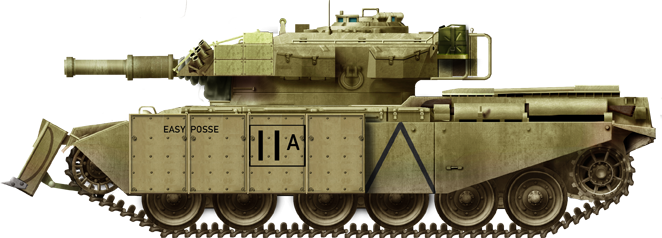
♆ 31.10.2025
 Centurion Mk.5 AVRE (1963)
Centurion Mk.5 AVRE (1963)
The Centurion AVRE ("Armoured Vehicle Royal Engineers") was the cold war reincarnation of the Churchill AVRE Petard of WW2, already used by the Royal Engineers from 1944 for a variety of roles. The 1950s Centurion Main Battle Tank was used as a "reboot" of the concept, fitted this time with a modern 165 mm demolition gun capable of sending at 2,000 yards (1,800 m) a 60 lb (27 kg) HESH projectile, fitted with an hydraulically operated dozer blade, mine plough, fascine bundle, roll of metal Class 60 Trackway and capable of towing the Viper mine-clearance equipment or utility trailer. Produced from 1963 in limited quantities, it was used in combat, in 1972 Operation Motorman and 1991 Gulf War.
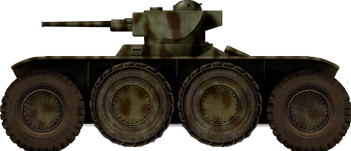
♆ 23.10.2025
 Panhard AM 40 (1939)
Panhard AM 40 (1939)
The Panhard AM 40 (or Panhard 201) was a prototype armoured car designed to replace earlier models from 1938, which combined several innovative features. Unfortunately, testing delays and the war interrupted all developments, and albeit 600 were ordered in May 1940, none was ever produced and the sole prototype was shipped in Morocco to avoid capture, but its fate is unknown. The Panhard 201 had a consireable legacy as work resumed on the concept in 1945 to later lead to the development of the even larger and more radical Panhard EBR, whch saw action for decades in the cold war.
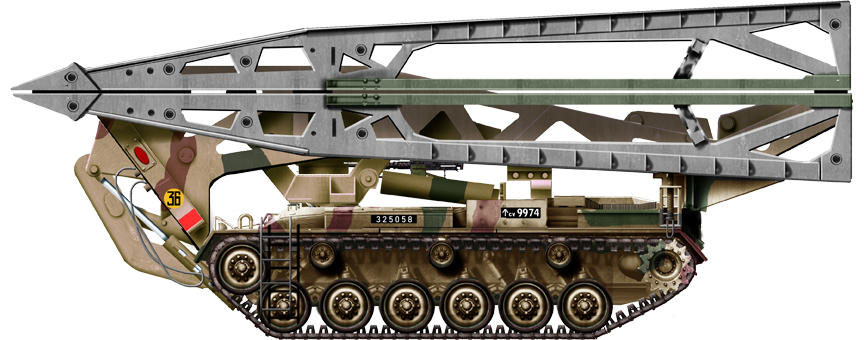
 M47M AVLB (1968)
M47M AVLB (1968)
♆ 02.10.2025 The M47M was a 1960s improved Patton variant that was proposed to modernize parks for countries already equipped with it, with mixed success, notably some features from the M60 MBT. Pakistan already lost many M47s in the war of 1965 with India, and started to withdraw them from frontline service to acquire M48s. However, many were converted into utility vehicles, such as the M47 AVLB bridgelayer variant.

 Merkava Mark 3 (1989)
Merkava Mark 3 (1989)
♆ 25.09.2025 The Merkava Mark 3 was the last evolution of the cold war Merkava, the iconic Israeli Main Battle Tank. It was developed by MANTAK from 1984 to 1989, world's first with a modular, composite armour, with 780 delivered and about ten variants produced, the firts major one in 1995. Almthough replaced in 2008-2010 by the Merkav 4, the 700+ in depot were restored to combat condition after the war in Gaza. Initially Morocco was interested to purchase 200 of these. Despite is similarities, the Merkava shares only its gearbox with the Mark 2. It is a completely new animal, improved in many ways but criticized by its unfavourable power to weight ratio, which was improved on the Mark 4.


 K2GF (2022)
K2GF (2022)
♆ 19.09.2025 The Polish MoD prospected in 2018 for a new main battle tank that could be purchased and produced in Poland quickly. From 2020. Hyundai Rotem signed a MoU followed by firm orders for a total of 1,000 K2 Main Battle Tanks, tailored to the Polish Needs. This became the K2GF program by 2022. This is the largest delivery of any asian tank to Europe and a precedent. 180 are currently provided from 2022, the last expected for 2026, and the remainder 820 produced in Poland on new facilities from 2026, along with training, maintenance, ammunition, and associated recovery tanks on the same chassis. This is currently the largest land procurement program in Europe, aiming at an objective of 1,500 tanks by 2030, with the Russian threat in the background.
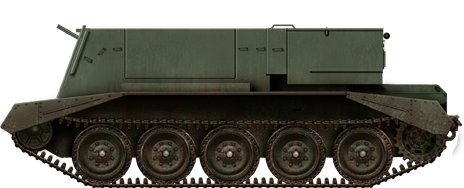
 Crusader Gun Tractor (1944)
Crusader Gun Tractor (1944)
♆ 04/09/2025 The Crusader gun tractor came out of a need for a vehicle to tow the heavy 76.2 mm QF 17 pounder anti-tank gun. Trucks had limits with their off-road mobility, and this a half-track, or better a fully tracked vehicle was preferred in many situations. On the other hand, the British Army still had many Crusader Tanks Mk.II and Mk.III in inventory, with their older turret ring supporting only the 2-pdr gun or the larger 6-pdr, but by late 1943 they had proved their limits. Many tanks were just mothballed and crews joined newly buuilt units with better tanks, mostly equipped with various Marks of the Sherman.

 Ansaldo GL-203 (1930 Project)
Ansaldo GL-203 (1930 Project)
27.08.2025 There were no shortages of prototypes from Italy for a more potent tank than the light and medium models fielded in 1940. However there was also no incentive for these. Rather, obscure super-heavy tank projects were seemingly prepared by Ansalso from 1927-28, released in 1933 allegedly for USSR own endavours on the new T39 breakthrough tank. The Ansaldo GL-203 is part of these. Pure invention or a genuine find ? Let's see...
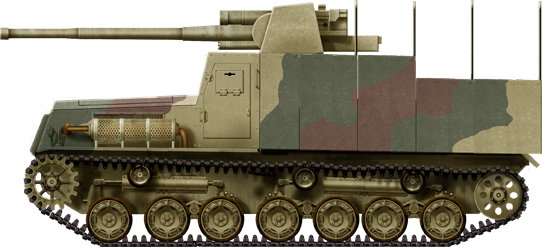
 Type 5 Na-To (1945)
Type 5 Na-To (1945)
20.08.2025 The Type 5 Na-To (五式砲戦車, or "Go-shiki hōsensha"), named by the Army the "Experimental 7.5cm self-propelled anti-tank gun Na-To" (Shisei nana-senchimētoru hantaisensha jisōhō Na-To) was the very last attempt by the Empire of Japan to create a self-propelled anti-tank gun. It was developed in mid-1945, thus production would not start as it was still prepared by the late summer in the closing days of the war, with two prototypes still testing.

 Obyekt 279 (1959)
Obyekt 279 (1959)
14.08.2025 The Obiekt 279, or Object 279, (Объект 279) was a Soviet experimental heavy tank developed by late 1959. It was called a "special purpose tank" intended to fight on cross country terrain that was inaccessible to conventional tanks. But also for a heavy breakthrough tank, to be operationally disposed of by the Supreme Command Reserve. However a serie of reasons eventually canceled mass production, notably strict opposition of Nikita Khrushchev to heavy tanks in 1960, but also cost, complexity and not that stellar results in swampy terrain.
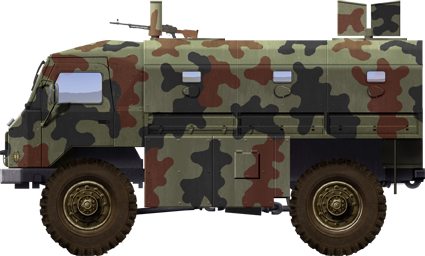
 Ris (1995)
Ris (1995)
06.08.2025 The Ris (Lynx) is a rare 4x4 Serbian armoured personal carrier, based on the Slovenian-built TAM-110 just seen on truck encyclopedia. It was developed for the needs of the Military Police of the Yugoslav Army and the Special Police Units of the Serbian Ministry of Internal Affairs but production was short, at TAM until the company ceased activities in 1996.
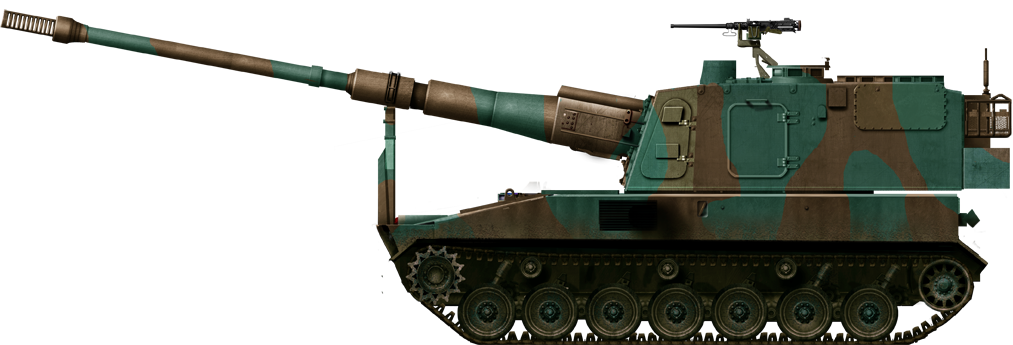
♆ 31/07/2025
 Type 99 155 mm self-propelled howitzer (1999)
Type 99 155 mm self-propelled howitzer (1999)
The Type 99 is a 155 mm self-propelled howitzer of the Japanese Ground Self-Defense Force, developed as the successor to the Type 75 155 mm self-propelled howitzer, which dated back from 1985. Its bovelties were a longer barrel of 52 cal. versus 30 cal. for twice the range and latest fire control system. Japan Steel Works became primary contractor for manufacturing the main gun and turret under a R&D contract of 5 B Yen completed in 1992 and Mitsubishi Heavy Industries, the chassis. 117 were built, with production shutting down in 2022. It is in service with the Fuji Artillery School Unit, Northern Army 2nd Division, 5th Brigade, 7th Artillery Regiment(Mechanized) and 11th art. Brigade (Mechanized) and the Northern Army Combined Brigade, 1st Sergeant Training Unit.

♆ 21/07/2025
 Heavy Tank T34
Heavy Tank T34
The program of the heavy tank T34 was started in May 1945 when the US Ordnance bureau, which liked the performances of the 120 mm M1 AA gun, suggested its adaptation as a tank gun. This registered with developments following the T26E1 or "super-pershing" before a new heavy tank design capable of defeating any German tanks in the inventory. These were the T29 and T30 programs, respectively armed with a new 105 mm and a 155 mm tank guns. The T34 used the T53E1 tank gun derived from the 120 mm M1, with some improvements like a new muzzle brake and fume extractor, but was judged in the end, too heavy for the US Army needs and terminated in 1948. It still paved the way for the heavy tank T43, later standardized as the M103.

♆ 17/07/2024
 Al-Hussein
Al-Hussein
The Al-Hussein was a Jordanian Main Battle Tank, result of the donation of between 392 and 402 Challenger I main battle tanks that arrived to the end of their service from 1999 and until 2002. Apart a revamped air conditioning system, they were "stock". However it was soon attempted by King Abdullah II Design and Development Bureau (KADDB, now JODDB) to upgrade the park with a new gun, new FCS, and the Falcon unmanned turret, or to lead to a more austere modernization program. However nothing came of it after three prototypes. The Army decided to get rid of its Al-Husseins in 2018 for 80 UAE Leclerc MBTs and Centauro wheeled tanks as complement.
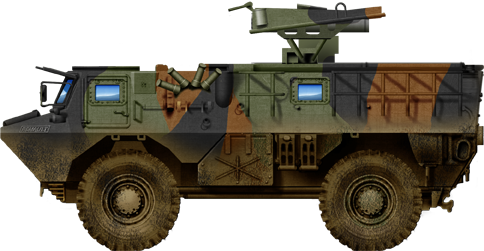
♆ 09/07/2024
 VAB Mephisto
VAB Mephisto
The VAB Mephisto or VAB HOT was the tank hunter variant of the VAB (Vehicle de l'Avant Blindé) proverbial APC for 50 years, until replacement by the new Scorpion program Griffon. The acronym MEPHISTO stands for Module Élévateur Panoramique Hot Installé Sur Tourelle Orientable. 135 were ordered as modified to operate a HOT 2 antitank missile in a telescopic quad launcher, with reloads below. The HOT Mark 2 was able to penetrate up to 900 mm of armour at a range of 4,000-4,250 meters. The vehicle was protected by a STB52V turret with a 7.62 mm NATO LMG and a dedicated fire control system with four man crew. It saw action in the 1991 Gulf war as part of the Daguet Division.
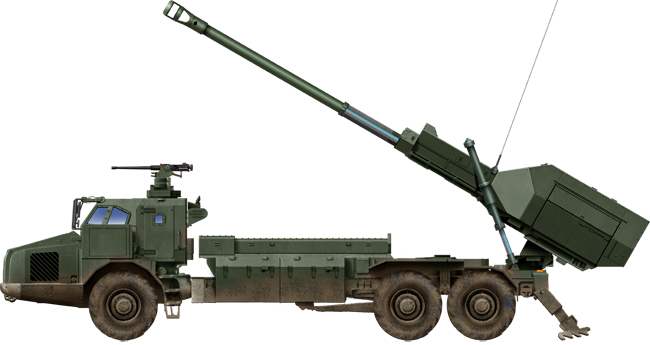
♆ 03/07/2025
 Archer Artillery System
Archer Artillery System
The Archer artillery system ("Archer FH77BW L52") or in Swedish "Artillerisystem 08", is a Swedish designed and built self-propelled howitzer system, largely compared to the French CAESAR today or Czech Vz.68 Dana. Its centerpiece is a fully automated 155 mm L52 gun-howitzer. Armored and stealthy, it also defended by a M151 Protector remote-controlled weapon station. The 6×6 chassis is based on the Volvo A30D articulated hauler, but a variant on the Rheinmetall HX2 (HX44M) was also marketed on 8x8. The whole artillery system also includes an ammunition resupply vehicle for each howitzer in the platoon as well as a common support vehicle. Deployed only in Ukraine so far, the Archer uses BONUS submunitions or the M982 Excalibur guided projectiles. Mobility makes it perfect for counter-battery fire. Used by Sweden, UK and Ukraine, the Archer also has been ordered also by Latvian Land Forces. It was also considered for purchases by the Canadian Army, Romanian Land Forces and eve a contender in the US Army 2020 evaluation.
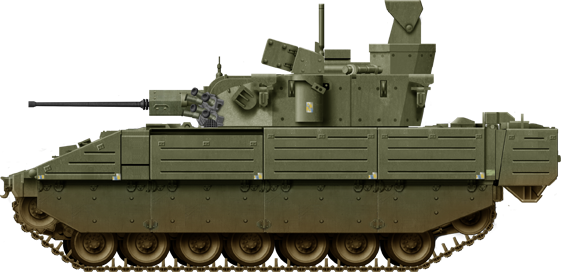
 GDLS Ajax (2010)
GDLS Ajax (2010)
26.06.2025: The GDLS Ajax (Scout SV) is a family of tracked armored fighting vehicles developed for the British Army. It was designed by General Dynamics Land Systems–UK (GDLS-UK) under the AJAX programme, formerly known as Scout SV (Specialist Vehicle). As of today this development of the ASCOD Pizarro is scheduled for a production of 245 vehicles, which is ongoing despite criticisms of delays and cost overruns, for an entry into service now postponed to 2028.
12.06.2025
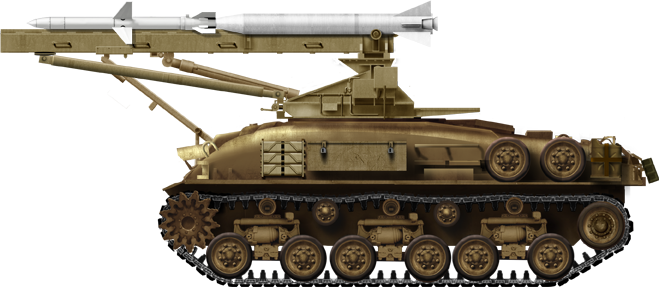
 Kishlon SPML (1973)
Kishlon SPML (1973)
Kilshon (Trident) or Kachlilit was another Sherman Israeli modification, this time of a Sherman M4A1 wit an M50 engine, into a ground missile launcher system, basically a turretless tank with a ramp for an AGM-45 Shrike anti-radiation missile launcher. Retired in the early 2000s, one is now preserved at the Muzeyon Heyl ha-Avir, Hatzerim.
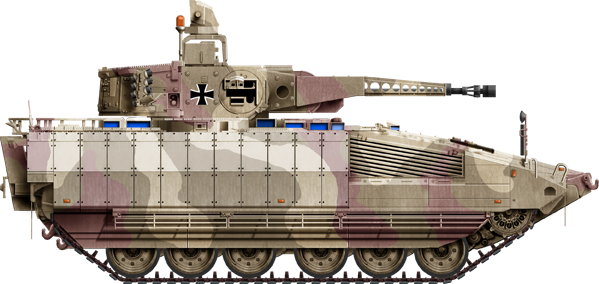
♆ 06/06/2025
 SPZ Puma
SPZ Puma
The Schützenpanzer Puma (SPz Puma) is the latest German infantry fighting vehicle, still the preferred mount of Panzergrenadier and replacement for the cold war Marder IFV. Production, with an order of 350 vehicles, started in 2010, and was completed in August 2021. A second batch of 229 were recently funded after a massive plan to rearm Germany following the 2022 invasion of Ukraine. The first vehicle was produced on 6 July 2009 by Krauss-Maffei Wegmann, alongside Rheinmetall Landsysteme in a joint venture, "Projekt System Management GmbH" (PSM). The Puma is much heavier than the Marder and is claimed to be the world's best best-protected IFV, while still having one of the highest power-to-weight ratio. Today the Bundeswehr remains the only customer. The vehicle competed in many bids (Australia, Canada, Chile, Croatia, Czech Rep., Hungary, USA), but won none so far.
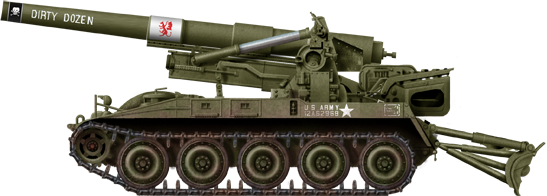
♆ 29/05/2025
 M110 Howitzer (1963)
M110 Howitzer (1963)
In 1956 a study over the future needs of the US Army led to requirements for new heavy artillery system with a focus on air transportability and rapid deployment and interchangeability with other models and artilley calibers, as well as greater range. Approved in January 1956, development by Pacific Car and Foundy led to a production until 1960 of 750 vehicles, later converted to the M110A1 and M110A2 featuring longer barrels and improved ammunitions. The M110 was largely exported and took part in the Vietnam War and Gulf war. It was also capable of firing nuclear shells.
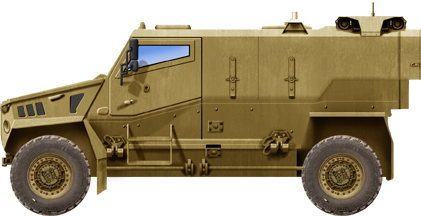
♆ 23/05/2025
 FP Ocelot (2005)
FP Ocelot (2005)
The Force Protection Ocelot is a 2009 British infantry mobility vehicle that replaced the soft-skinned Snatch Land Rover of the late cold war. The initial service name was Foxhound to reflect the canine names tradition of wheeled armored vehicles (Mastiff, Wolfhound, Ridgeback, all variants of the Cougar). But given its potential desert assignation it was named "Ocelot", a small rainforest leopard. It has nothing to do with the Australian modified Shorland S600. So far, the Ocelot brought armuour and good IED and mine protection to the table. Production moved in 2011 from Force Protection Europe inc. to General Dynamics UK. In competed initially for Iraq-Afghanistan's Joint Light Tactical Vehicle (JLTV) program to replace the inadequate Hummer.
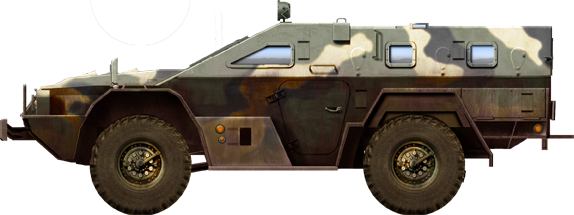
♆ 19.05.2025
 BPM-97 (1999)
BPM-97 (1999)
The BPM-97 (Boyevaya Pogranichnaya Mashina - "Battle Vehicle of the Border Guard") is a relatively recent Russian military armoured 4x4 vehicle, known initially as the the KAMAZ 43269 Vystrel. It is presented as mine-resistant and ambush protected (MRAP) but proposed in different turrets, notabl the one from the BTR-80A. The KAMAZ-43269 was specifically designed to cover a need of Russian Border Guards which used GAZ-66 trucks in that role and BMP-40s. The final BMP-97 was standardized with bulletproof side windows, no gun turret, ordered also by Kazakhstan. Outside the National Guard it was also ordered by the Federal Prison Service and EMERCOM.
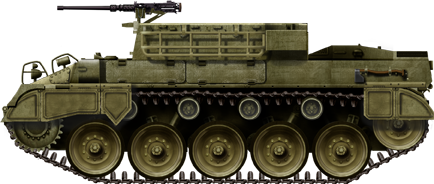
♆ 16/05/2024
 M39 armored utility vehicle (1945)
M39 armored utility vehicle (1945)
The M39 armored utility vehicle (T41 before standardization) is a US armored vehicle designed during from early 1944 as a prime mover, which saw service only the last days of WW2 in Germany, and after the M5 antitank gun was considered obsolete, as a true utility vehicle and APC in the Korean War. Like a number of vehicles of this type, it was built using an existing chassis, that of the M18 Hellcat. It became also incidentally he first Bundewehr's APC when 32 Schutzenpanzerwagen M39 were in service 1956-1960.
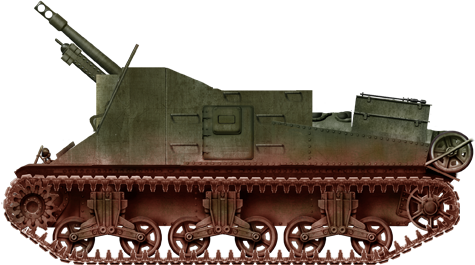
♆ 13/05/2024
 Yeramba (1948)
Yeramba (1948)
The Australian self-propelled howitzer "Yeramba" was developed in 1948, produced by mounting the 25 pounder gun-howitzer on American M3A5 Grant tank hulls converted by the Ordnance Factory in Bendigo, from 1950 to 1952. The Yeramba was very close in design to the Canadian Sexton and withdrawn from service in 1957, now obsolete compared to newly serviced self propeller howitzers. It remained the only self-propelled artillery introduced into service by the Australian Army before the introduction of the M108. "Yeramba" was a an Aboriginal instrument used to throw spears.
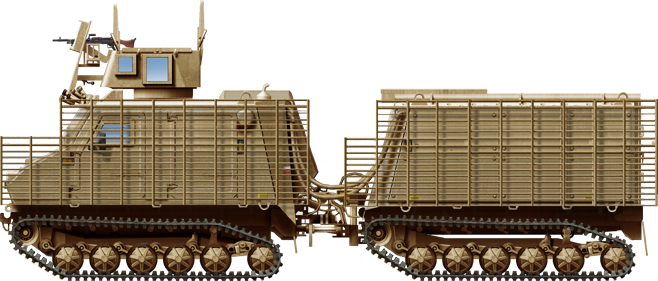
♆ 07/05/2024

 BAE Hägglungs Bandvagn Skyddad 10
BAE Hägglungs Bandvagn Skyddad 10
The BvS10 (Bandvagn Skyddad 10, also known as Bandvagn 410 or BV410 in Sweden, Viking, Warthog and Beowulf for variants in UK) is a tracked articulated amphibious all-terrain armoured vehicle produced by BAE Systems Land Systems Hägglunds of Sweden and by FNSS of Turkey under licence). This vehicle, referred to as the All Terrain Vehicle (protected), ATV(P) or Viking by UK forces, was originally developed as a collaboration between Hägglunds Vehicle AB and the British MoD on behalf of the Royal Marines, developed from 1998 to replace the BV 206 and adopted in 2000. Today more than 700 were ordered, delivered and in construction, for the UK, Sweden, the Netherlands, France, Austria, Germany and the US. Ukraine also received 48 in 2023, 15 lost so far.
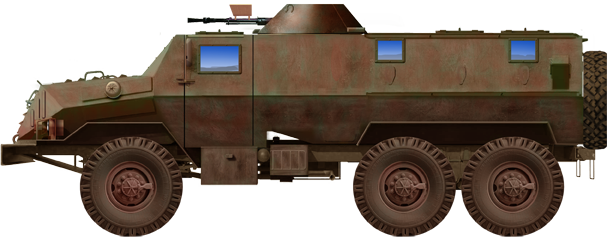
 Ural 432007 Shchuka (2020)
Ural 432007 Shchuka (2020)
29.04.2025 During the fighting in eastern Ukraine, the Armed Forces of Ukraine destroyed a rare russian armored vehicle: Ural Chekan or Shchuka (Pike), based on Ural 432007-0111-31 truck. Such armored vehicles are usually used by soldiers of private military companies, mostly Wagner Group. It was thus called also "Wagner's Wagon" produced by AVD as an APC for Evro Polis LLC. The number built is unknown. But they had been spotted in action on all Wagner theaters, in CAR, Sudan, Lybia, Syria, and Ukraine. AVD presented in 2025 new variants of the same, notably an electronic warfare vehicle.
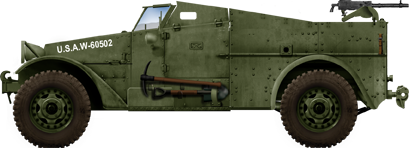
♆ 23/04/2024
 T9/M2/M2E1 Scout car (1935)
T9/M2/M2E1 Scout car (1935)
The origin of the tens of thousands of M3 Scout Car, M2 and M3 Half Tracks cars that soldiered for the allies in WW2 and so many nations for most of the cold war and up to the 1980s in many cases (like for the IDF), could trace back their origin, not to White, but to Corbitt. The story of the scout car M2 is now forgotten. It was an early US Army armoured car of the 1930s, intended for the cavalry, designed from 1934 and introduced in 1935, first named T9 but standardized in March 1938 as the M2, after 22 vehicles including prototypes, followed by a small serie of 78 M2E1 Scout Cars in 1937-1939. The first used to train cavalry units in the US and the remainder for training M3 scout car crews for the duration of the war, never leaving US soil.
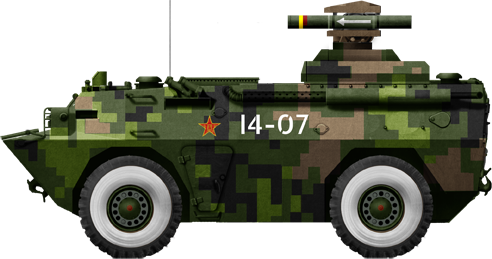
 Chinese PLA AFT-9 Carrier (1998)
Chinese PLA AFT-9 Carrier (1998)
♆ 16.04.2025 The AFT-9 is the now ageing 4x4 ATGM armoured tank hunter using the HongJian 9 ('Red Arrow' 9) of the People's Liberation Army Ground Force. The launcher was modified to also firing anti-air missiles in later evolutions, and provided to mobile force an organic universal short range missile protection. Deceloped in the late 1980s, this ATGM carrier was given a platform based on the Wz.500. Never exported, unveiled in 1990, the Norinco vehicle is only fielded by the PLA today with 450 estimated in service.
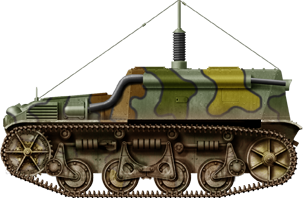
♆ 09/04/2025
 Renault YS & YS2
Renault YS & YS2
The Renault YS was a smaller serie of command and communication tanks. The Reconnaissance tanks of the French Army since 1933 were the AMR-33, 34 and 35. They had been distributed to cavalry units for reconnaissance, and declined each into multiple variants. Among these were a serie of command tanks equipped with radio sets, the Renault YS of which only ten were built and distributed to various units. Then, there was derived YS-2, a prototype artillery observation vehicle with an observation turret, tested in 1938-40 but not adopted either, despite the need for such vehicles.
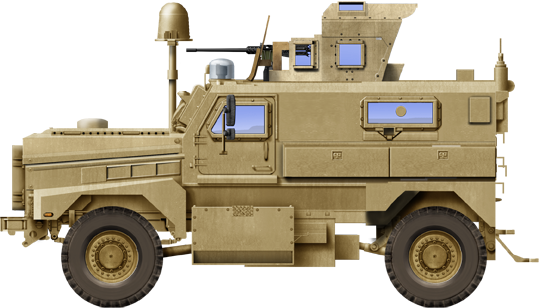
♆ 03/04/2025
 Cougar MRAP (2002)
Cougar MRAP (2002)
The Cougar is a mine-resistant ambush-protected (MRAP) doubling as infantry mobility vehicle. It was developed to be immune to landmines and IEDs, in the wave of such vehicles ordered by the US Army/USMC for the war in Afghanistan and Iraq, which made apparent the Hummer's irrelevance. The Cougar was Produced by Force Protection Inc, integrated by Spartan Motors to fill the need of the US Army in the 2000s. It was also better protected against small arms and RPGs for some and had dual air conditioning. Some 1700 HE were manufactured, the remainder H, 5300. and also modified and exported as the British Mastiff, Canadian Timberwolf, Iraqi Badger. Production was terminated with the JPO dissolution in 2014. The HE is the 6x6 version of the family.

♆ 26/03/2025
 T-155 Fırtına
T-155 Fırtına
Turkey looked to replaced its now obsolete (even ugraded) T-44 and T-52 self propelled guns, by building a modified licensed K9 from Samsung Techwin designated the T-155 Firtina (Storm). Development started at MKEK in 1995 and its mostly the opposition from germany to deliver critical components that led authorities to look after South Korea instead. The T-155 Firtina is however built locally with many domestic components, including Aselsan for the fire control and many sub-systems. It capable of automatic fire, rapid fire at calaculated trajectories to fall at the same point, and the 52 caliber barrel, while compatible with a large array of NATO rounds, is capable of 40 km without assistance. So far 280 had been produced, now gradually replaced by the Firtina 2.
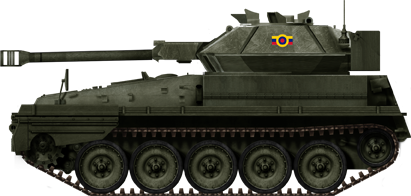
♆ 21/03/2025
 Alvis Scorpion 90 (1987)
Alvis Scorpion 90 (1987)
A fork of the Alvis 101 family (with the Cougar, Sabre, Salamander...) the Scorpion 90 or "Scorpion 2" was a version armed with the long-barrelled Cockerill Mk3 M-A1 90mm gun designed for the export market. It met success as a specific version ordered by Venezuela and Indonesia in the late 1980s and 1990s. By June 1988, Venezuela ordered 84 and from 1995 to 1997, Indonesia ordered two batches of Scorpions from 1992.
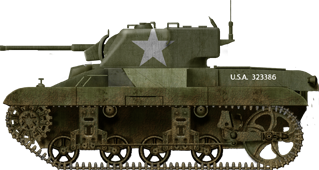
♆ 18/03/2024
 M22 Locust (1942)
M22 Locust (1942)
The M22 Locust, officially Light Tank (Airborne), M22, was an American-designed airborne light tank which produced to 830 machines during World War II. Development started in 1941 after the British War Office requested the US government for a purpose-built airborne light tank, light enough to be transported by gliders for British airborne forces. The War Office selected initially the connverted Light Tank Mark VII Tetrarch but it was not purpose-built and the US design was supposed to replace it. The US Army Ordnance Department selected Marmon-Herrington to design the prototype in May 1941, designated the Light Tank T9 (Airborne) to be initlally transported underneath a Douglas C-54 Skymaster and fit inside a General Aircraft Hamilcar glider... (Starter article).
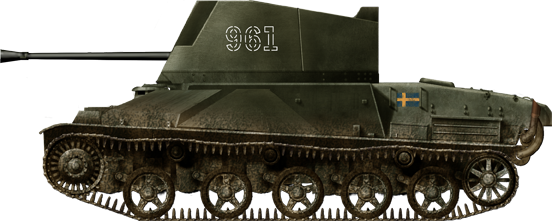
♆ 14/03/2025
 Luftvarnsvarnskanonvagn M/43 (1947)
Luftvarnsvarnskanonvagn M/43 (1947)
The Lvkv m/43 (Luftvärnsvärnskanonvagn modell 1943) or "Anti-Aircraft Gun Carriage Model 1943" is a Swedish self-propelled anti-aircraft weapon developed by AB Landsverk and Bofors in 1943 out of the need for a tracked anti-aircraft vehicle to protect armored columns from air attack. Based on an elongated version of the hull of a Landsverk L-60 tank and mounting dual Bofors 40 mm L/60 guns, the vehicle was adopted into service with the Swedish Army in 1947.
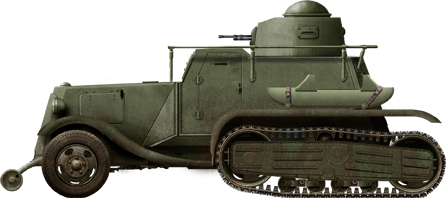
♆ 11/03/2024
 BA-30
BA-30
To bounce on the recent BA-60 truck on truck encyclopedia (see below), here is the armoured car derived from its track system, the BA-30. It was created on the base of the same NATI 3 chassis, but with a brand new hull assembled at the Vyksa plant, mixing elements of the BA-20 and FAI armoured cars. The vehicle was designed from 1936 by NATI, tested heavily in 1937 but not authorized for production, despite rumors of more vehicles field tested in the winter war of 1940 with Finland, it remains undocumented.
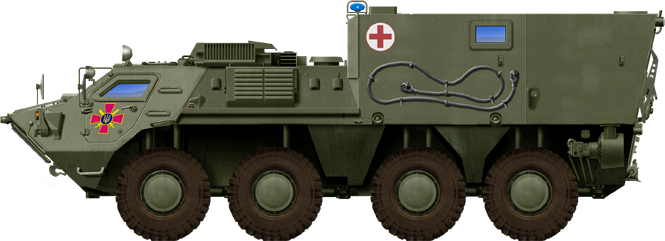
♆ 05/03/2025
 BMM-4C
BMM-4C
First aid and evacuation vehicle based on the BTR-4. The official name is "Retrieving And Medical Vehicle". It was developed for export as the BSEM-4K, with only a few delivered to Iraq, after the order was almost cancelled ion 2009. As a specialized medical evacuation vehicle the BMM-4C "Ambutank" was further developed to cover the needs of the Ukrainian Army as the BMM-4C, with a production running from 2014 to 2016 for c10-12 delivered, with four lost so far in the current war in Ukraine (Oryx).
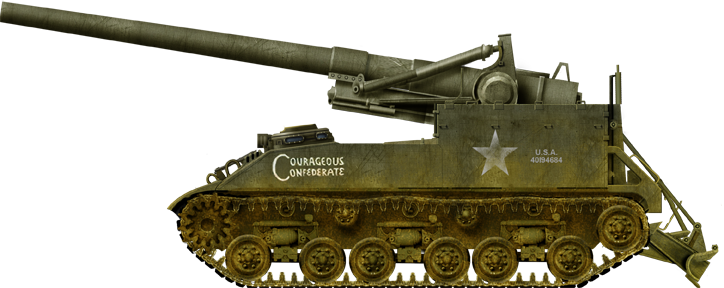
♆ 28/02/2025
 M40 Gun Motor Carriage (1945)
M40 Gun Motor Carriage (1945)
The M40 Gun Motor Carriage was a 155 mm "long tom" M1 self propelled gun, designed in 1943 to replace the M18 SPG, which was based on the M4A3 chassis with a new engine and VVSS suspensions, tested in 1944 but only standardized in November 1945. 600 were ordered to Pressed Steel Car Company but only 311 were completed before cancellation and the last 24 converted as the M38 Howitzer Motor Carriage. Apart the pilot soldiring at the Battle of Cologne in 1945, the M40 SPG saw action in Korea and were retired in 1960.

♆ 25/02/2025
 2S35 Koaliytsa
2S35 Koaliytsa
The 2S35 Koalitsiya-SV ("Coalition-SV") is a Russian self-propelled gun revealed to the public in 2015 during rehearsals for the Moscow Victory Day Parade. It was later presented in 2023 to complement and later replace the 2S19 Msta in the Russian Ground Forces as well as remaining Soviet legacy vehicles. Unlike the 2S19 it is given a reduced crew in a protected cell nside the chassis, and full autimated turret for a 152 mm. The pre-series are for now based on the older T-90 chassis rather than the new Armata platform, with 12 vehicles delivered so far, entering service in 2023. Not officially deployed in Ukraine.

♆ 19/02/2025
 AHS Krab (2010)
AHS Krab (2010)
The AHS Krab (Polish for crab) is a 155 mm NATO-compatible self-propelled tracked gun-howitzer designed in Poland by Huta Stalowa Wola (HSW), by combining a modified South Korean K9 Thunder chassis with a British BAE Systems AS-90M Braveheart turret with a 52-calibre gun produced by HSW and the Polish WB Electronics' Topaz artillery fire control system. "AHS" is not a part of the name, but Polish abbreviation of armatohaubica samobieżna - gun-howitzer, self-propelled.
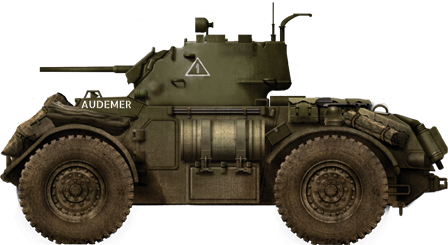
♆ 12/02/2025

 T17E1 Staghound (1943)
T17E1 Staghound (1943)
The T17E1 Staghound was on in the long line of "hounds" which were manufactured in WW2, most often in small series of evaluation prototypes. The only one that was mass-produced became the M8 Greyhound. The alternative T17E1 Staghound, which lost the contract however interested Britain, and was produced in lend-lease to cover the needs in armored cars of the Allies during the North African campaign. This Ford alternative for reconnaissance and patrol vehicle was based on a British requirement and produced by the Ford Motor Company from 1942 to 1944, mainly used by Britain and its allies with nearly 4000 built as well by many other countries postwar and even until recently. It was declined also into multiple variants.
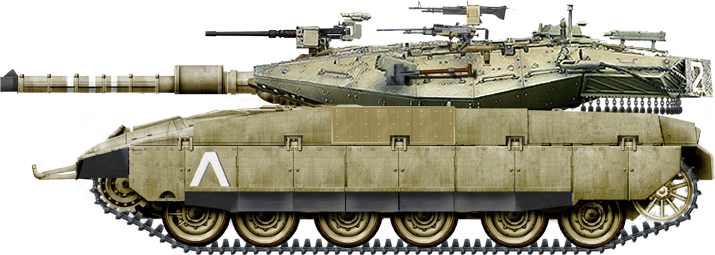
♆ 06/02/2025
 Merkava II (1982)
Merkava II (1982)
The Merkava Mk 2 Main Battle Tank was a successor to the Mk 1, initiated after the long search for a new modern tank for the IDF, led by Israel Tal. It entered service with the Israeli Defence Force in 1983 and was produced more as lanufacturing capabilities increased with a total of 580 from 1982 to 1989. This was the last Merkava of the cold war, with gradual improvements to its protection from lessons of the 1982 Lebanon War. It has been upgraded and re-designated since entering service wit the latest being the Mk2D as of 2023, tasked with training units but still mobilizable in case of war.
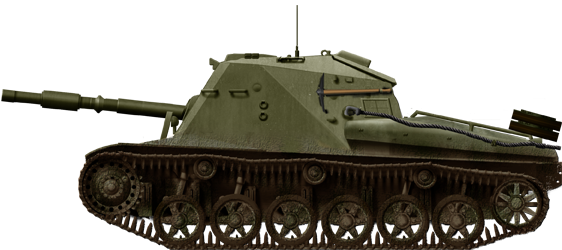
♆ 31/01/2025
 Pansarvarnskanonvagn M/43 (1943)
Pansarvarnskanonvagn M/43 (1943)
The Pansarvärnskanonvagn m/43 (Pvkv m/43) was a tank destroyer developed by Landsverk. Based on Strv m/42 EH Bild-Lago medium tank, this tank hunter inspired by the German Jagdpanther and Soviet SU-85 was ready for an order in 1942 but production was delayed to early 1946, missng WW2. With the advantage of an adapted 75 mm AA gun, the first version was originally built without a roof in 1946, but the Army Equipment Administration rebuilt these in the 1950s mainly to protect the crews from shrapnel. From 1963 their unreliable engines were replaced by those of reformed m/41 light tanks, with a new transmission to stay active until the 1970s.
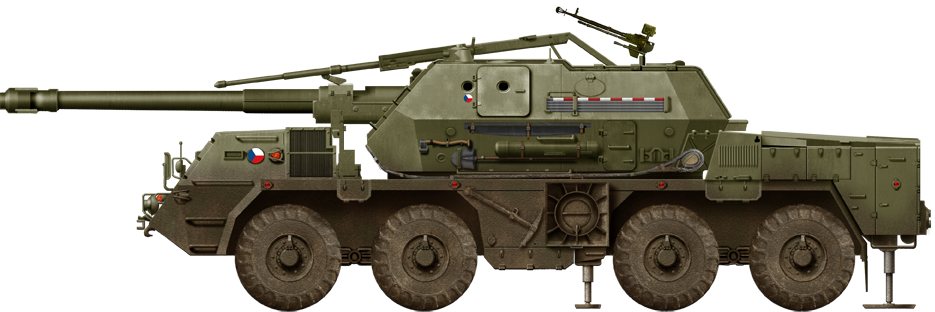
♆ 28/01/2025
 152 mm SpGH Vz77 DANA (1981)
152 mm SpGH Vz77 DANA (1981)
Czechoslovakia during the cold war capitalized on its reputed industry to continue working on its own designs, and producing improved versions of Soviet Tanks. Among these was a type of vehicle that was missing in the Soviet inventory: A wheeled self-propelled howitzer. The DANA (Dělo automobilní nabíjené automaticky - "gun on truck loaded automatically") was developed under the army name Samohybná Kanónová Húfnica vzor 77 (ShKH vz. 77; "self-propelled gun howitzer model 77") by Konštrukta Trenčín, built by ZTS Dubnica nad Váhom from 1976, ready in 1981 as the world's first wheeled 152 mm self-propelled artillery gun based on a Tatra 815 chassis with central tyre inflation system and power-assisted steering on the front four wheels, hydraulic stabilisers, roof-mounted crane, manual fire control, automatic reloader. After the end of the cold war, Slovakia and the Czech Rep. inherited its production and developed improved versions. The vehicle was exported to USSR, Libya, Azerbaijdan, Georgia, Poland, Cyprus, and recently Ukraine, seeing action from Chad to the present invasion of Ukraine in 2022.
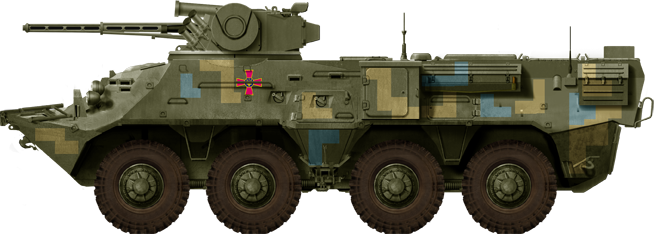
♆ 22/01/2025
 BTR-3 (2000)
BTR-3 (2000)
The BTR-3 is an eight-wheeled armored personnel carrier developed in 2000-2001 by Kharkiv Morozov Machine Building Design Bureau and the State Scientific Technical Centre of Artillery & Rifle Arms of Ukraine, from a private venture from Adcom Systems of Abu-Dhabi for an UAE procurement program. Despite it's similarities with the BTR-80 and BTR-94 this is a brand new new production vehicle and not an upgrade, with significant differences in the hull, powerplant, a modular combat turret, either manned or remote with 30 mm Gun, coax. ATGMs, Grenade launchers and smoke dischargers. The BTR-3U and then BTR-E as its sub-versions was largely exported for a total as of 2025 above 840 vehicles.
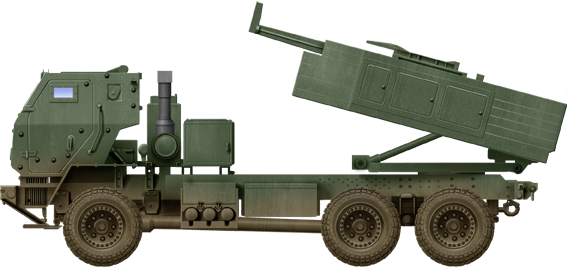
♆ 16/01/2025
 M142 HIMARS (2005)
M142 HIMARS (2005)
The M142 High Mobility Artillery Rocket System (HIMARS) is a light Multiple Rocket Launcher (MRL) developed in the late 1990s for the United States Army. It was self-propelled, mounted in the Medium Tactical Vehicles (FMTV) M1140 truck. A single pod carried either six GMLRS rockets or a single ATACMS missile in its modular container. The pod is compatible with the ammunitions already fired by the M270 MLRS, a wide family of Munitions since the 1980s. Indeed, the full pods are interchangeable with the M270, which had two pods. Its light weight, unlike the M270 is critical as it enabled tactical air transport (C-17 Globemaster, C-5 Galaxy, even C-130 Hercules) and the mass-produced FMTV truck now produced by Oshkosh Corporation 2010-2017 sharing its elements makes it standardized and easy to maintain. So far, the M142 HIMARS saw action in Afghanistan, Syria, Iraq, and the current war in Ukraine. It was exported to 6 countries, with 8 potential operators in negotiation.

♆ 08/01/2025
 Tiran (1969)
Tiran (1969)
The IDF Tiran tanks were a serie of modified Soviet T-54 and T-55 tanks, captured in 1967 and 1973, and repurposed by the Israel Defense Forces (IDF). Gradually, the IDF replaced many of the original Soviet components with Western systems to improve compatibility with their logistics and operational needs. Later models obtained the 105mm M68 rifled gun with improved targeting optics, night vision, new communication systems, upgraded engines for better reliability, IDF storage bins and smoke grenade launchers, and other external fittings. They were mainly used in Lebanon and some given to the South Lebanese Army, phased out as more Merkava entered IDF service.
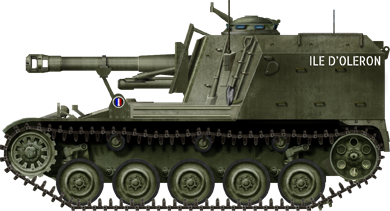
♆ 01/01/2025
 Mk 61 105 mm self-propelled howitzer (1958)
Mk 61 105 mm self-propelled howitzer (1958)
The Mk 61 105 mm self-propelled howitzer was designed and built during the late 1950s for the French Army, based on the mass-produced AMX-13 light tank for commonality. Inspired somewhat by WW2 German self-propelled artillery, it was a well protected (albeit not NBC) vehicle, capable of 60 km/h (37 mph) and with the Obusier de 105 modèle 1950 howitzer capable of a range of 14.5 km (9 mi) at 6 rpm. It was priduced to 550 vehicles at Roanne Workshops and also exported and used by Israel in the 1967 war, but also Indonesia, Morocco and the Netherlands. The improved Mk.62 was developed for Switzerland but not adopted. One was preserved at Thun, another at Saumur.

♆ 26/12/2024
 2S7M Malka (1986)
2S7M Malka (1986)
The 2S7 Pion ("peony") was a Soviet self-propelled 203 mm cannon under the GRAU designation 2S7 and called "Pion" or "Peony" introduced in 1976 as the longest ranged conventional self propelled artillery anywhere, 37.4 km with the 43.2 kg 3VOF34 round. It was produced until the collapse of the Soviet Union to around c500, exported to Belarus, Czechoslovakia, Poland, now Slovakia and still used today by Angola, Azerbaijan, Georgia, Ukraine having 99, brought from reserve and restored. Russia still have 60 of the later 2S7M version in active service today with 260 older 2S7 in reserve by 2022 (modernized from dec. 2021), but as of late 2024, there have been considerable losses on both sides.
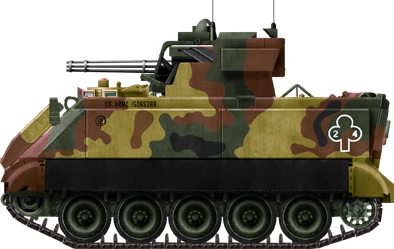
♆ 18/12/2024
 M163 VADS (1968)
M163 VADS (1968)
The M163 VADS was a cold war mass produced self propelled anti-aircraft gun based on the M113 armored personal carrier. It entered service in the Vietnam war and stayed in service until the 1991 Gulf War, gradually replaced by the M2 Bradley and other systems. Called officially the Gun, Air Defense Artillery, Self-Propelled 20-mm, M163, was developed by Vulcan and primarily used by the United States Army, replacing the M42 Duster, it was declined into three variants and also used by Chile, Ecuador, Egypt, Iran, Israel, Jordan, Morocco, Portugal, Saudi Arabia, Thailand, and Tunisia.
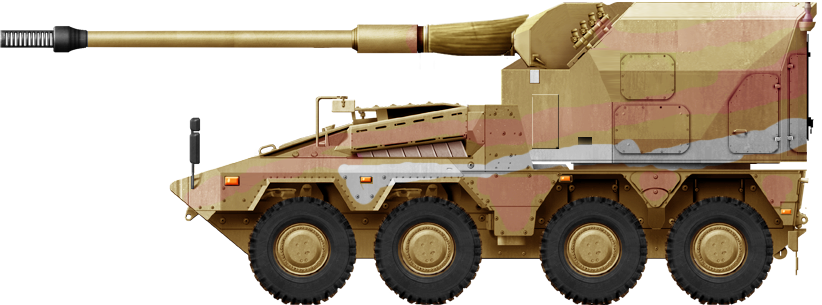
♆ 11/12/2024
 GTK Boxer RCH-155 (2014)
GTK Boxer RCH-155 (2014)
The RCH 155 (Remote Controlled Howitzer 155 mm) is a wheeled self-propelled howitzer developed by Krauss-Maffei Wegmann (now KNDS Deutschland). This is a Module fitting the PzH 2000's 155 mm L/52 ordnance but fully automated and remotely controlled. This new system of artillery automation on a much faster base as the tracked, and now old PzH 2000 is not only provided wheeled mobility but was designed to be compatible with the regular GTK Boxer platform, and said to be capable of firing on the move. Produced since 2022 so far UK uses it, Switzerland adopted it as well as Ukraine, with Germany evaluating it as par of the ZukSysIndF mRw program.
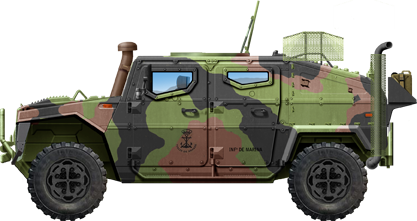
♆ 04/12/2024
 URO Vamtac
URO Vamtac
The URO Vamtac (Vehículo de Alta Movilidad Táctico) is a family of high-mobility tactical vehicles designed and produced by the Spanish company URO Vehículos Especiales (UROVESA). These vehicles are intended primarily for military and law enforcement applications, with the Vamtac series being versatile and highly adaptable for different operational needs. Inspired by the Humvee, c4500 had been manufactured from 1998, exported to 12 countries, declined into more than twenty variants.

♆ 28/11/2024
 MBT-70/KpfPz-70 (1965-70)
MBT-70/KpfPz-70 (1965-70)
Two of the world's most iconic main battle tanks today, the Abrams and Leopard 2, originated in a 1960s joint US-West German program, known either as the MBT-70 and the Kpz-70. It was developed to counter the latest generation of Soviet main battle tanks among other reasons brought by Robert McNamara in 1961. It was technically ambitious, a true departure from the M48 and M60, with advanced features: Hydropneumatic suspensions, full crew in turret, 152mm XM150 gun/ATGM launcher, autoloader and combustible cases, 20mm remote autocannon, new advanced armour and NBC protection, amazing performances... But this program met many challenges from the start with communication and coordination issues, diverging requirements and practices left unresolved until the project advanced too far to be revised, and spiralling costs. West Germany withdrew in 1969 but the US persevered with the austere XM-803, cancelled also in 1971.
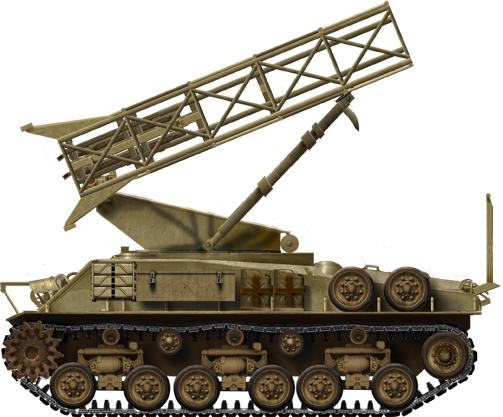
♆ 20/11/2024
 MAR-290 MLRS (1973)
MAR-290 MLRS (1973)
The MAR-290 is an Israeli 290 mm (11.4 in) single-stage, ground-to-ground, multiple launch rocket system manufactured by Israel Military Industries, introduced in 1973. It was based on the Soviet-made 240 mm (9.4 in) BM-24 MLRS which many were captured in 1967. Its maximum range is 42 km (26.1 mi) either HE "Eivri" or cluster "Chaviv" warhead. Three vehicles were used as base successfuly, the first being M4 Sherman chassis updated by IMI. The Centurion was created later in 1982 and another base on the M548. The launcher is called "Episkopi". both being tested by the Israeli Defence Force in the late 1970s. They saw combat in Lebanon in 1982 and afterwards.
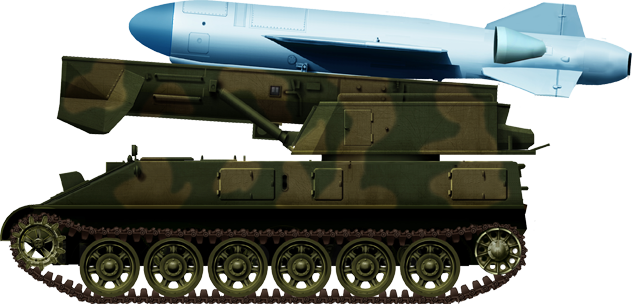
♆ 11/11/2024
 Serge CDS
Serge CDS
The vehicle possibly called "Serge" is a coastal defence system (CDS) operating the KN-01 (Kumsong-1) antiship cruise missile. The vehicle had been seen in regular yearly parade always showing between 9 and 12 vehicles and is firing a missile derived from the Chinese HY-2 Silkworm, itself based on the early Soviet P-15 Termit (SSN-2 Styx), now long reformed. The coastal mobile missile defence system is well developed by North Korea betwen at least two main vehicle, as a conventional deterrent towards the ROKS (South Korean Navy). The missile has indeed a comfortable range of 300 up to 450 km depending on estimates.
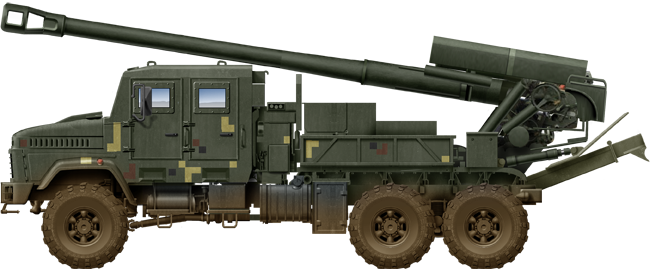
♆ 08/11/2024
 Ukrainian 2S22 Bohdana
Ukrainian 2S22 Bohdana
The 2S22 Bohdana is an armoured 155 mm NATO-standard wheeled self-propelled howitzer developed in Ukraine. The prototype was developed from the six-wheel-drive KrAZ-6322 truck with an armoured cabin and storage for 20 shells. Range went from 780 meters to 42 km, or 50 km with a rocket-assisted shells, notably the superlative M982 Excalibur shell with a rate of 5 rounds per minute.
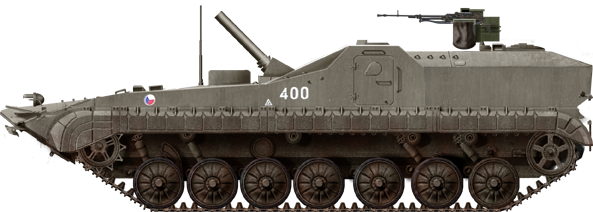
♆ 05/11/2024
 ShM vz.85 PRÁM-S (1985)
ShM vz.85 PRÁM-S (1985)
A self-loaded mortar system (SPM-85 PRAM) mounted on an elongated BVP-1 chassis was studied from 1981 as SVT in Czechoslovakia, produced in 1985-90. It is designed to provide permanent fire support for a mechanised battalion thanks to a high rate of fire and fast deployment. After the collapse of the Soviet Union and separation, then split of Czechoslovakia, the 12 production vehicles were distributed equally between Slovakia and the Czech Republic after agreement in 1992, just enough to fill a single battery each. Both also retained a vehicle for training. The vehicle is still in inventory, but never modernized, nor exported abroad.
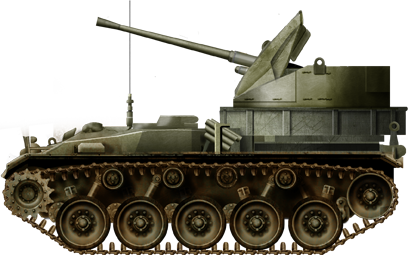
♆ 27/10/2024
 M19 MGMC (1945)
M19 MGMC (1945)
The M19 Multiple Gun Motor Carriage was a late WW2 self-propelled anti-aircraft vehicle based on the M24 light tank chassis, sporting two Bofors 40 mm guns and produced by Cadillac and Massey Ferguson Canada from late 1944. It was fielded too late to see action in WW2 but saw first combat in Korea in 1950 against North Korean forces. It was gradually replaced by the M42 Duster iand completely phased out in 1953 but still active in other armies, notably the Netherlands until 1978. In Korea it was used in several high profile battles such as Chosin reservoir and around the Pusan perimeter against Chinese forces in ground fire, especially efficient against massed Chinese PLA infantry charges.
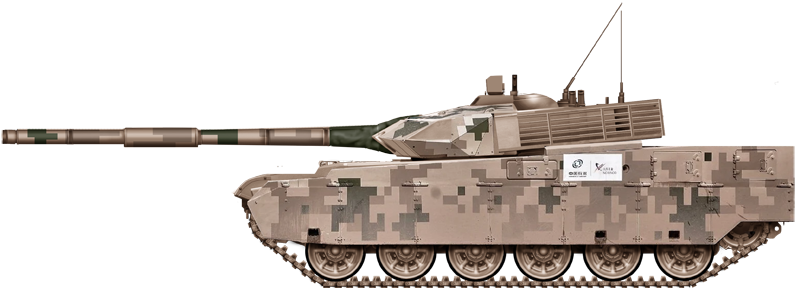
♆ 19/10/2024
 VT-4 (2017)
VT-4 (2017)
The VT-4 is the marketing name of the previous MBT-3000, a modernized main battle tank built by Norinco for overseas export developed from the Type 90-II/Al-Khalid or MBT-2000 in the 1980s with a powertrain from Ukraine, and later the MBT-3000 with Chinese powertrain, named VT-4 from 2009, developed as a co-operation with the First Inner Mongolia Machinery Factory and other companies. It was presented in 2012 Eurosatory, 2014 Norinco Armour Day, 10th China International Aviation & Aerospace Exhibition and marketed as the VT-4, sold since to Nigeria (6), Pakistan (44) and Thailand (62), tested also by Algeria and Brazil among others.

♆ 12/10/2024
 K9 Thunder (1999)
K9 Thunder (1999)
The K9 Thunder is a South Korean 155 mm self-propelled howitzer designed and developed by the Agency for Defense Development and private corporations such as Dongmyeong, Kia, Poongsan and Samsung for the Republic of Korea Armed Forces (ROKAF) and later manufactured by Hanwha Aerospace. The K9 howitzer was introduced in 1999 and the K9A1 in 2018, operating organically with the K10 Ammunition Resupply Vehicle variant. The K9A2 tested for production. It was also incredibly successful at export, by 2022, with a 52% global marjet share in this category: Egypt (K9A1/K10EGY), Poland (AHS Krab), Estonia (K9EST Kõu), Finland (K9FIN Moukari), India (K9 Vajra-T), Norway (K9/10 VIDAR), and Turkey (T-155 Fırtına I).

♆ 04/10/2024
 PTS-2 (1985)
PTS-2 (1985)
The Soviet PTS-2 is a tracked amphibious transport vehicle developed during the Cold War by the Soviet Union. It's a versatile military vehicle designed to carry troops, equipment, and supplies over water and rough terrain. The PTS-2 was an upgrade to the earlier PTS-M series, only used now by Russia (16 lost) and Ukraine. The PTS-2 like its precedessor is capable of traversing rivers, lakes, and marshy terrain with up to 12 tons cargo. In addition to 6-10 tons trucks it could carry up to 75 soldiers with full gear. Only a few were produced until the fall of USSR. Its current replacement is the PTS-4 accepted in 2011, based on the T-80 MBT drivetrain with T-72 components.
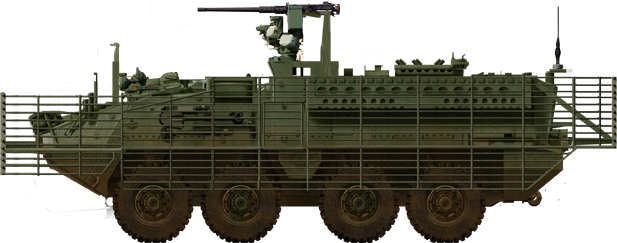
♆ 27/09/2024
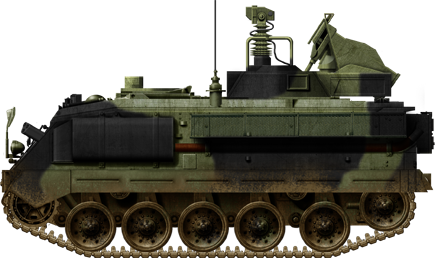
♆ 20/09/2024
 FV 438 Swingfire
FV 438 Swingfire
The FV438 Swingfire was an armoured anti-tank vehicle derived from the FV 430 series, a conversion of the FV 432 armoured personal carrier to accommodate a twin Swingfire anti-tank guided missiles launcher, with its reload system and 12 more missiles thanks to its two firing bins. It was introduced in the early 1970 in the British Infantry Regiments and Royal Armoured Corps, then after the 1977 reform to the Royal Artillery, then passed onto ATGM troops in Armoured regiments in the early 1980s. The FV 438 never saw action (but the missile was) and was phased out in 1985.
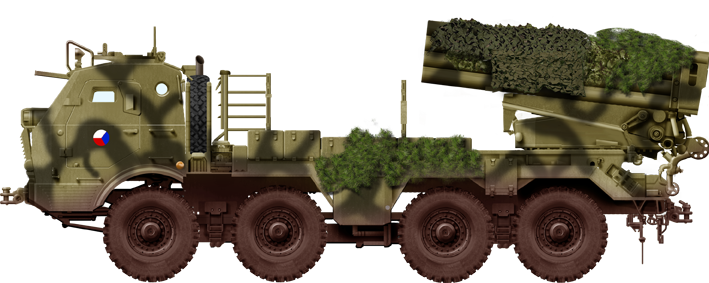
♆ 11/09/2024
 RM-70 (1972)
RM-70 (1972)
The RM-70 (Raketomet vzor 1970) multiple rocket launcher was developed in the cold war for the Czechoslovak Army as a national replacement for the Russian BM-21 Grad multiple rocket launcher. Mounted on a national 8x8 truck chassis and featuring proper protection, it was designed for enhanced performance over its parent and better protected, while still being considered as an area-saturation rocket artillery system. The RM-70 was introduced in 1971 and earned the NATO designation M1972. It was also exported to East Germany, Bulgaria and Libya before the end of the cold war and ends today across 21 armies, including North Korea building an unlicenced version.
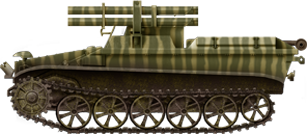
♆ 27/08/2024
 Borgward IV
Borgward IV
During World War II, the Wehrmacht had under its disposal three remotely operated demolition vehicles, the small Goliath (Sd.Kfz. 302/303a/303b), medium Springer (Sd.Kfz. 304) and heavy Borgward IV (Sd.Kfz. 301). The latter was not only the largest of the three, it was also capable of being manned directly, not "disposable" unlike the others, to release its explosive charge and retreat for a remote radio-controlled detonation at a larger distance. 1181 were made in three versions, Ausf A, B, C, and 56 of the panzerjäger Wanze with rockets for antitank actions in the street of Berlin in 1945.
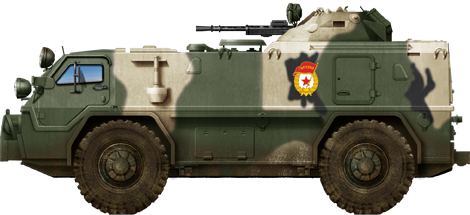
♆ 20/08/2024
 GAZ-39371 Vodnik
GAZ-39371 Vodnik
The Vodnik (sometimes traduced as "sergeant") or GAZ-3937, and its version GAZ-39371 comes as a 4x4 Russian high-mobility multipurpose military vehicle. Designed as a possible replacement for the legacy cold war BRDM-2 in 1987-88 it was relaunehd in the 2000s as a heavy modification of the civilian GAZ-2330 "Tigr" and development restarted in 1998. It was not adopted by the Russian Armed Forces in 2005, but saw however a limited production for export, use by special forces, and had been seen in action since in Chechnya, and by Donbass separatists from 2014. So far it was also exported also to Syria and Uruguay. In the recent war it also was seen in action with Ukraine (both captured) with the basic BTR-80 turret.
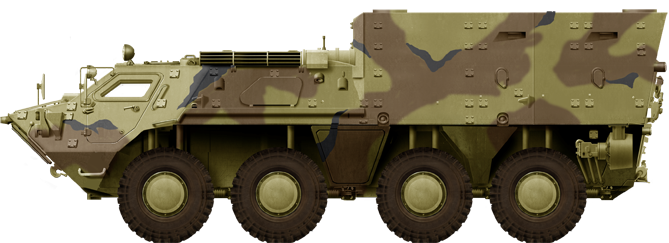
♆ 12/08/2024
 Ukrainian BTR-4KSh
Ukrainian BTR-4KSh
The Command vehicle variant of the BTR-4 family. Sharing the same rear enlarge compartment with the medical BSEM-4K, this vehicle saw a limited production overall. If the BTR-4K is hardly different from the regular BTR-4 apart extra communication sets, KSh is an upper echelon unit Staff and command vehicle. It had a combat weight of 18t, and a 7-man crew. The rear compartment is raised in order to accomodate more personal in better conditions in addition of extra communication sets.
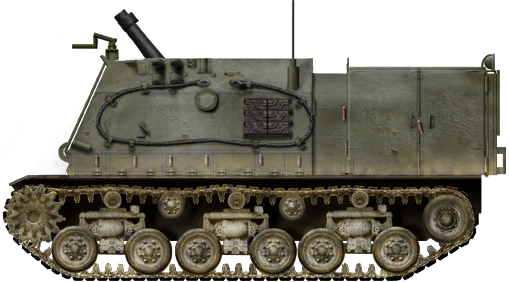
♆ 07/08/2024
 MakMat 160 mm SPM
MakMat 160 mm SPM
The Makmat 160mm Mortar carrier is an Israeli self propelled heavy mortar based on the M4 Sherman chassis, obtained in large numbers in the early years after Israeli independence. This artillery system was used during the 1973 Yom Kippur war and Lebanon campaign to provide fire support but provided limited protection. It was however a way to recycle a now obsolete chassis with c150 made between 1968, when it entered service until c1979. "Peace in Galilee" Operation was its last. It was retired soon after from service, replaced by M113 based mortar carriers.
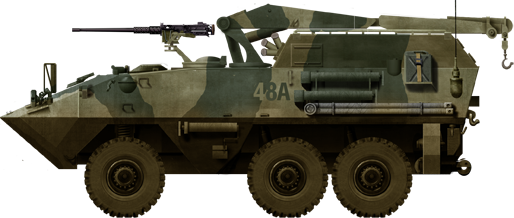
♆ 30/07/2024
 AVGP Husky
AVGP Husky
The Husky Armoured recovery vehicle (ARV) was a two-man crew 6x6 armoured vehicle derived from the Swiss Pirahna in the 1970s, as part of the AVGP family of vehicles designed and built in canada, the other two being the Grizzly and Cougar. The Grizzly was to provided organic mechanical support for the other two in operations. It was found so valuable as being life-extended to still be used as a maintenance and recovery vehicle for a new generation of wheeled AFVs of the 1990s such as the Bison ARV.
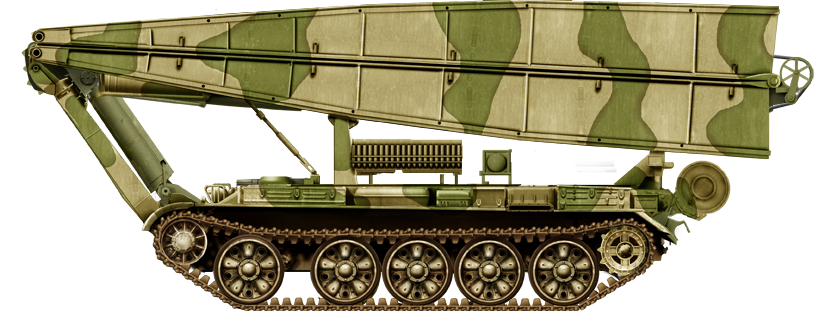
♆ 23/07/2024
 MT-55 AVLB (1962)
MT-55 AVLB (1962)
The MT-55 based on the Czech-built T-55 Main Battle Tankunder licence and was designed and produced by ZŤS Martin from 1962, with the development phase going on until 1967 followed by five pre-series vehicles. The MT-55A (Base T-55A) series production started in 1969 and went on until 1982 with a total of 1,762 vehicles in four variants, including 183 export MT-55KS and 458 East German BLG-60. It was also exported to Belarus, Egypt, Croatia, Georgia, India, Iraq, Myanmar, North Korea, Romania, Serbia, Slovakia, Slovenia, Sri Lanka, Syria, and Ukraine.
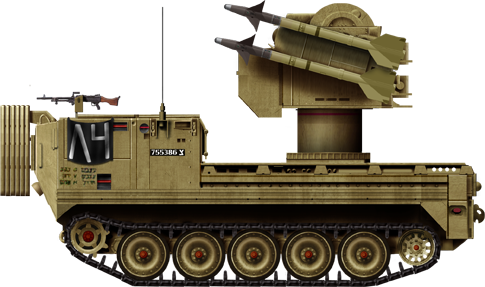
♆ 15/07/2024
 M48 Chaparral (1969)
M48 Chaparral (1969)
The first US SPAAML: The M48 Chaparral was quite unique in the long list of M113 armored personal carrier's variants: This was the combination of the M48 utility/cabin flatbed variant, fitted with MIM-72A missile manned launcher. It was intended to give an organic SAM defence to mounted infantry regiments, designed in 1965, produced from 1967 until 1981, in service at the end of the Vietnam war and retired in 1992 with circa 1,100 vehicles converted. The M48 Chaparral system was a quick solution after a failed purely army project, based on the AIM-9 Sidewinder, mounted on the M730 tractor, which entered service in 1969 and had it last hurrah in the Gulf War.
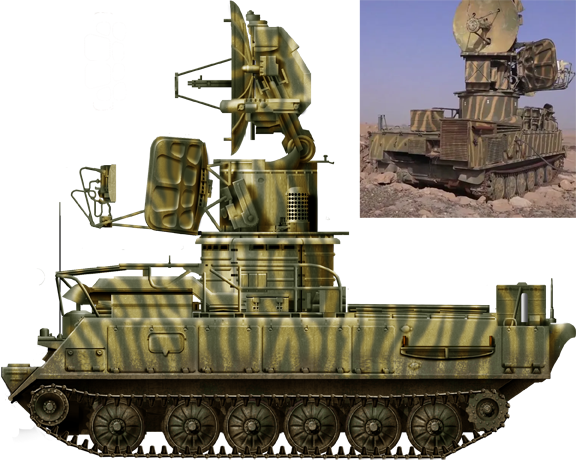
♆ 08/07/2024
 1S91 radar vehicle (1967)
1S91 radar vehicle (1967)
The 2K12 "Kub" became the mainstream Soviet mobile SAM and one of the key system fielded by the Warsaw Pact in the 1975-85 decade. Each 2K12 battery is seconded by a 1S91 (SURN vehicle, NATO "Straight Flush") 25 kW G/H band radar with a range of 75 km (47 mi). The vehicle was equipped with a continuous wave illuminator in addition to an optical sight. The TEL does note share the same chassis, the 1S91 being based on the GM-568 chassis developed and produced by MMZ. It is estimated that circa 100+ were made until 1985. It was also exported to some extent.
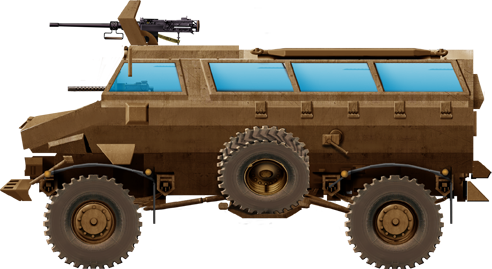
♆ 03/07/2024

 Windhoek Wolf & Wolf Turbo
Windhoek Wolf & Wolf Turbo
Namibia is now a seperate country, but before the end of Apartheid, it was basically a province of South Africa (SWA), with central funding and planning from Pretoria. A specific vehicle was developed there, the Wolf, in Windhoek, to replace the Casspir. Still today it's a relatively foggy vehicle, developed into further variants, and still in service in the Namibian Army. The latter had typically a shielded twin Browning mount atop the roof and an additional Browning 0.3 inches MG in a window port, manned by the co-driver. Quite some firepower in addition to its 12-12 fully equipped infantry/police. shorter and faster while keeping the mine-protection ability of previous SANDF Bush war vehicles, the Wolf is still a shadowy vehicle today with a small production by a newly independent state, Namibia. Trivia: A wolf Turbo II was used in the clip "dirty harry" from Gorillaz, shot in the Namibian desert. src.
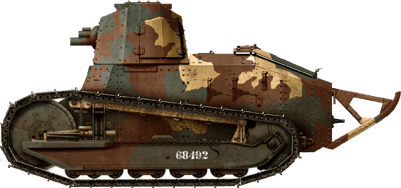
♆ 25/06/2024
 French FT 75 BS
French FT 75 BS
In 1918 the French Army staff was enthusiastic about the Renault FT and ordered perhaps 5000 vehicles in several variants for the great offensive planned in the spring 1919. It was declined already into multiple variants like a communication vehicle, and it was felt a version with a beefier gun would be needed for the more serious fortifications of the Hindenburg line. After a few prototypes, some 970 Schneider 75mm howitzers were ordered for the new 'Char FT 75BS' designed for having a a more powerful weapon, to demolish obstacles and carry a bridge to facilitate passage of remaining tanks, gap walls and large anti-tank trenches. A distant cousin of WW2 Chuchill AVRE Petard bridgelayer. With the German capitulation, only 39 were received before the order was cancelled. They were in part still in service by 1940.

♆ 18/06/2024
 BVP-1
BVP-1
The BVP-1 (bojové vozidlo pěchoty or "Infantry Fighting Vehicle" was the Czechoslovak designation for the BMP-1, produced in Czechoslovalkia. The BVP-1M was modernized with six MD smoke grenade launchers at the rear of the turret and flotation sides-skirts/mudguards from the BVP-2. It was the base for many specialized vehicles, the AMB-S, SPM-85, PRAM-S, BVP-1K, BPzV "Svatava", BVP-1 "Strop", BVP-1 "Strop" (Thz LOS and PzPK Sněžka were made from the BVP-2). This full review will come with either dedicated articles or sub-variants if enough info are found.
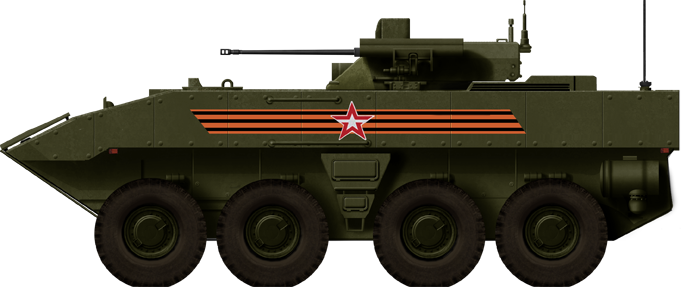
♆ 13/06/2024
 VPK-7829 Bumerang
VPK-7829 Bumerang
The VPK-7829 Bumerang is a modern amphibious armored personnel carrier (APC) developed by Russia, designed to replace legacy Soviet-era BTR-60/70/80s in the Russian military. The Bumerang was designed as amodular platform and new family of wheeled combat vehicles for different configurations and roles on the battlefield. It was to be declined into an infantry fighting vehicle, command vehicle or ambulance as base versions. Base armament is a 30mm automatic cannon, coaxial 7.62mm machine gun and ATGMs, and features advanced composite armor with an active protection systems (APS) againsty ATGMs. It is an amphibious vehicle, with a a crew of three (commander, driver, and gunner) and eight fully equipped infantry and featuring modern communication, navigation, and fire control systems to enhance situational awareness and coordination on the battlefield. It was first revealed in the 2015 red square parade, but yet to be seen fielded to any unit.
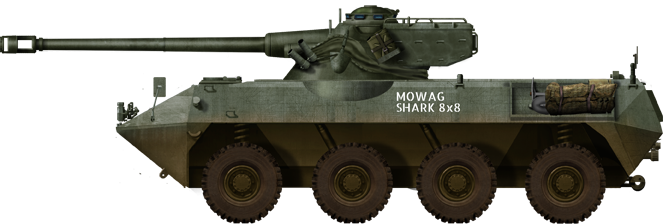
♆ 10/06/2024
 Mowag Shark (1982)
Mowag Shark (1982)
The Mowag Shark is an armored personnel carrier and IFV produced by MOWAG Motor Car Factory, Kreuzlingen, Switzerland. It stayed at prototype stage with three built. It was a further development of the Piranha 1, equipped with steering on front and rear axles, reworked suspension and a central fifghting compartment tailored for a large variety of weapons stations. It was tested in Switzerland, Germany and Canada featuring the FL-12 turret, Oerlikon 30 mm GDD-BOE turret, Rheinmetall RH 105-11 turret or Wildcat anti-aircraft turret and Crotale SAMs as well. Many other variants were proposed to the international market. However marketing ceased in 1985. The Shark was never produced. The APC is now on display at the Swiss Military Museum in Full.
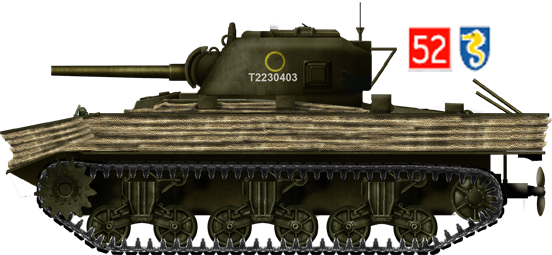
♆ 06/06/2024

 M4 Sherman DD (1944)
M4 Sherman DD (1944)
DD or duplex drive tanks ("Donald Duck tanks") were an amphibious swimming conversion of various tank developed by the British during the Second World War. The most common and prominent among these was the Sherman DD, based on the M4 Sherman medium tank. It was prominently used in Operation Overlord by the Western Allies, during and after the Normandy Landings of June 1944. The most prominent aspects was their canvas flotation screen to float but the acronym came from their propellers installaton connected to the tranmission to move forward. They were part of the many conversions collectively known as "Hobart's Funnies" instrumental in the invasion of Europe. This is a sister article to the Landing Craft, Tank on Naval Encyclopedia
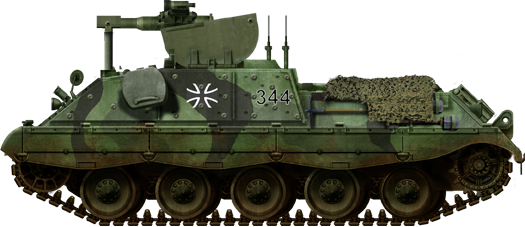
♆ 03/06/2024
 Raketenjagdpanzer 4 Jaguar 2 (1983)
Raketenjagdpanzer 4 Jaguar 2 (1983)
The Raketenjagdpanzer 4 Jaguar 2 was the last West German ATGM tank destroyer. It was produced by Henschel and Hanomag to 162 units and operated by the Bundeswehr until 1993, converted from now obsolete Kanonenjagdpanzers. The main gun was replaced by a TOW launcher on the roof and protection enhanced by applique armour. In 1989 they were upgraded to the TOW 2. Eventually from 1993 they were superseded by the Jaguar 1A3.
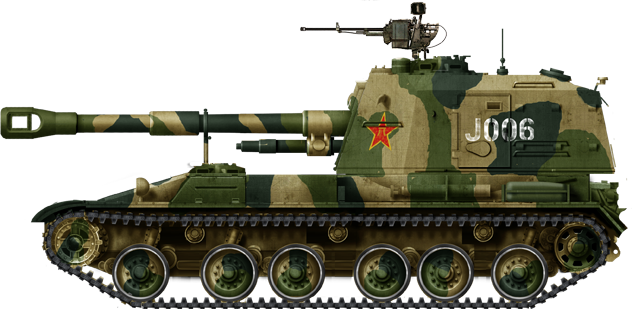
♆ 30/05/2024
 Type 83 SPH (1983)
Type 83 SPH (1983)
The Type 83 is a 152 mm self-propelled howitzer used by the People's Liberation Army of China (PLA). It was originally developed by Factory 674 in the late 1970s. Dates are not known, 1977 is is often given for the programm launch date. The prototype was completed in February 1980, production authorized in 1983 and ended in 1990. Many NATO analysts compared it to a "Chinese 2S3". It had indeed basically the same gun, a modified 152 mm gun. This was first modern self-propelled gun in the PLA, and after being upgraded to the PZL83A standard, is still service in today alongside the more common PLZ-05 Self-Propelled Howitzers, about 100, in rear echelon batallions. It's a tiny droplet among 4,400 such systems.

♆ 27/05/2024
 2S19 MTSA
2S19 MTSA
The 2S19 Msta-S is a 152.4 mm self-propelled howitzer manufactured by Uraltransmash, entering service in 1989. A radical departure from previous designs, it was the designated successor to the 2S3 Akatsiya. Its chassis was partly based on the T-80, but with the the T-72 diesel engine and a tailored turret with a new 2A64 L47-caliber howitzer capable of 24 km range up to 36 km with rocket-assisted rounds. An estimated 1130 were manufactured until today, production of the 2S19M and of the improved 2S35 Koalitsiya-SV is going on. The vehicle already saw action in the Second Chechen War and in the current Russo-Ukrainian War. It was also exported to 6 countries, mostly successors states.
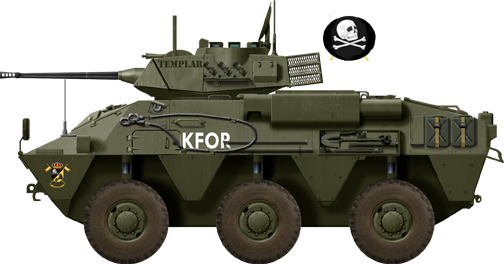
♆ 23/05/2024
 SBS VEC M1 (1980)
SBS VEC M1 (1980)
Called at first Pegaso BMR-625 VEC, these were not infantry fighting vehicles but reconnaissance Combat Vehicles (Vehículo de Exploración de Caballería) variants of the previous BMR APC from ENASA, Valladolid, with the prototype accepted in 1979. The vehicle was built in 1980-84 and later modernized by Santa Barbara Sistemas as the M1. The initial vehicle had an Italian CT20 turret, alternative to the CT90 (AML-90 turret) and later fixed for the main production to the M242 Bushmaster cannon, in a reworked two-seat turret. From 350 vehicles delivered to the Ejercito, taking part in numerous redeployments abroad, only 153 M1 remains in service today, waiting replacement by the 8x8 dragon program.
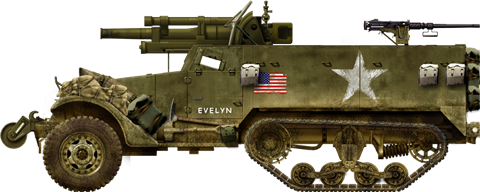
♆ 19/05/2024
 T19 HMC
T19 HMC
The T19 Howitzer Motor Carriage (HMC) was a 105 mm (4.1 in) howitzer, mounted on a M3 Half-track chassis, with 342 converted between January 1942 and April 1942 by Diamond. They were used by the US Army alone in World War II as self propelled artillery, making their combat debut after Operation Torch in north Africa. It was defended by an air-cooled .50 in (13 mm) M2 machine gun. It took part also in the Allied invasion of Sicily and the Italian Campaign, ending with the invasion of southern France in August 1944 and soldiering into southern Germany until the end of the war in Europe.
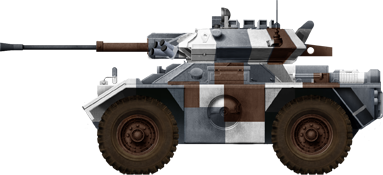
♆ 15/05/2024
 FV721 Fox CVR
FV721 Fox CVR
The FV721 Fox Combat Vehicle Reconnaissance (Wheeled) abbreviated as CVR(W)) was a 4×4 armoured car manufactured by ROF Leeds. It was dsigned for the British Army replacement of the 1950 Daimler Ferret (1951) scout car, itself a replacement for the legendary WW2 Daimler Dingo but also the ageing Saladin armoured car (1956). The Fox saw service first with B Squadron, 1st Royal Tank Regiment at Tidworth from 1975 onwards, until retired from service in 1993–94. Some 325 were made by Royal Ordnance Leeds, including 200 for the British Army and the remainder for export. It had received no true replacement in a wheeled form yet.
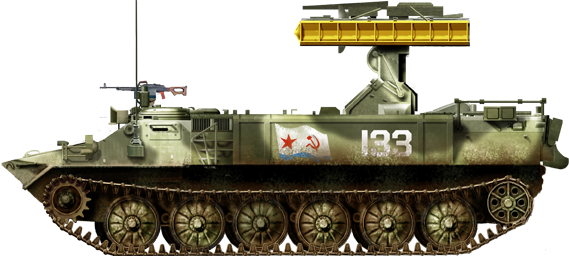
♆ 12/05/2024
 9K35 Strela 10
9K35 Strela 10
The 9K35 Strela 10 is a short-range surface-to-air missile system designed in the 1970s by USSR. Based on a versatile platform, the MT-LB tracked vehicle, it presents a low profile and its large useful internal space is used for spare missiles. Its twin-arm, paired launch canisters are visually aimed, using optical and infrared-guidance to fire the short range 9M37/37M/37MD/9M333 missile, primarily to engage low-altitude threats such as helicopters. GRAU "9K35", NATO reporting name SA-13 "Gopher". The number built are unknown. The Strela 10 saw action in multiple wars from 1979 Angola to Ukraine in 2022-24. It was declined into six variants and exported to 30 countries.
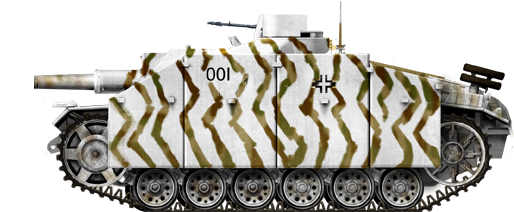
♆ 06/05/2024
 Sturmhaubitze 42
Sturmhaubitze 42
The Sturmhaubitze 42 or "StuH 42" was a self-propelled gun developed in Germany during World War II and based on the StuG III F/8 and later the Ausf G. This was a conversion to the G L/28 howitzer to serve as versatile support vehicle, in service by 1942 (Leningrad) and from 1943 notably at Kursk and Kharkov. In 1942, the StuG III Ausf. F8 received a 10.5 cm (4.1 in) howitzer (Haubitze) and so was redesignated StuH 42 (Sturmhaubitze 42). Under the waffenamt designation system it was called the Sd.Kfz 142/2. from 1212 to 1311 were made depending on sources until production stopped at Alkett in February 1945. They fought in STUG brigades of the eastern front and a few saw action in Italy as well.
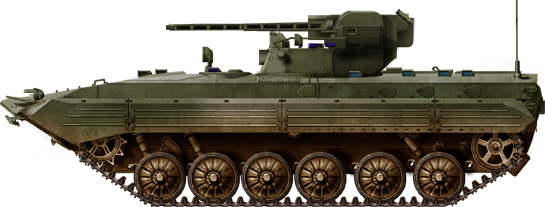
♆ 30/04/2024
 BMP-1U Shkval
BMP-1U Shkval
The BMP-1U is a 1999 upgrade (publicly revealed in 2001) of the Soviet 1960s BMP-1 Infantry Fighting Vehicle. The main effort is to replace the former turret with a much more capable KBA-105 Shkval ("squall") remote weapon system, comprising a 30 mm autocannon, two ATGMs, a coaxial light MGs, a grenade launcher and six smoke dischargers. Alas, the plan to produce 400 petered out in 2006 after being approved for production. They were sold instead to Turkmenistan and Georgia with about 12 retained in Ukrainian service. The Georgian BMP-1Us saw acion in the Russo-Georgian war, with at least three captured, one presented as an Ukrainian war prize.
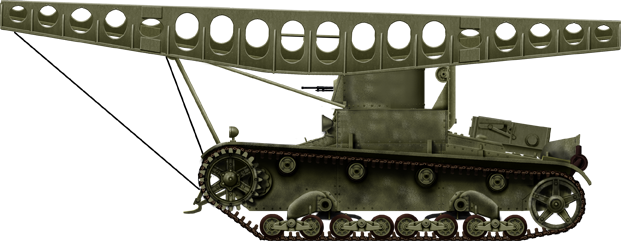
♆ 27/04/2024
 ST-26
ST-26
The ST-26 was the first Soviet Bridgelayer. It was based on the famous T-26, derived from the British Vickers 6-ton tank or Mark E. Three prototypes were tested early on in 1933 and the cable laying variant was retained for a small production of c70 vehicles dubbed ST-1. However due to poor maintenance a few were really serviceable in the summer of 1941. Improved variants were not produced either, all focus placed on purely combat tanks during the war. They nevertheless gave a base to Soviet engineering teams, making possible the concept of "deep battle". Second article on the T-26 variants. Next stops: The TT-26 and SU-5.
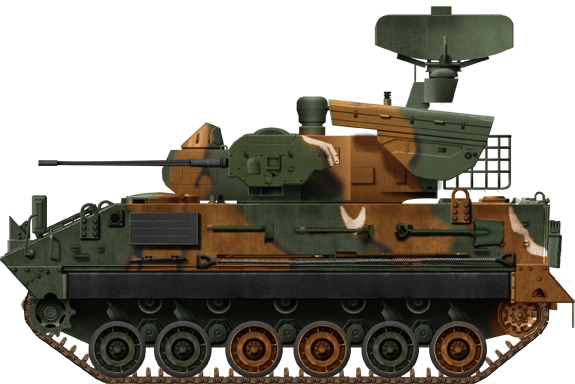
♆ 24/04/2024
 K30 Biho SPAAG
K30 Biho SPAAG
The South Korean K30 Biho ("Flying Tiger") is a twin 30 mm self-propelled anti-aircraft vehicle (SPAAG) developed to meet operational requirements of the Republic of Korea Armed Forces which suits its operational conditions. Its guns are electro-optically by a surveillance radar system. The vehicle is mounted on a K200 chassis shared by the K-SAM Chunma and is supposed to complement the more numerous K263A1 Chungung Vulcan. 176 were delivered by Hanwha Defense from 1999. In 2013-14 it was modified with a twin tandem Shinghung SAM system in complement to its main gun, making it an hybrid solution between pure SPAAG (Guns) and SPAAML (missiles) unofficially called SPAAGML. Closest competitor is the Russian 2422 Tunguska. Based on this, the K30 Biho which entered service in this new format by 2019, competed the same year against the Tunguska and Pantsir in the Indian SPAD-GMS procurement, until cancelled for the domestic Atmanirbhar Bharat program.
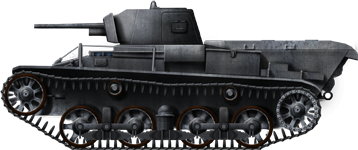
♆ 22/03/2024
 Landsverk L-10
Landsverk L-10
The first Swedish Tank The Landsverk L-10 (Army stridsvagn m/31 or strv m/31) was a Swedish late interwar medium tank. It was the second attempt by AB Landsverk to produced a tank suitable for a large production which developement went from 1930 and 1933, and it was quite advanced for its time (all-welded constructio, periscopes) and featuring a rapid fire Bofors 37 mm anti-tank gun, two Browning M1917, up to 24 mm of armour. But after being tested, only three prototypes were evaluated, but production was not greenlight. At last it was a solid base to develop the next iteration, the L-30.
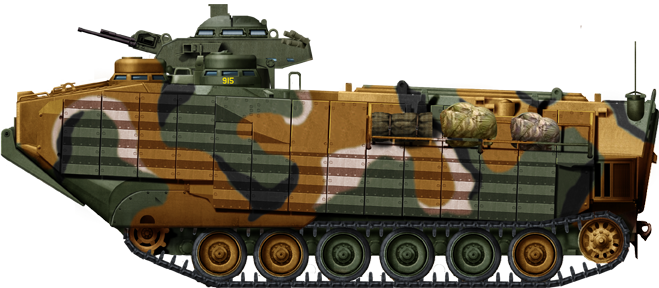
♆ 19/04/2024
 AAV-7A1
AAV-7A1
An update and expansion, with twice as more data and 6 more illustrations of the old post on the LVTP-7, waiting to be aired on tank encyclopedia. The vehicle replaced the Vietnam era bulky LVTP-5, and was of the same generation as the Bradley and Abrams program, but intended as the main mount for the Marines (USMC). Upgrades programmes, sub-variants, planned replacement lineage.
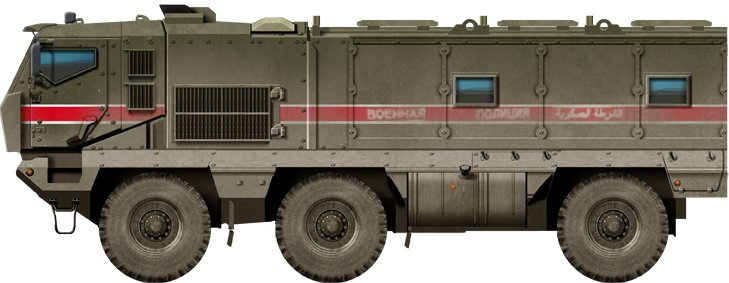
♆ 15/04/2024
 Kamaz Typhoon
Kamaz Typhoon
The KamAZ-6396 Typhoon is a family of Russian Modular, Armored, Mine-Resistant Ambush Protected (MRAP) vehicles made by the truck builder KAMAZ. It is a whole family of 6x6 vehicles under the Typhoon program. As of 2021, 330 Typhoon-K had been received. The Typhoon exist indeed in 4x4, 6x6 and 8x8 variants sharing a lot of elements, manufacturer code 5388, 6396 and 6368. This post is about the 6396 and its single cargo variant Kamaz 63968. Export customers so far are Turkmenistan, Uzbekistan and those captured by Ukraine. In April 2024, 28 Typhoon cargo and 9 Typhoon APC were either lost or captured in the current war in ukraine.
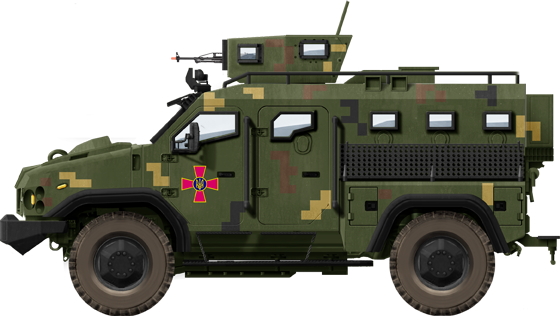
♆ 12/04/2024
 Varta MRAP
Varta MRAP
The Ukrarmor Varta was first designed in 2015 by the young company as an entry APC to proactively answer a need from the Ukrainian National Guard. The result was a vehicle using Swedish armour, Germnan tyres and other foreign components but a Varta turbodiesel engine rated above 350 hp. Capable of carrying eight infantry, plus the driver and a gunner, the Varta was approved from production in 2016 and until 2020 some 80 were delivered to various services, 37 lost so far in the current war as of April 2024.
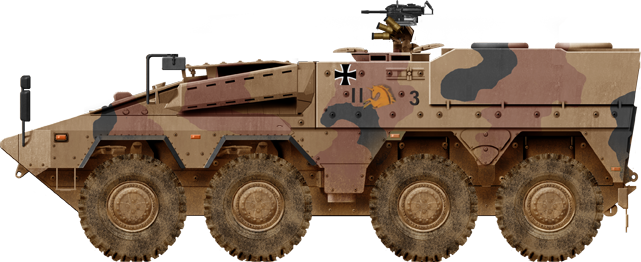
♆ 09/04/2024
 GTK Boxer
GTK Boxer
The Gepanzertes Transport-Kraftfahrzeug Boxer (GTK) MRAV is a modern all-wheeled German multirole armoured fighting vehicle, featuring an innovative concept of rapid plugin mission modules. Partners changed during the development, and today the vehicle is produced by Munich-based ARTEC GmbH industrial group, after a development by OCCAR (Organisation for Joint Armament Cooperation). The joint joint venture between KMW and Rheinmetall Military Vehicles GmbH which procured R&D, has a 64% stake. Other customers after Germany (which fields 403) are the Netherlands (238), Lithuania (81), Australia (211) and the UK (623) with Ukraine expected to receive 36 RCH-155 derivative. Production goes on with Algeria, Qatar, Bulgaria, whereas Japan, Switzerland, Slovenia, and Spain were also interested.
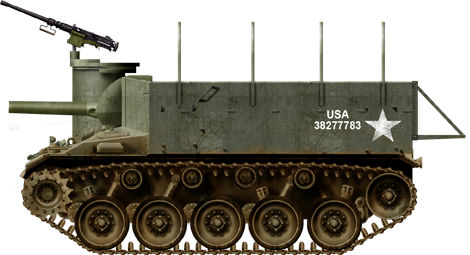
♆ 06/04/2024
 M37 105 mm Howitzer Motor Carriage (1945)
M37 105 mm Howitzer Motor Carriage (1945)
The M37 105 mm Howitzer Motor Carriage was a 105 mm howitzer self propelled gun developed by the United States in WW2. The staff requested Cadillac while working on the M24 Chaffee to come up with derivatives, and one of these was a self-propelled howitzer. It was standardized in 1945 but not produced in time before the end of WW2. It saw combat in the Korean War and remained part of the U.S. military until being replaced in the late 1950s, many being used by the Spanish Army afterwards. Approximately 316 were built.
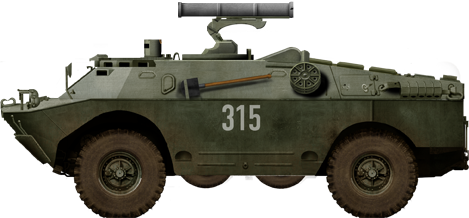
♆ 03/04/2024
 9P148 Konkurs
9P148 Konkurs
Part of the BRDM-2 numerous variants tree, the 9P148 Konkurs was a tank-hunter which saw a limited (and discuted) production from 1974 to 1982. It was caracterized by a fixed launcher with five wire-guided 9M113 "Konkurs" (AT-5 Spandrel) missiles, alternative later to the the 9M111 "Fagot" (AT-4 Spigot), reloaded from inside with up to either 16 or 20 missiles in store. NATO called it the "BRDM-3" until it was rectified. The 9P148 was also exported to the Warsaw Pact as well as many other countries, including Armenia and more recently India while being still used today. It was also copied by China as the AFT-9. In the current war in Ukraine, Oryx states that four Russian one were lost in action, including one captured whereas Ukraine lost 18.
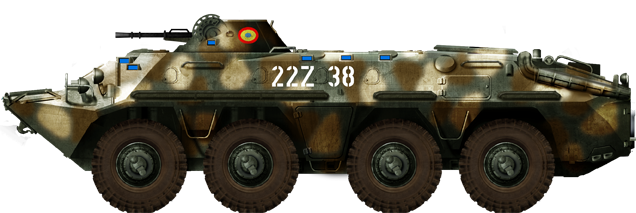
♆ 31/03/2024
 TAB-77
TAB-77
The TAB-77 (Model 1977 Armored Amphibious Transporter) was an armored personnel carrier designed and manufactured in Romania. It constitutes the combat and transport for the infantry in mechanized units. This was the successor of the TAB-71, and was in turn replaced by the B-33 Zimbru, now in turn phased out. The reference model for this new national industrial endeavour, was the Soviet BTR-70 APC, which was purchased for evaluation but not adopted. The TAB-77 was a different at many levels, although still very close in general appearance. Designed in the 1970s (details are foggy), the TAB-77 entered service in 1977, hence the name, and it was manufactured either from 1978 or 1982, all the way to the end of the cold war in 1991. Romania also manufactured the BTR-70 under Soviet license, but only for export and for the German Democratic Republic. So it is not counted here as being a "pure" BTR-70. It was marketed by ROMARM.
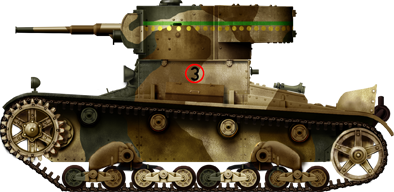
♆ 29/03/2024
 Turkish Tanks and AFVs in WW2
Turkish Tanks and AFVs in WW2
Before emerging in the recent decades as one of the largest arms's manufacturer and producer, a pillar of NATO anchored to the middle east, Turkey gathered the largest collection of armoured hardware of the time. In 1950 its inventory comprised all manner of vehicles from all belligerents of WW2, From USSR to Britain, France, Germany and the US. Most of its inventory was not even willfully purchased, it was donated most often by these players in order to gain influence and favours. Neutral Turkey was indeed heavily courted in WW2, pressed to join either side due to its strategic situation, population and resources. A new page and full review of the Turkish tank and AFV park from its roots to the cold war.
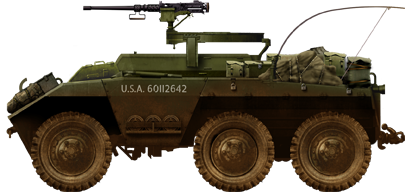
♆ 27/03/2024
 M20 Command Car (1942)
M20 Command Car (1942)
The M20 scout car was based on the M8, but tansformed with a low, armored open-topped superstructure plus the same AA ring mount for an M2 heavy machine gun, while the crew carried a bazooka, grenades and mines. The M20 was the result of a late 1942 extension of the M8 Greyhound programme, and later fusion between the T26 command vehicle and T20 armored personnel and cargo carrier. It should have been named M10 but renamed to avoid confusion with the Wolverine. It could act also as VIP transport and carried additional radio equipment (like Patton's own M20). 3,680 M20s were built by Ford in 1943–1945, they served at first with tank destroyers units, in Italy and Western Europe and from Normandy to Germany.
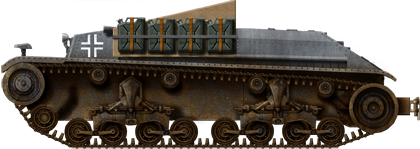
♆ 25/03/2024
 Mörserzugmittel 35(t)
Mörserzugmittel 35(t)
In 1942, the now old Czechoslovak tank LT vz.35 used by the Wehrmacht wince 1939 under the name PzKpfw 35 (t) was consider no longer frontline capable and too vulnerable, especially on the eastern front. It could have been decided to send them back for anti-partisan operations, but there was a real need for artillery towing vehicles, and therefore, in March 1942, WaPrüf 6 decided to test a conversion as artillery tractor. After the prototype by Alkett, 49 were converted at Skoda works in 1942-43. Their fate is unknown.
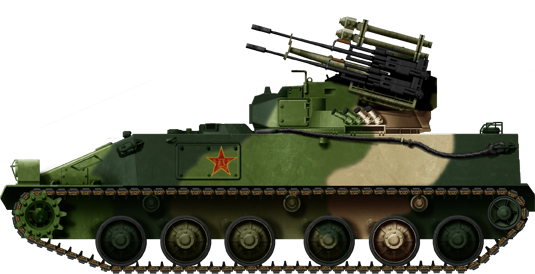
♆ 23/03/2024
 Type 95 (PGZ-95) SPAAA
Type 95 (PGZ-95) SPAAA
The PGZ-95 or Type 95 is a self propelled anti-aircraft artillery (SPAA) of the Popular Liberation Army (PLA) of China, its equivalent to the Soviet Tunguska, combining guns and missiles. It presents four 25 mm autocannons and four fire-and-forget type QW-2 short range infrared homing missiles. First displayed at the Beijing Military Parade in 1999 production has been going on since with some 270 made estimated, including Type 90-II/Type 90-III prototypes and only variant, the PGZ-95 (command) battery vehicle. So far, it never was exported. Its successor is the improved PGZ-04/A.

♆ 21/03/2024

 MGCS (2030)
MGCS (2030)
It's rare to do some prospective, but there has been recent development about probably the most important ground forces procurement program in Europe, it's main battle tank at the horizon of 2030-2040. This project is called the "Mobile Ground Combat System". Under this rather generic aconym lays the difficult replacement for the beloved de facto European Tank, the German Leopard 2, now a 46 years old platform, and the more recent, but more confidential French Leclerc. In the wake of French-German cooperation (which already failed in 1963), the launch of the 2017 program aimed at starting delivery in 2035. Impulsed by Politicians just like the SCAF it seems however with the war in Ukraine by 2022, emergency and constant industrial disagreements does not bodes well for the future of the program. The lead was to be shared in KNDS (2015 merger between German KMW and French Nexter) and Rheinmetall, KNDS presenting in 2019 a nice mix, the EMBT (nicknamed "Leoclerc") but things had changed since and by 2024 seems less optimistic. What's the program status as of today ?
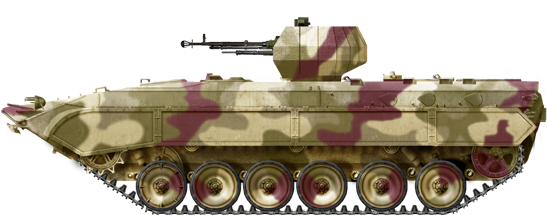
♆ 18/03/2024
 Boragh IFV (1991)
Boragh IFV (1991)
The Boragh is an Iranian Armoured Personal Carrier based on a reverse-engineered Chinese WZ 503 APC, itself based on the Type 86, a copy of the Soviet BMP-1. It differed from both by several elements, being lighter, with a better engine and M113 roadhweels, and also tailored side skirts for protection. Eight variants are known in existence, but only three gained production status. Development started in 1986 and up to 410 are reported in service with the Iranian Army.
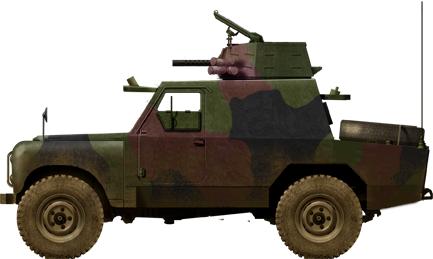
♆ 14/03/2024
 Shorland Armoured Car (1969)
Shorland Armoured Car (1969)
This conversion of the Land Rover Mark II was created to deal with the 1970s troubles in Northern Ireland, tailored to supplement the hard-pressed Humber Pig, for the Royal Ulster Constabulary (RUC). But given the popularity of the Land Rover worldwide, this cheap adaptation by Short & Harand of Belfast als became a best-seller, widely exported across the world and declined in five main Marks and several sub-variants. Construction goes on today in many places, licenced or unlicenced. This article will be split in two parts.
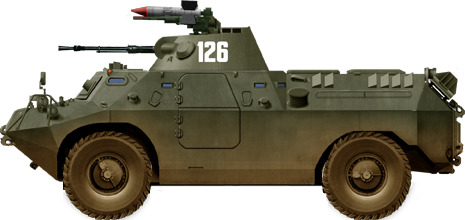
♆ 11/03/2024
 D-944 PSzH (1969)
D-944 PSzH (1969)
The Soviet BRDM-2 was widely adopted by the Warsaw Pact and appreciated as cheap, simple and versatile. Soon it appeared ideal for local industries, Hungary thus developed from 1963 the D-442 FUG amphibious reconnaissance vehicle. However later was developed a better armed variant called the D-944 PSZH (Páncélozott Személyszállító Harcjármű or "armored personnel carrier"), still amphibious but NBC and with a turret, and produced from 1971 to 1980. It was also exported to East Germany (Schützenpanzerwagen PSH), Czechoslovakia, and Iraq. The last were still in operations in the 1990s.
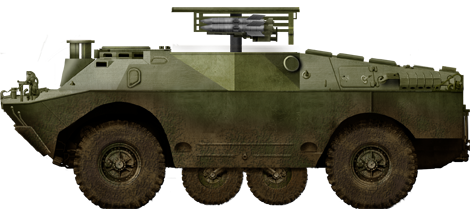
♆ 08/03/2024
 9p122/9p33 Malyutka (1968-84)
9p122/9p33 Malyutka (1968-84)
The 9p122 was a derivative tank hunter of the BRDM-2 standard Soviet 4x4 armoured car, armed with the new 9M14P Malyutka ATGM (NATO AT-3 Sagger). In 1971 production was superseded by the better 9P133 sometimes called "Malyutka-M" armed with the better 9M14P Malyutka-M anti-tank missiles and "Malyutka-P" (AT-3C Sagger C) or 9M14P1 missiles; More than 1400 combined were manufactured by Arzamas until 1984. It was also used by Romania and East Germany, and exported.
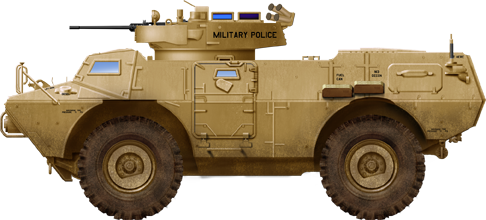
♆ 05/03/2024
 M1117 Armored Security Vehicle (1999)
M1117 Armored Security Vehicle (1999)
The M1117 Guardian or "Armored Security Vehicle" (ASV) is an internal security vehicle derived from the Cadillac M706 (V-100 and V-150) Commando. It was developed in the late 1990s for the US Military Police Corps and replaced the said Vietnam era CGC Commando, with the first prototypes presented in February 1997, and mass production between 1999 and early 2000. The ASV saw action in Afghanistan and Iraq and was exported as well, to Bulgaria, Afghanistan, Greece, Iraq, Colombia, Kosovo, while Canada had its own variant the TAPV (Textron Tactical Armoured Patrol Vehicle). It was the first US mine and IED protected vehicle, advantageously replacing the HMMWV. This article will be followed in the future by three related standalone articles, the M1117 ICV APC, the M1200 Armored Knight and the Textron Canada TAPV.

♆ 02/03/2024
 Merkava I (1979)
Merkava I (1979)
The Merkava Main Battle Tank is today one of the most singular, notably because it did not came from traditional actors/manufacturers of the type, located mostly in the northern hemisphere. This was the first designed and built in the Middle east, but also with a range of unique features, pretty unique in that restricted club. The Merkava ("chariot") was first designed in the early 1970s, right after, and taking lessons from, the 1973 Yom Kippur war, under General Israel Tal. This flagship of the IDF has some influences but became unique in design choices, which proved worthwile as the type is still in service today after half a century, 45 years of service with the latest Mark IV Barak, and replacement in sight, with the Carmel developed from 2012 by IAI, and still ongoing.
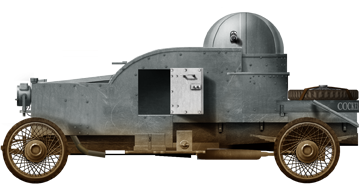
♆ 29/02/2024
 Sava Armoured car (1914)
Sava Armoured car (1914)
Only three of the SAVA armoured car, an improved model compared to the earlier Minerva, were built at Antwerp by the Societe Anversoise pour Fabrication de Voitures Automobiles (S.A.V.A.) before the city fell to the Germans. It had a powerful engine, reinforced chassis and more elaborate armour, including a half-turret. They saw action all along the war, and one served as police vehicle until 1923.
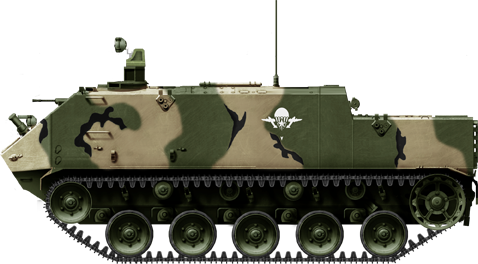
♆ 26/02/2024
 BTR-MDM Rakushka (2013)
BTR-MDM Rakushka (2013)
The BTR-MDM Rakushka-M or simply Rakushka is an armoured personnel carrier, based on the hull of a BMD-4M, and designed for the VDV or Russian paratroopers. It was notably designed to operate alongside and protected by the BMD-4M IFV, providing protected mobility for an entire airborne infantry section. Revealed in 2012 for the MD and 2013 for the MDM, then paraded in 2015, the Russian MoD plan to built 2500 of these light amphibious APCs.
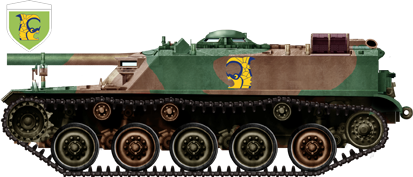
♆ 24/02/2024
 Type 60 Self-propelled 106 mm Recoilless Gun (1960)
Type 60 Self-propelled 106 mm Recoilless Gun (1960)
The Type 60 Self-propelled 106 mm Recoilless Gun was a light anti-tank vehicle developed by Japan in the late 1950s, mounting two M40 106 mm recoilless rifles as main armament. It was close technically to the Type 60 APC but was developed by Komatsu between 1956 and 1960. Overall, 252 were made by Komatsu until 1977 (later upgraded as the A-C variants) and it stayed in service until 2008, so well over .
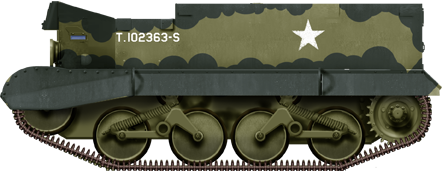
♆ 21/02/2024
 T16 Universal Carrier (1942)
T16 Universal Carrier (1942)
The T-16 followed the British universal carrier, as an upgraded version of this first armoured personal carrier of WWII. The output Ford was capable meant 13,000+ T-16 were manufactured in Massachusetts, mostly used by the British and Canadian Armies from 1943 up to the end of the war, on all fronts. British designation was T-16 Mark 1, but there were more variants along the way. It was a towing vehicle for light field artillery, ammo carrier, personal and supply carrier. The whole programme was designed for and under Lend-Lease.
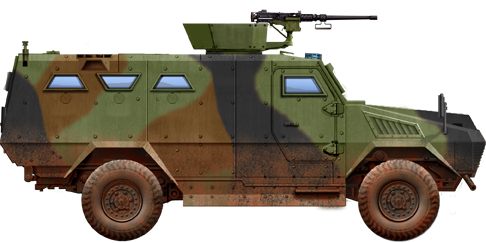
♆ 18/02/2024
 ACMAT Bastion (2012)
ACMAT Bastion (2012)
The Bastion is a modern French armoured personnel carrier, manufactured by ACMAT (Ateliers de Construction Mécanique de L'Atlantique), entering service in 2012. It was marketed to customers in North America and Oceania via Mack Defense and is now produced by AM General. Evaluated and adopted by the French special Forces in its main PATSAS variant, the Bastion APC is mostly exported and present in the armies and police of Armenia, Burkina Faso, Cameroon, Congo-Brazzaville, Chad, Ethiopia, Gabon, Ivory Coast, Kenya, Kosovo, Mali, Saudi Arabia, Senegal, Somalia, Sweden, Tanzania, Togo, Tunisia and Uganda.
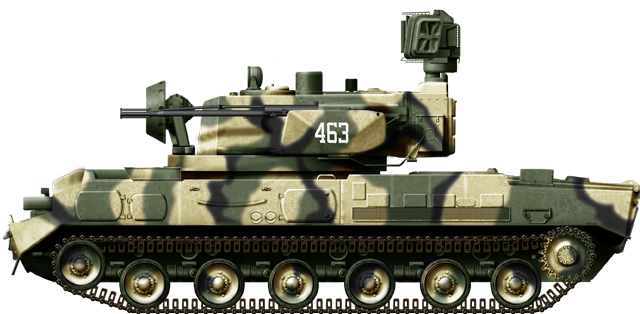
♆ 15/02/2024
 2K22 Tunguska (1982)
2K22 Tunguska (1982)
The 2K22 Tunguska is a Soviet tracked self-propelled anti-aircraft gun combined with a surface-to-air gun/missile system, day and night sights and capabilities, and offering full protection for infantry and tank regiments, notably against helicopters, even cruise missiles in the latter version. NATO reporting name for its short-range missiles is SA-19 "Grison". This replacement for the older ZSU-23-4 Shilka was fielded since 1982 in the Soviet Army and saw service however more recently with the Russian Army (c250 in service), in the Georgian war and current war in Ukraine.

♆ 12/01/2024
 Type 63A Tank
Type 63A Tank
With the need to replace the old Type 63s and planned operations on Taiwan it was decided a program to either create a new vehicle or upgrade the original as a stopgap, in several directions. First, due to operational conditions, sea travel speed and seaworthiness were worked on with a completely redesigned hull, new engine for a swimming speed of 14 kph over 10 km to shore, brand new main gun and fire control system. So far c300 were converted, with five more for Tanzania. They are waiting for replacement by the ZTD-05.
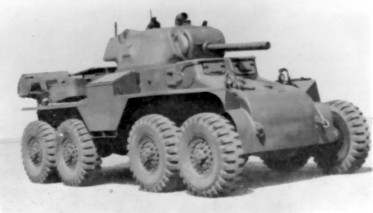
♆ 09/01/2024
 US Interwar and WW2 Armoured Cars
US Interwar and WW2 Armoured Cars
A complete overview of Interwar to the end of WW2, US Army Armoured Cars, all manufacturers and prototypes: T11, Cunningham M1, White M1, M2, M3, Marmon-Herrington M4, T13 Trackless Tank, Ford T2 OPT, T20-22, M8 Greyhound, M20 Utility car, T69 MGCM, T17E1,2,3, T18 Boarhound, Chevy T19, T19E1, Chevy T66E1, Studebaker T23/27, Willys, T24/T25 scout cars, Baker Jumping Tank, Chryler scout car, Tucker Tiger, T230 Fargo, Cook Interceptor, M38 Wolfhound.
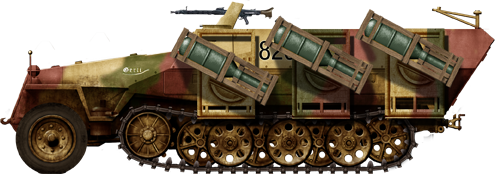
♆ 06/01/2024
 Wurfrahmen 40
Wurfrahmen 40
The Wurfrahmen 40, also perhaps better known by its nickname "stuka zum füss" lit. "Foot Stuka" was a rare vehicle deployed by the Wehrmacht during the entire Eastern Front campaign as well as in the West. It was one of several German answers to the Russian Katiushas, rocket-launching vehicles. Whereas the latter were based on the Sd.Kfz.251/I Type 2 armoured half track, generally Ausf B, but later C and D as well. Simple and efficient, although short ranged, they were used until 1945.
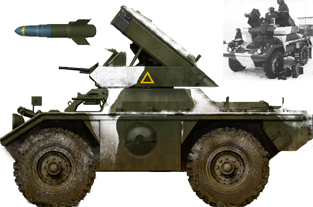
♆ 03/02/2024
 Daimler Ferret Swingfire
Daimler Ferret Swingfire
Also called Daimler Mark V (FV 712), this was the last variant of the early cold war successor of the famous WW2 Daimler Dingo, the ubiquitous light armoured reconnaissance car of the British Army. This last variant of the Daimler Ferret was intended to provide an organic antitank solution to reconnaissance units. Like the tracked FV 702 and 738 tank hunters, this British armoured used a battery of 4 Swingfire Anti-tank wire-guided CLOS/SACLOS Missiles. They were also deployed by the BAOR and paratroopers. These were retired in the late 1980s as the missile technology evolved in between.
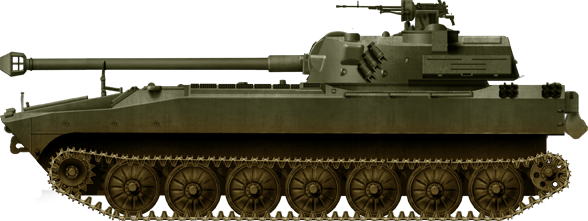
♆ 30/01/2024
 2S34 Hosta (2014)
2S34 Hosta (2014)
The 2S34 Hosta or Khosta/Chosta is a modern 120 mm self-propelled mortar system based on the chassis and turret of the 2S1 Gvosdika 122 mm self-propelled howitzers. Albeit more limited in range, they fired twice as fast and with a much larger variety of ammunitions, including the antitank, laser-guided 3VOF112 "Kitolov-2" ammunition. So far only 30 are allegedly in service (50 according to Russian sources), and they saw officially action in Ukraine from 2022, with so far three lost, including two captured, one exhibited at Prague in 2022.
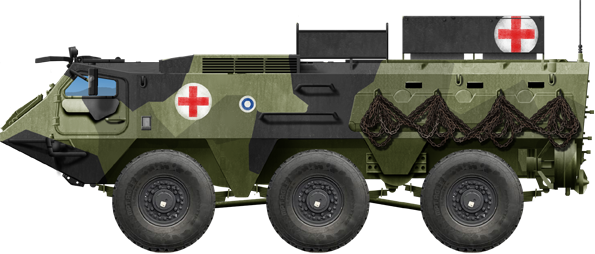
♆ 26/01/2024
 Patria Pasi (1984)
Patria Pasi (1984)
The Patria (Sisu) Pasi is probably the most recoignisable Finnish AFV of the cold war. It was not only its first 100% domestic armoured personal carrier, but its own first mass produced modular military vehicle, studied in the late 1970s and in service from 1984 to this day, also largely exported to Austria, Estonia, Ghana, Norway, Sweden, Denmark, Ireland and the Netherlands... It even saw service recenty in Ukraine.

♆ 22/01/2024
 T-72AMT
T-72AMT
The T-72 is an attempt to refurbish the massive park of T-72 kept in Ukraine (c1000 before the war, c500 now) with the latest and best upgrades of the T-80U or T-84BM Oplot level. 50 were reported converted as of 2022, and they saw action, with perhaps 5 more and 5 to follow in 2023. With proper funding, the ukrainian Army still could convert masses of T-72As not engaged yet, in storage depots ready to be refurbished along the same lines, but so far preferred an "austere" upgrade, the T-72 AMT Obr.2022. Future will tell.

♆ 18/01/2024
 VT-15 light Tank
VT-15 light Tank
The Type 15 "Black Panther" is a third generation light tank operated for the PLA (Army) and PLAN (People's Liberation Army Navy Marine) as well as the Air Force Airborne Corps. A truly universal platform also exported to Bangladesh. It was designed to replace the Type 62 light tank declared obsolete and retired in 2013. It is also known as VT-5 when marketed for export. Dedicated to difficult or mountaineous terrains, it is currently deployed on the China-India border in June 2020, Tibetan Plateau, but also in southern provinces, prepared for a possible invasion of Taiwan scenario.
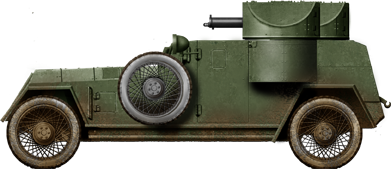
♆ 14/01/2024
 Sheffield Simplex
Sheffield Simplex
A rather peculiar, obscure and apparently mediocre armoured car created from an otherwise great prewar tourer. About 50 were ordered at first for Belgium, but they were rejected based on the initial batch (Hotchkiss MG shield) and later 15 Serie II received a new armour scheme and two turrets, and were sent to Russia after this redesign. They were also rejected and versed into training, then spent in the civil war. One, captured, managed so serve with Latvia postwar. This made for a total of 25.
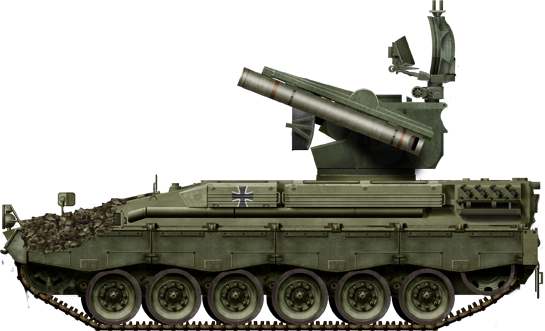
♆ 10/01/2024
 Marder Roland (1980)
Marder Roland (1980)
The Marder Roland was the first SPAAML in service with the Bundeswehr. The Flugabwehrpanzer Roland or "marder roland" abbreviated "FlaRakPz-1" was a variant of the marder infantry fighting vehicle modified to carry roland short range ground-air missiles. The latter was a successful Franco-German missile which appeared in 1977 at the same time the first prototype of the Vehicle prototype was completed. 140 were built until 1982, in service with the Bundeswehr. They were discarded in 2003-2005 and the Brazilan army also operated four of these from 1979 to 2001.
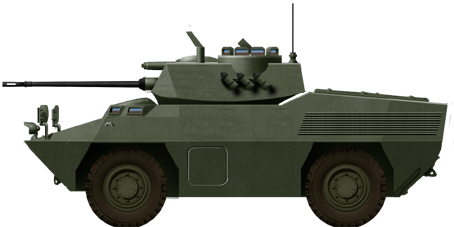
♆ 06/01/2024
 Fiat 6616 (1972)
Fiat 6616 (1972)
In the early 1970s, the newly formed consortium FIAT - OTO Melara for defence, developed on request by the Italian army prototypes of 4x4 armored vehicles to constitute the bulk of new reconnaissance batallions, composed of a troop carrier and fighting vehicle. The second was the Tipo 6616, with a two-man turret and 20mm autocannon, which prototype was completed in 1972, and a batch 50 delivered to the Carabinieri. In grand total, 185 were delivered to Libya, Peru, and Somalia until 1984.
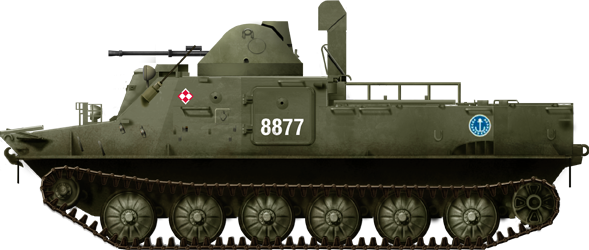
♆ 04/01/2024

 OT-62 TOPAS (1970)
OT-62 TOPAS (1970)
The OT-62 TOPAS (Transportér Obrněný Pásový) was in the cold war, the main Polish-Czech amphibious tracked armoured personnel carriers (APC). It was jointly developed in 1959-62 by Both countries as a much improved equivalent to the Soviet BTR-50. The vzor 62 had many difference with the Soviet vehicle, and arguably more variants and derivative. They were declined in specialized ARVs notably. The OT-62 was also widely exported (Bulgaria, Angola, Egypt, India, Iran, Iraq, Libya, Morocco, Sudan and Syria) and saw action in several conflicts. It is still in service notably with India, to be phased out. The type now belongs to a museum but stays as a great symbol of militaro-industrial Warsaw Pact partnerships.
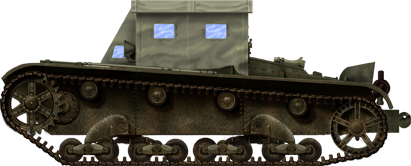
♆ 02/01/2024
 T-26T (1933)
T-26T (1933)
The Soviet T-26T was one of several variants of the legendary light interwar tank T-26, the world's most common when WW2 broke out. The T-26T artillery tractor was one of them. Recoignisable to its small armoured structure (or canvas top) c260 were made or converted in 1934-41. But they were found underpowered and the production of 350 more was cancelled in 1937... Many were also captured by the Finns and Germans, as the Waffenkammer RU025 T-26T. This is the first of a serie of articles on T-26 variants.
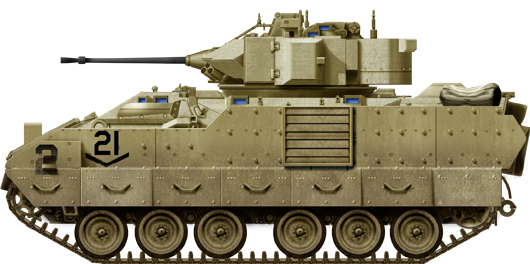
♆ 25/12/2023
 M2 Bradley (1980)
M2 Bradley (1980)
XMAS Special !
Years in writing, this article details the full history of the M2 Bradley, from Vietnam war era studies to its latest upgrades as we speak. That's a story over five decades, seeing generations of engineers to create the perfect infantry fighting vehicle. Part of Reagan's administration trio if new land systems wit the M1 Abrams, the M2 Bradley was to be the US Army main IFV from the Honduras intervention to the the gulf war, Afghanistan and Iraq wars, and still today in Ukraine. Without clear replacement in sight, the 40 years old tracked vehicle will still be around for decades to come...
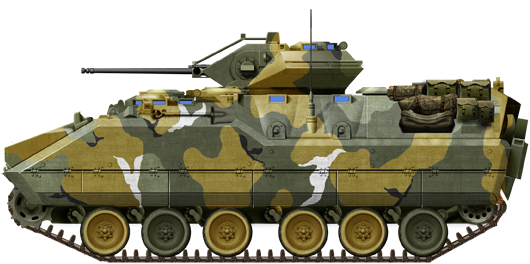
♆ 22/12/2023
 XM 723 (1976)
XM 723 (1976)
Next in the MICV 70 program was another infantry fighting vehicle, last and most important in the evolution leading to the XM-2, final prototype of the Bradley. With its much larger hull compared to previous designs and six roadwheels, it had little to do with the good old M113 and more with a compromised, all-purpose heavier machine. This is the last of our dedicated articles on the development of the bradley, after the XM 701, 734, 800, with the YM 765 being reserved for a future article on the AIFV.
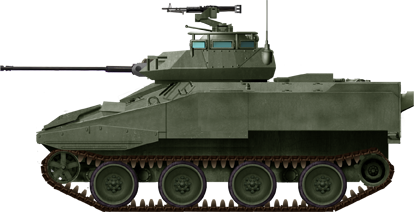
♆ 19/12/2023
 XM 800T (1973)
XM 800T (1973)
The way towards an US Army IFV started in the Vietnam war with the MICV 65 program. However all pointed out to a new vehicle not derived from the M113. In 1972 the MICV 70 program asked for a replacement for the reconnaissance M114. FMC and Lockheed competed, the second with a 6x6 reconnaissance armoured car (XM-800W) and the first, FMC, proposed the tracked IFV XM-800T. Both were armed with the M139 20mm autocannon. Here is the story of the forgotten XM-800 IFV.
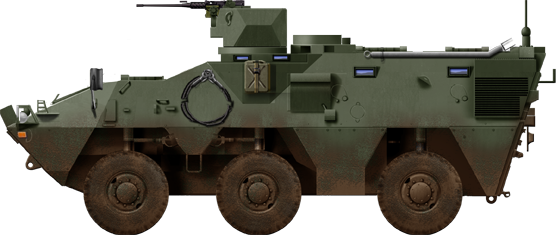
♆ 16/12/2023
 Pandur (1996)
Pandur (1996)
The Pandur I is an Austrian 6x6 wheeled armored vehicle designed and manufactured by Steyr-Daimler-Puch (now GDELS), designed as APC and declined into multiple variants, with reconnaissance, fire support and other specialists. The Pandur I was used by Austria (now superseded by the Pandur II), and produced under licence in Kuwait, Slovenia (Valuk), Belgium or the US for special forces.
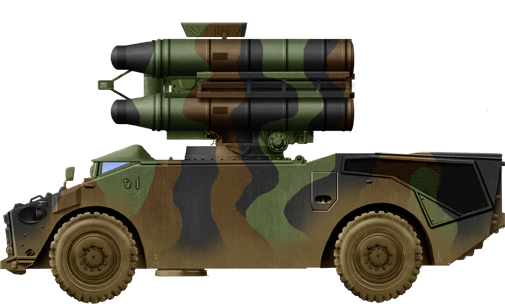
♆ 12/12/2023
 Hotchkiss P4R Crotale (1969)
Hotchkiss P4R Crotale (1969)
The Crotale ("Rattlesnake") 4 x 4 wheeled Air Defense Vehicle (ADV) system, known under the manufacturer's code P4R, was for decades the French prime SPAAML vehicle. It was originally designed to meet a South African requirement and its development cost was agreed shared 85% by South Africa, 15% by France. Locally called the "Cactus" it was eventually adopted by SANDF, and fieled to three anti-aircraft batteries. Meanwhile, Hotchkiss improved the carrier vehicle, created two radar carrier variants, and further work resulted in more international sales and widespread adoption by the French Army.
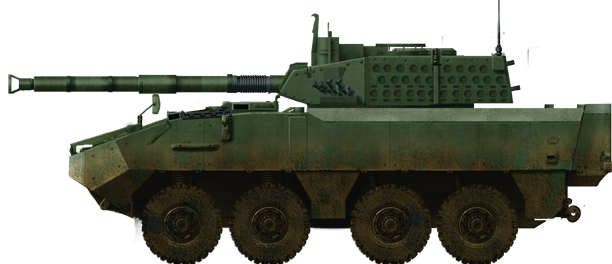
♆ 08/12/2023
 Piranha IIIc DF90 (2006)
Piranha IIIc DF90 (2006)
The recent, controversial acquisition of the Piranha DF 90, a CMI gun-armed variant of the IIIC ordered en masse by Belgium, was to replace the Belgian Leopard 1A5 MBT in its inventory in the 1990s (recently acquired by Rheinmetall to be refurbished and sent to Ukraine). Armed with a Cockerill med-pressure 90 mm gun the Piranha IIIC DF 90 infantry support vehicle would probably have a hard time against the frontal armour of a T-72 or T-90 and shows both in quantities (only 18 over 40 in service) and quality the limits of the "Belgian Land Component" Today. This post is assorted with a review of the Belgian Army in the cold war up to this day, and its armoured vehicles.
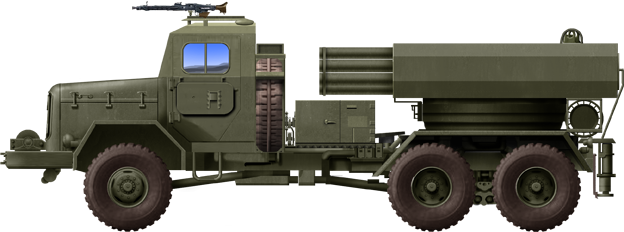
♆ 04/12/2023
 Leichtes Artillerie-Raketen-System (LARS) 110 SF1 auf Magirus-Deutz 178 D15 (1969)
Leichtes Artillerie-Raketen-System (LARS) 110 SF1 auf Magirus-Deutz 178 D15 (1969)
Far less well known that the "usual suspects" of the cold war Bundeswehr's, such as the Leopard, Marder or Gepard SPAAG/Roland SPAAML, there was one vehicle that was the de facto inheritor of WW2 Panzerwerfer. Abbreviated as RakArtBtl-122, this 110 mm rocket launcher truck was based on the 6x6 Magirus Jupiter, under the system acronym LARS, intended to pummel advancing Soviet tanks formations. It filled a niche in NATO inventory that only completed later by the M270 MARS. It was replaced in the 1980s by the LARS-2. This is the sister article on truck encyclopedia's Magirus Jupiter (see below).
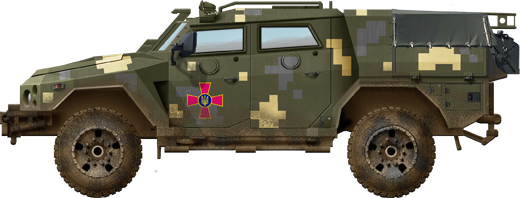
♆ 30/11/2023
 LAV Novator (2017)
LAV Novator (2017)
The company "Ukrainian Armour" is of today's Ukrainian domestic wheeled armoured vehicles, alongside KrAZ and NPO Practika delivered to the Ukrainian Army in recent years. The Company delivers also the Varta APC and intermediate Kamrat. In this case, the Novator is considered a "light APC" or "LAV" in US parlance, for light armoured vehicle. It is intended as a reconnaissance platform but could carry up to nine men. In service from 2019 with the Ukrainian National Guard, c50 had been manufactured and c19 lost in combat recently.
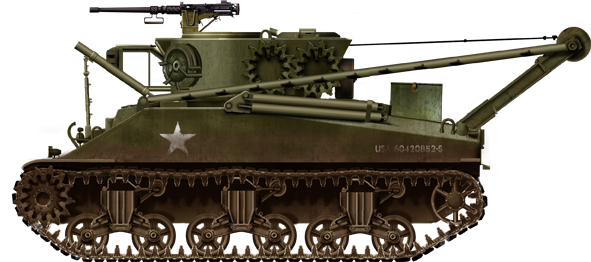
♆ 26/11/2023
 M32 Recovery Vehicle (1943)
M32 Recovery Vehicle (1943)
The M32 ARV was the second (Armoured) Recovery Vehicle fielded by the US Army during WW2, better refined with early experience in this very new field of research. It was to succeed the M31 ARV based on the now obsolete M3 Lee Medium Tank, and produced on the M4, M4A1 (cast hull) and also M4A2, A3 shermans. More were built (1562) from late 1943 to 1945 than any other type. They served in Sicily-Italy by the fall of 1943, France from the summer of 1944, and Germany in 1945 but not the Pacific. They had a set of well-thought tricks which really setup a standard at the time.

♆ 20/11/2023
 Type 99A (2007)
Type 99A (2007)
The Type 99A and A2 are the latest evolution of the elite Chinese PLA Main Battle Tank today. It is a much improved Type 99 developed from 2003 and tested since 2007, new standard deployed in 2011. Among changes: Driver's hatch moved, Invar-type ATGM, 3rd generation ERA, active protection system, larger arrow shaped turret, more compact hull and new 1500 hp engine as well as a laser warning receiver.
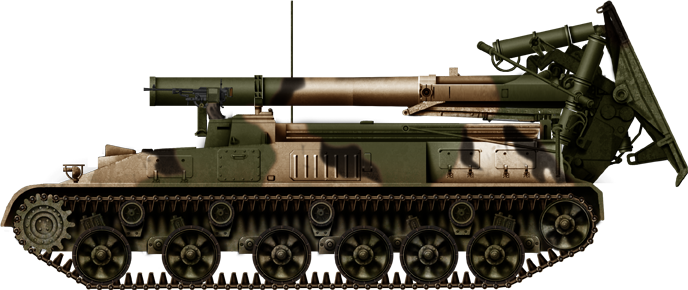
♆ 16/11/2023
 2S4 Tulypan (1972)
2S4 Tulypan (1972)
The 2S4 Tulypan is a Soviet 240 mm self-propelled heavy mortar, semi-automatic and the largest of such system in use today. 588 were built from 1969 to 1988 and it was exported to Czechoslovakia, Iraq, and today still used by Syria, Kazakhstan and Russia which possessed 40 in active service prior to the war in Ukraine, 26 lost, 350 in reserve. They were deployed in several conflicts from Afghanistan to the Donbass.
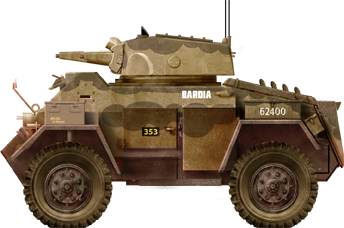
♆ 13/11/2023
 GMC Fox Armoured Car
GMC Fox Armoured Car
The Car, Armoured, Mark I, Fox I (1943) was an adaptation of the Humber Mark III British armoured car for Canadian manufacturing, using a General Motors Canada CMP C-15 (Chevrolet) chassis and engine, combined with a hull identical to the original. The armament was changed to one Browning cal.50 and one cal.03 M1919A4 instead of the original Besa. In total 1,506 were built until early 1945, and they were gradually phased out in favour of the Staghound. They were used in Italy by the Poles, UK (for training, then in Europe) and India, and after the war by the Dutch in Indonesia and the Portuguese in Africa. Their career ended after the 1974 Carnation revolution.

♆ 09/11/2023
 Type 98 (1996)
Type 98 (1996)
The Type 98 Main Battle Tank (WZ-123, ZTZ-99, Project 9910 was derived from the Type 90-II prototype as China's first 3rd generation main battle tank, but not produced. Instead it is largely seen as a preserie for the Type 99 (ZTZ-99) Main Battle Tank produced so far to circa 1,200 including variants and considered the elite MBTs of the Chinese PLAN.
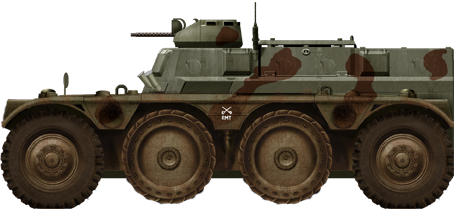
♆ 06/11/2023
 Panhard EBR ETT (1957)
Panhard EBR ETT (1957)
The Panhard EBR ETT was an Armoured Personal Carrier variant of the famous 1950s oscillating turret innovative armoured car. The conversion was decided for tests and two prototypes made, but ultimately rejected for service. Instead, 28 were purchased by Portugal which used these in Angola, Mozambique and in the 1974 Carnation Revolution.
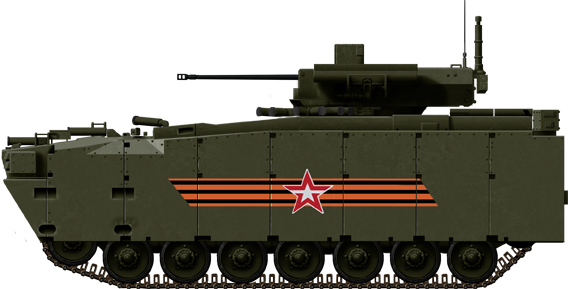
♆ 03/11/2023
 Kurganetz-25
Kurganetz-25
The The Kurganets-25 is a multirole platform rated for 25 ton, designed to be amphibious, NBC protected and highly modular. It was declined into an infantry fighting vehicle and armored personnel carrier and planned to replace the BMP, BMD, MT-LB and other legacy types. Given its ambitious target, the Kurganets-25 not only have a modular interior, but also modular armor, mission-tailored. First public presentation was the Red Square May 2015 victory parade but initially with its turret and main armament shrouded in rehearsals with pre-production starting by 2016, certifications still going on in 2020-2023 with extensive trials and some changes notably on the chassis.
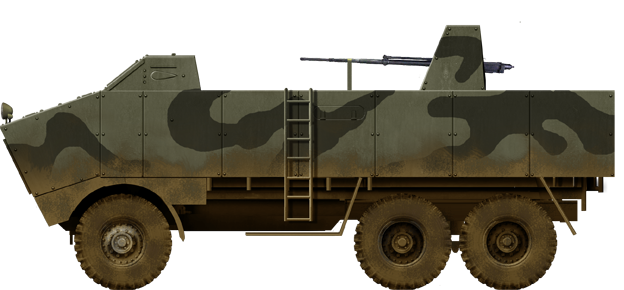
♆ 31/10/2023
 Leyland Beaver Eel (1940)
Leyland Beaver Eel (1940)
As part of improvised armored vehicles designed for the Home Guards to face a possible German invasion in the late summer of 1940, one vehicle was intended for air defense of aircraft factories, called "Beaver-Eel" in honor of Lord Beaverbrook, initiator of their construction. The official name became for the Royal Ordnance was "Leyland Tour C Armored Tender". These summarily were based on the 3-ton 6x4 Leyland Retriever. Armament varied between Lewis machine guns, vintage 20-mm Hispano Zuiea HS404 or even older Vickers 1.5-pounder COW gun from the depots. In all 336-340 (depending on sources) were converted and used by the Royal Air Force until 1944 for the protection of airfields and factory, initially for the Battle of Britain.

♆ 27/10/2023
 T-55 AGM (2012)
T-55 AGM (2012)
The T-55 AGM is perhaps the most advanced upgrade for the T-55 today, which fought recently in Yemen, Nagorno-Karabakh, Ethopia, Sudan... and Ukraine. Kharkiv Morozov created a rather radical upgrade package portable on similar T-62 or Type 59 Main Battle Tanks. With a new main cannon, RWS system, powerpack and gearbox, tracks and revised drivetrain, better fire control system, new ERA and armour package, new NBC system, new smoke dischargers, extinguishers, the vehicle is considerably enchanced and was from 2012 proposed for export, with a derivative made for Peru so far, the Tifon 2.
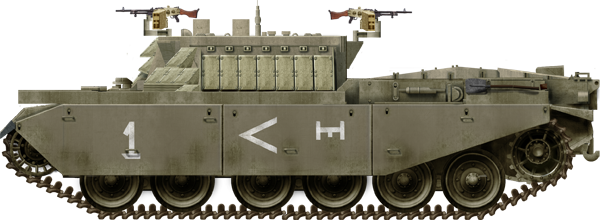
♆ 24/10/2023
 Nagmasho't (1984)
Nagmasho't (1984)
The Nagmashot (Nagmasho't) is considered the world's first modern heavy Armored Personnel Carrier (HAPC). In 1982, the IDF command saw its fleet of Sho't Kal main battle tank ageing. These non-fully upgraded Centurions were less useful than a potential conversion into a heavy type, to address the lack of protection of conventional APCs in combat. The Hebrew term for an APC "Nagma" was added to "Sho't" to form its name. Many more will follow, upgraded over time. Their actual numbers within Israel Defense Forces (IDF) is blurry, and it is likely all had been converted to more advanced variants: None is listed today in IDF inventory.
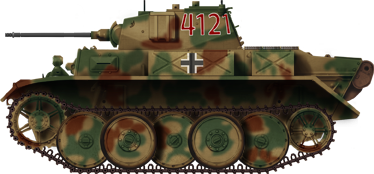
♆ 18/10/2023
 Panzer II ausf L "Luchs"
Panzer II ausf L "Luchs"
The Sd.Kfz.123 Panzerkampfawgen II Ausf L "Luchs" ("lynx") was a WW2 German light tank developed between 1940 and 1942 by Daimler-Benz and MAN. It shared little with previous versions of the Panzer II (1936) having a thicker, larger hull, a Schachtellaufwerk drivetrain, better engine for higher performances, "slack track" configuration and better radios. It was to be the next organic reconnaissance tank the Wehrmacht lacked, but the grand plans of having 600+ delivered by 1944 petered out as only 100 were built from September 1943 to January 1944 (plus four Ausf. M conversions). They served on the Eastern front, many being lost during the offensive on Kursk salient (Operation Citadel) while the survivors and later batches were seen in Normany in the summer of 1944, where two were captured, now in Bovington and Saumur.
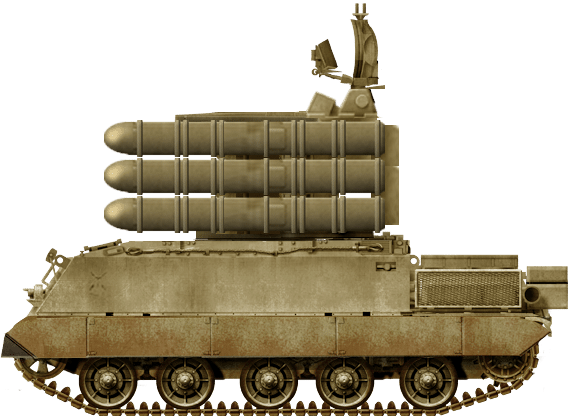
♆ 14/10/2023
 AMX-30C1 Shahine
AMX-30C1 Shahine
The AMX-30C1 Shahine was the third and last of missile carrier variants based on the French AMX-30 chassis. Alo called the AMX-30SA, it was developed in 1975 for Saudi Arabia, to fire the SA-10 Shahine, a local version of the Crotale surface-to-air missile from Thomson-CSF. The vehicle is still currently in service or storage, with 36 delivered. This vehicle was proposed as a logical piece of the major "palm tree contract", based on the AMX-30 Main Battle Tank and its numerous derivatives, all acquired with other French armoured vehicles. This is accompanied by a full review of the Saudi Arabian military, tanks and armoured vehicles (work in progress).

♆ 08/10/2023
 SBA-60K2 Bulat (2013)
SBA-60K2 Bulat (2013)
The SBA-60K2 Bulat armored personnel carrier (APC) was developed by Kamaz and Zaschita in 2010-2013 as a BPM-97 6x6 vehicle development as a MRAP vehicle. 15 were purchased by the Russian Army by late 2014, ordering 50 more from Zashcita. The vehicle was not deployed in Ukraine recently.
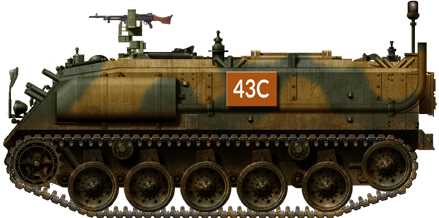
♆ 03/10/2023
 FV 432 APC
FV 432 APC
The FV432 was the armoured personnel carrier developed as part of the FV430 modular series. When production ended in 1971, almost 1,500 FV 432 and 2,500 to 3,000 vehicles used the FV 430 chassis, making it the bedrock of British motorized infantry units in the cold war, in particular the BAOR in Germany. Variants were used by the REME and Royal Engineers, Royal Artillery. Phased out of service in favour of the Saracen 6x6 and later the Warrior and CVR(T), 54 were upgraded so stay in service in the 2020s until August 2006 by BAE Systems as the Mark III Bulldog to be used in Afghanistan and Iraq ("force protection initiative"). This story is not over, including possible use by the Ukrainians in the present conflict.
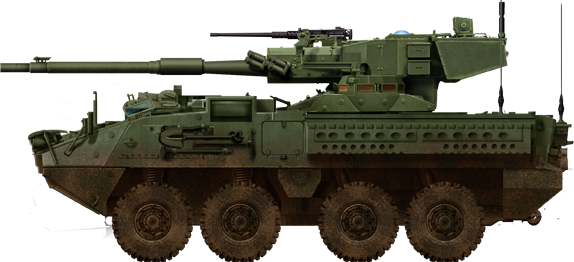
♆ 25/09/2023
 M1128 MCS (2002)
M1128 MCS (2002)
The M1128 Mobile Gun System (MGS) is (was now) an interim vehicle specific for the replacement of the light tank, Vietnam veteran M551 Sheridan, retired after the 1991 Gulf War. The quest for its replacement spanned decades and is now resolved with the actual M10 Booker. The M1128 MGS from GLDS was ordered in 2002 alongside the Stryker family as a completely different solution better adapted for the asymetric conflicts of the time. This was however not a sucess, and only 142 were made from 2002 to 2010 by General Dynamics Land Systems. Integrated into the current Stryker brigade combat teams, their planned retirement started in 2022.
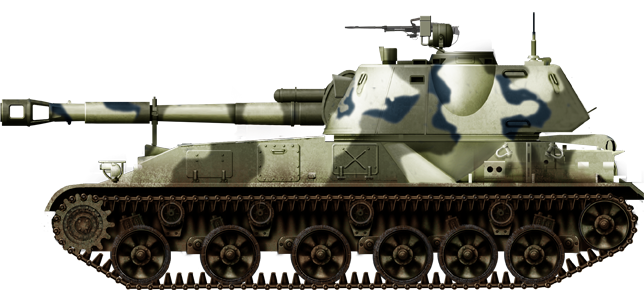
♆ 19/09/2023
 2S3 Akatsiya (1971)
2S3 Akatsiya (1971)
The SO-152 (GRAU 2S3 Akatsiya) is a Soviet 152.4 mm self-propelled gun. It was first developed in 1968 to answer the American 155 mm M109 howitzer. Development started in 1967, an it completed, accepted for service in 1971 entered service. Its GRAU designation is 2S3. Following the ironic flower naming tradition of Soviet SPGs, "Akatsiya" (Акация) stands for "Acacia".

♆ 12/09/2023
 T55-AM2B
T55-AM2B
The T55AM2B is one of the last, but not the very last evolution of the T-55, born in 1959. After the T-54B, the Czech built T55AM and AM2, the AM2B is the final coldwar non-Soviet evolution of the type. Only a handful were so modernized and served in both the East German and Czech armies before the collapse of the Warsaw Pact. Passed to the successor states, the East German ones soon found new international customers (along with the postwar Polish T-55AM2BP): Cambodia (50), Sudan (20), Slovakia still having 206 by 1995.
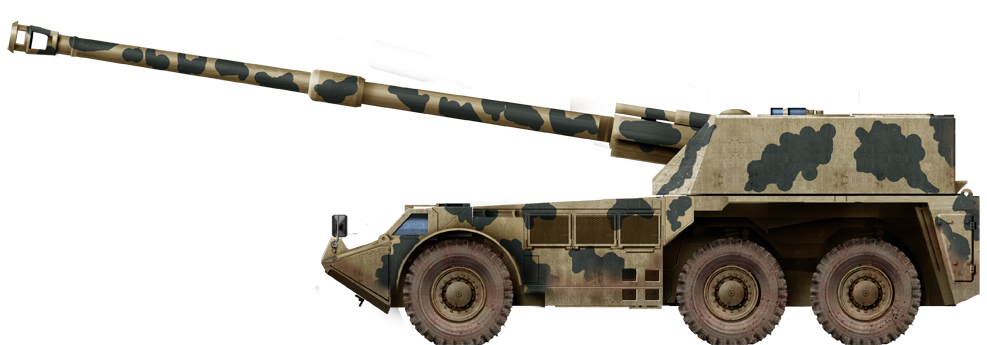
♆ 06/09/2023
 Al Fao (1989)
Al Fao (1989)
The Al Fao (or Al Faw) is a rather peculiar self-propelled artillery vehicle inspired by the South African G6 Rhino and designed by controversial Canadian engineer Gerald Bull to carry a massive 210 mm/53 caliber howitzer capable of firing accelerated 109 kgs shells to 57 km away. Like the Majnoon it was born from an Iraqi specification in 1987 to out-range Iranian M107s. Both prototypes were assembled in time for the Baghdad arms exhibition fair in May 1989. However after the invasion of kuwait, all hopes to produce them vanished (as both vehicles).

♆ 30/08/2023
 JVBT-55 (1970)
JVBT-55 (1970)
The JVBT-55 The JVBT-55A ("crane recovery bulldozer tank") is a project of Czech, T-55A based CRV with higher load capacity that the Soviet-built VT-55A (20 t) and able to lift heavier equipment (turret system, medium tanks) for field repairs, levelling terrain. It was developed by Turčianské strojírny n.p. Martin in 1967, protoype tested in 1970 and production started in 1974 until 1983 with 508 vehicles made in all. Protection wise, the hull retains all the advantages of the T-55A tank.
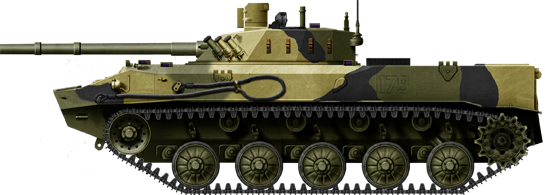
♆ 23/08/2023
 BMD-4 (2004)
BMD-4 (2004)
The BMD-4 for Boyevaya Mashina Desanta-4 or "Combat Vehicle of the Airborne" is so far the latest infantry fighting vehicle of the Russian airborne (VDV), planned to succeed to the BMD-3 in service since 1990. It was originally designated BMD-3M as based on the same chassis, however so many modifications were made to the turret, that its capabilities were augmented (notably with a new hunter-killer capability, better sights, etc.). So far, c300 has been built, with the objective of equipping 11 batallions of the VDV with 31 of these each (341) plus spares by 2023. An APC and several specialized vehicles has been derived. The BMD-4 sees service in the current war in Ukraine.
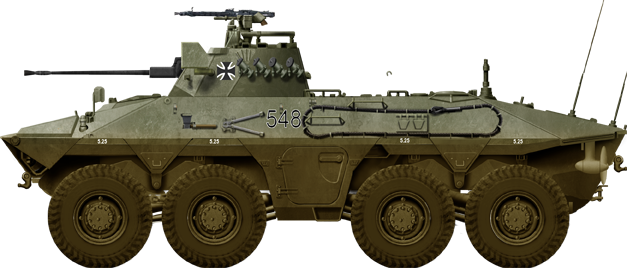
♆ 17/08/2023
 Spähpanzer Luchs (1975)
Spähpanzer Luchs (1975)
The Spähpanzer Luchs ("Lynx") was a West German 8x8 amphibious reconnaissance armoured fighting vehicle (Spähpanzer), in service from 1975 to 2009. The Bundeswehr used 408 of these with the armoured reconnaissance battalions facing the "grenz" during the cold war. Developed by Daimler-Benz between 1968 and 1975 it replaced both the the M41 light tank and Schützenpanzer SPz 11-2 Kurz IFV. Very similar to more modern 8x8 AFVs, it was replaced itself by the current massive KMW Boxer from 2009 (38 tons in battle order versus 19.5 tons). It's the perfect example on how this category grew and scaled up over the last decades.
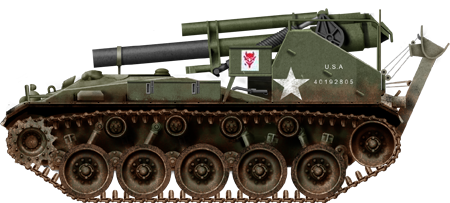
♆ 09/08/2023
 M41 HMC Gorilla (1945)
M41 HMC Gorilla (1945)
The M41 HMC was a self-propelled M1 155mm howitzer, started in 1942 (T64) and perfected with the adoption of the T24 chassis (M24 Chaffee) while was developed the T64E1, eventually standardized in June 1945 as the M41 Howitzer Motor Carriage later dubbed "Gorilla". The 250 order was curtailed to 85 as the war ended, but it saw action later in Korea and Indochina, bringing precious lessons for the 1960s generation of US Army self propeller artillery.

♆ 03/08/2023
 Taiwanese T64 (1975)
Taiwanese T64 (1975)
The Type 64 is a 1975 conversion of M42 Duster chassis with M18 Hellcat turrets, creating an hybrid that was quite original to answer the need of more firepower to face PLA tanks in case of an invasion in the late 1970s. A total of a single battalion worth of conversions were made. They were active until 1981 and then soon sidelined to reserve/training as new main battle tanks were received.
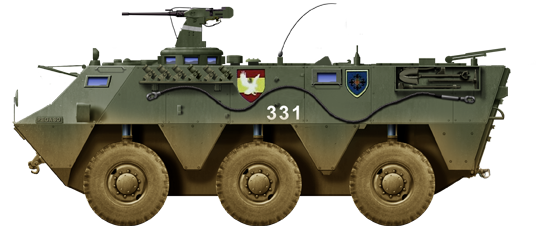
♆ 25/07/2023
 Pegaso BMR-600 (1978)
Pegaso BMR-600 (1978)
The Pegaso 3560 BMR was for decades, and still is today for a few more years, the main wheeled Spanish main armoured fighting vehicle, related to the Swiss Mowag Piranha and Austrian Pandur I. It was built by the only Spanish industrial heavyweight capable of undertaking this project, Pegaso. The BMR for "Blindado Medio sobre Ruedas", was a modular 6x6 armoured personal carrier (APC) declined into multiple variants, produced from 1979 and exported to six countries. It was seconded by the VEC Infantry Fighting Vehicle (IFV) based on the same chassis. Production reached more than 1,500 with the ones built in Saudi Arabia.
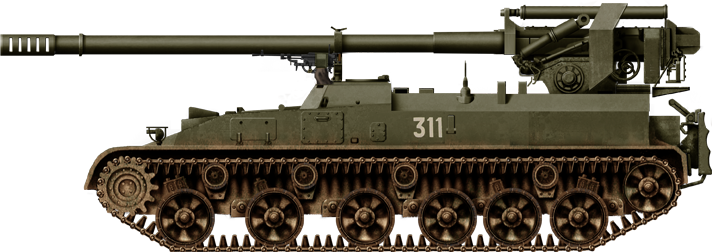
♆ 19/07/2023
 2S5 Giatsint-S (1978)
2S5 Giatsint-S (1978)
The 2S5 Giatsint-S (Russian: 2С5 "Гиацинт-С") named after the hyacinth flower, is a Soviet/Russian 152 mm (6-in) self-propelled gun capable of firing further than the older 2S1 Gvodzika or 2S3 Akatsiya, even nuclear projectiles. It entered service in 1978 and is still active today with the Russian Army and Navy (still 570 in inventory and 600+ storage) and a few with Ukraine, Finland (now removed/resold), Belarus, but also exported to Ethiopia and Eritrea. Unlike turreted SPGs, the crew (except the gunner) are deploys outside of the vehicle when in use. It saw action (and still is) in Afghanistan, Chechnya, Donbass and Ukraine as of today.
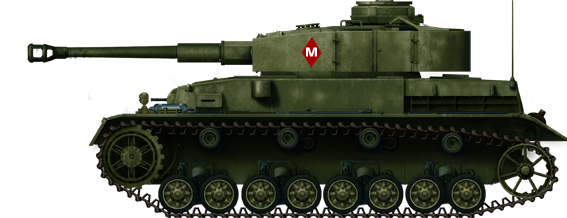
♆ 13/07/2023
 Cold War Spanish Tanks
Cold War Spanish Tanks
Full update on the former generic Spanish Tanks Page. This is a rewrite and expansion of the older page, made clearer and deepened with the story of WW2 Panzer-IVs and STUG-IIIs and important industrial players such as Pegaso (for the BMR and VEC armored vehicles) and Santa Barbara Sistemas, tasked notably in upgrading M48, M60, AMX-30 tanks and assemble under licence in Spain the Leopard 2E. It is also responsible today, after the construction of the Pizarro IFV, of the British AJAX IFV. Updates are coming as well as the Pegaso BMR and VEC.

♆ 06/07/2023
 T84, Oplot & Oplot M (1993-2023)
T84, Oplot & Oplot M (1993-2023)
Major upgrade of the old article by me and Mike Ennamorato: The T-84 was a modernization of the soviet-era T-80U, a locally built variant of the T-80 which appeared in 1994 but which genesis goes back to 1974. The "BM Oplot" is the latest variant of the Ukrainian T-84, which appeared in 2009, improved in any way to match the soviet T90M and T90BM. It was not adopted by the Ukrainian Army but secured an order for Thailand (49 Oplot-T) delivered in 2016-2019. It also failed to secure an Order to Pakistan (Oplot-P) in 2023 to the Chinese VT-5.
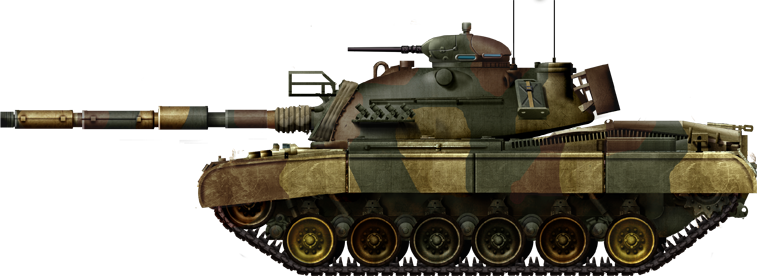
♆ 30/06/2023
 Turkish M48A5T2 (1980)
Turkish M48A5T2 (1980)
Among NATO Nations, Turkey received the most M48 tanks from the US, starting with the M48A2. In the 1970s, they were gradually replaced by M48A5s and upgraded, leading to the T1 variant. Then Germany sold its own M48A5s making Turkey the most prolific user of the type, they were upgraded to the T2 standard. This park is still partly active (circa 750 operational) but being replaced by upgraded Leopards and the upcoming Altay.
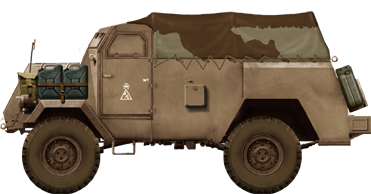
♆ 27/06/2023
 Chevy CTA-15 AC (1943)
Chevy CTA-15 AC (1943)
The C15TA Armoured Truck was developed by General Motors Canada to replace the White M3 Scout Car, based on the Chevrolet C15 Canadian Military Pattern (CMP) truck chassis. Between 1943 and 1945 some 3,961 were built in the Oshawa plant in Ontario, with armoured hulls supplied by Hamilton Bridge. It was not meant for reconnaissance unlike the Otter, but rather like an armoured personal carrier, the first designed and built in Canada. It was widely used in Europe in 1944-45, starting in France and Italy, and after the war, saw action with Belgium, Greece, Denmark, the Netherlands, Norway, Spain, France, South Vietnam, South Africa, Malaya, Portugal and Mozambique afterwards, well helped by the commonality of parts from the 400,000 CMP trucks delivered by Canada in WW2.
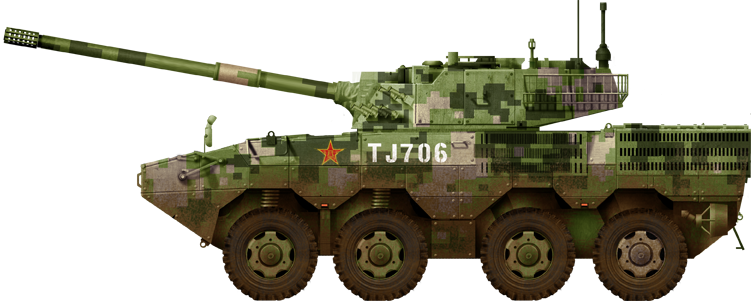
♆ 23/06/2023
 ZTL 11 SPG (2009)
ZTL 11 SPG (2009)
The ZTL-11 fire support vehicle was developed for the Chinese PLA in 2009, also called Type 11 assault gun. It is based on the ZBL-08 with a new tailored turret for a 100 mm high velocity gun. It is mostly used by the army but allegedly also by the Chinese marines, and is the only fuly amphibious support fire vehicle of its kind, prominently shown in amphibious exercizes and on the frontline for the planned invasion of Taiwan.
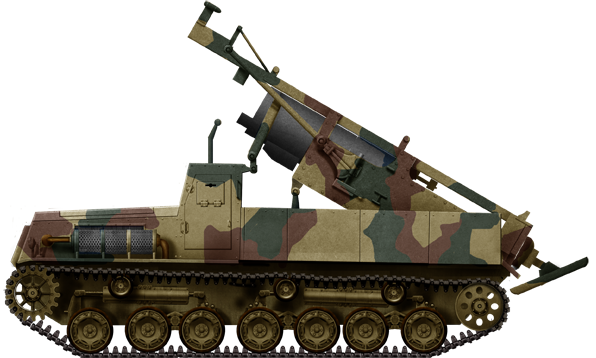
♆ 18/06/2023
 Type 4 Ha-To (1944)
Type 4 Ha-To (1944)
The Type 4 Ha-To was a heavy self-propelled mortar developed by the Imperial Japanese Army in World War II. It was designed as a mobile fire support platform in late 1943, making use of the Type 3, 300 mm (12-inches) heavy mortar in the IJA inventory mounted on a chassis mixing elements of the Type 4 Chi-So and Chi-To carrier. Only a single prototype and three serial vehicles were ever built in 1944-45, never used.
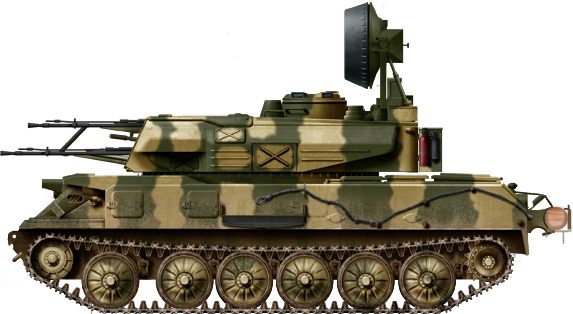
♆ 15/06/2023
 ZSU-23-4 Shilka (1960)
ZSU-23-4 Shilka (1960)
The ZSU-23-4 "Shilka" is a lightly armored Soviet self-propelled, radar-guided anti-aircraft weapon system (SPAAG). Still in service despite its partial replacement by the 2K22 Tunguska (1982). With 6500 produced it was exported to 23 countries, and still in service in most of these. The Shilka remains today the most available SPAAG worlwide, having seen combat around the world from 1966 to this day in Ukraine.
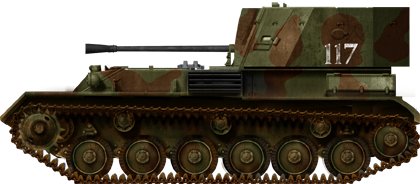
♆ 11/06/2023
 ZSU-37 (1945)
ZSU-37 (1945)
The ZSU-37 was the very first Soviet Self Propelled Gun (SPAAG). Many more will follow. The type was developed to an artform by the Wehrmacht, deployed by the allies with the M13, M14, M16, M17 Halftracks, but USSR did not possessed that type until late in the war. The model 37 was developed from the end of 1943, produced at Works No. 40 in Mytishchi. ZSU stands for "Zenitnaya Samokhodnaya Ustanovka" ("SPAAG"). Many more will follow in the cold war and USSR will produce and export more than any other country in the following decade, up to the actual 2K22 Tunguska.
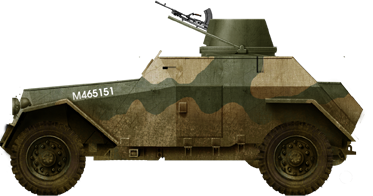
♆ 08/06/2023
 Humber Light Reconnaissance Car (1940)
Humber Light Reconnaissance Car (1940)
The Humber light Reconnaissance Car was designed by Humber to he produced in mass by Rootes Group in 1940-43, with 3,600 delivered in all versions. They soldiered with British, Canadian and Czech reconnaissance units from Tunisia in 1942 to Italy and northern Europe from D-Day to the streets of Hamburg in 1944-45.
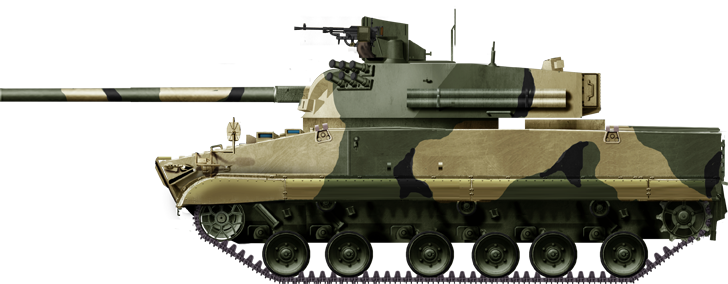
♆ 30/05/2023
 2S31 Vena (1997)
2S31 Vena (1997)
The 2S31 Vena is Russian amphibious self-propelled 120 mm mortar system, so given the 2S31 is GRAU designation. Based on the BMP-3, it is given a large arrawy of ammunitions, and a new advanced targeting system. Thought as the army version of the VDV's 2S9 Nona, it was first revealed in 1997, produced from 2010. only 18 vehicles were delivered so far to Azerbaidjan, with about a dozen for evaluation in Russia. No vehicle has been deployed in Ukraine yet.
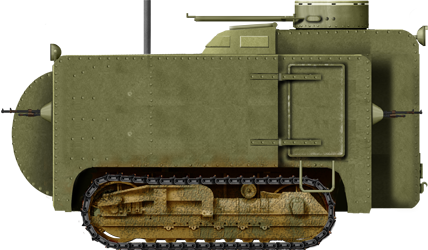
♆ 23/05/2023

 Paulista War Tanks and Armoured Fighting Vehicles
Paulista War Tanks and Armoured Fighting Vehicles
In 1932, between July and October, a fierce civil war erupted between the state of Sao Paulo and the rest of Brazil, contesting the rule of president Getúlio Vargas. Some wished to establish a new constitution, some a full separation. An army was born to topple over the government in Rio de Janeiro, and soon war raged between the "Federalists" and "Paulistas", with tens of thousands of troops, artillery, machine-guns, aviation and a naval blockade. If the former used relatively few tanks but the Renault FT, the second created eight armored vehicles based on cars, tractors and trucks, alongside six armoured trains. Here is this forgotten story.
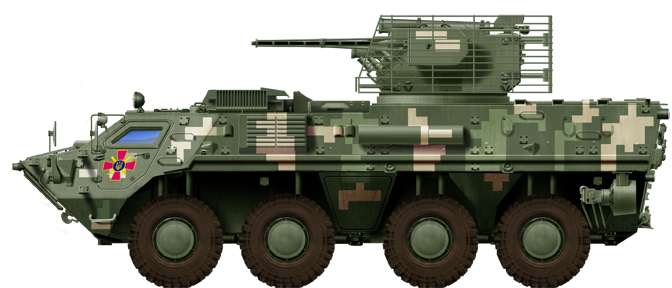
♆ 15/05/2023
 BTR-4 Butsefal (1998)
BTR-4 Butsefal (1998)
The BTR-4 "Bucephalus" («Буцефал») or Romanized as Butsefal after Alexander the great horse, is an amphibious 8x8 wheeled infantry fighting vehicle designed in Ukraine by the Kharkiv Morozov Machine Building Design Bureau. Despite a limited production of c800 vehicles, the vehicle was exported used extensively in the recent Russo-Ukrainian War from 2014, but also by Iraqi Forces, taking part notably in the capture of Jurf al-Nasr from ISIL. The BR-4 has been declined into eight main versions and also serves with Indonesia, Nigeria and Myanmar.
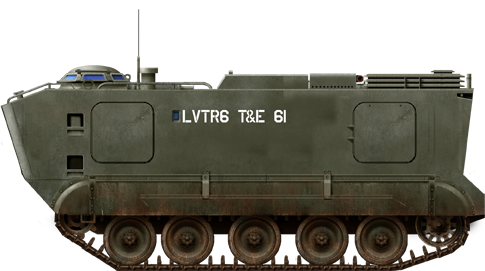
♆ 08/05/2023
 LVTP-6 (1951)
LVTP-6 (1951)
The prototypes of the LVTP-6 serie were an attempt to create a modern amphibious APC. Born from the US Navy Bureau of Ships, the new vehicle was based on the a much shorter chassis using the same roadhweels as the standard M113 and was to be a way cheaper version of the LVTP-5, at 41,000 Ib in battle order with a payload still of 10,000 Ib, 8000 waterborne, or 20 equipped Marines. Both military engines and conversions were tried, and a Chrysler engine-transmission was ultimately chosen but the vehicle ultimately never made it into production. Instead after many further development years, the choice fell on the new LVTP-7, a compromise between both. The latter is still in service, whereas the LVTP-6 remained a prototype.
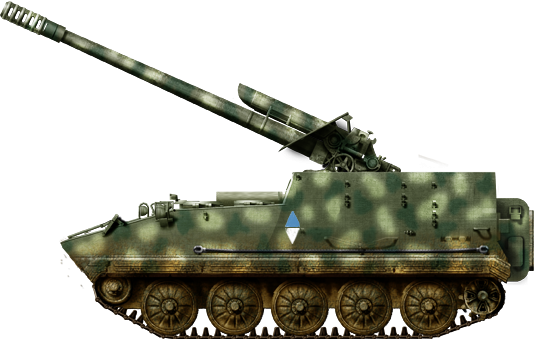
♆ 01/05/2023
 122mm D-30 323 "M-1977"
122mm D-30 323 "M-1977"
The M-1977 122mm self propelled (SP) gun/howitzer is another typical North Korean product, a mix between the mass-built VT-322 APC coupled with the 122mm D-30 gun-howitzer, with enclosed sides and open top. It is called more simply "M 1977" as its real designation is unknown to this day by western/asean Intel services. The M1977 designation was allocated by the US Department of Defense, based on year this system was first observed by US intelligence. But it is dated 1976 as a matter of common understanding that it was likely built and designed a year before being introduced and observed.
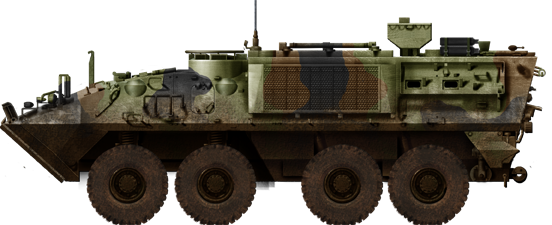
♆ 24/04/2023
 Bison APC
Bison APC
The Bison is a Canadian variant related to the American LAV-II produced by General motors, and itself a derivative of the Swiss MOWAG Piranha 8x8, one of the most successful western wheeled multirole vehicle of the last three decades. It was to replace the GDLS-Canada 6x6 family of Armoured Vehicle General Purpose (AVGP) Grizzly and Cougar of the seventies in a more dedicated, specialized package. The vehicle was accepted in 1990 and is still in service with the Canadian Armed Forces after a refit in the 2000s, partially replaced by the LAV-III, then the LAV-6 in this decade, and pending replacement in the 2040s by a brand new modular vehicle, yet unknown.

♆ 17/04/2023
 PTS-M (1965)
PTS-M (1965)
The PTS is a Soviet tracked amphibious transport started as Ob'yekt 65 in 1962 and introduced in 1965. It was armoured and had a payload of 10 tons, many more than the previous BAV 485, a postwar adaptation of the US DUKW, with better cross-country performance and rear ramp. In the 1970s was introduced the improved PTS-M and later appeared other variants PTS-2 to 4. The PTS-M was exported to 20 countries and saw a lot of action.
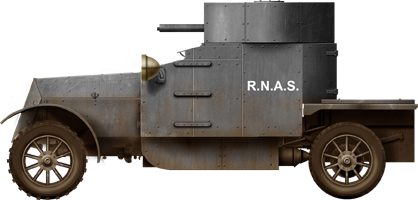
♆ 31/03/2023
 Talbot Armoured Cars (1914)
Talbot Armoured Cars (1914)
The Talbot was a British armoured car built on the chassis of a Clément-Talbot tourer and if 21 were ordered, only a small numbers were gradually converted to several patterns, from improvized open-top to turreted pattern vehicle in late 1915. The Talbot armoured cars saw an intensive service with the R.N.A.S. in 1914-1915 alongside Rolls-Royce and Delaunay-Belleville among others. This is a rather foggy vehicle due to the lack of documentation an improvized nature of the project, as they were intended to rescue pilots behind enemy lines.
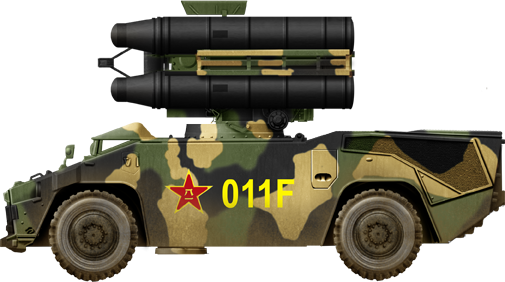
♆ 24/03/2023
 Hongqi HQ-7/FM-80 (1989)
Hongqi HQ-7/FM-80 (1989)
The HQ-7 (For "Hongqi"-7 (hóng qí) meaning "red flag" or "red banner"), is the name of a ground-to-air AA short range missile developed in China from the R-440 Crotale ("Rattlesnake") missile. Development of the HQ-7 system in 1980 started on a 4x4 armoured carrier called P20 based on the French Hotchkiss P4R. The vehicle was not exported and replaced by the new 6x6 HQ-7A FM-90 introduced from 1998, the current short SPAAML of the Chinese PLA.
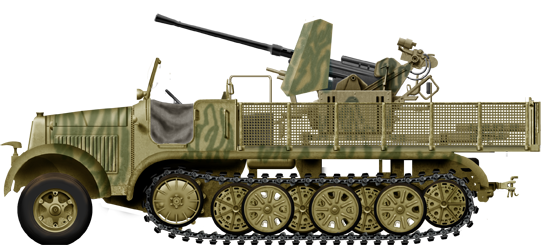
♆ 16/03/2023
 Sd.Kfz.6/2
Sd.Kfz.6/2
The Sd.Kfz. 6/2 Selbstfahrlafette was a German self-propelled anti-aircraft artillery of WW2. It was based on the Sd.Kfz.6 Zugkraftwagen 5t prime mover and engineers vehicle. It was designed to support Luftwaffe units integrated into armoured divisions, tasked for anti-aircraft protection. 339 were converted, in a process starting in 1941 and completed in 1943. It was eventually replaced by the cheaper and larger Sd.Kfz 7/2.

♆ 10/03/2023
 AVIBRAS ASTROS (1984-2020)
AVIBRAS ASTROS (1984-2020)
The Avibras ASTROS is a multiple rocket launcher system developed by Avibras Indústria Aeroespacial. The name ASTROS stands for the acronym of "sistema de artillería de cohetes" or "Artillery Saturation Rocket System". It could be configured to launch different types of rockets with ranges of up to 300 km. In service with the Brazilian Army since the 1980s it was exported notably to Iraq, United Arab Emirates, Saudi Arabia, and Indonesia seeing action in the Gulf War, Afghanistan, and Yemeni Civil War among others.

♆ 02/03/2023
 Leclerc DCL and EPG (1991-2010)
Leclerc DCL and EPG (1991-2010)
The LECLERC DNG/DCL and the EPG are today's French Army Main Engineering Vehicles. Developed by GIAT industries back in 1994, the serie is now maintained by Nexter/NTDS. The first EPG, mine-sweeping variant, rolled in 2001, but the program was not followed, the contrary pf the DNG (Leclerc Tank dedicated salvage vehicle) and the DCL with a serie taking place in the 2000s, now used by France and the UAE.
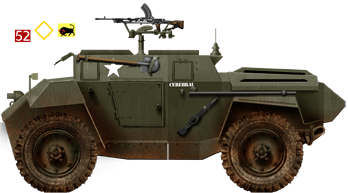
♆ 24/02/2023
 Humber Scout Car (1942)
Humber Scout Car (1942)
The Humber Scout Car was a British light scout car entering service in 1942, and in production until 1945. This was Humber's response to the Damiler Dingo being in huge demands, and used thesame basic specifications. It was to be also used for reconnaissance and liaison between units, but was much heavier and larger. Both protection and armament were minimal, the crew of only two had access to a radio and Bren Guns for defence. Being much heavier and larger it could not compare to the more famous Daimler Dingo, but still evade what it could not fight. The Daimler Ferret armoured car was inspired by in 1952.
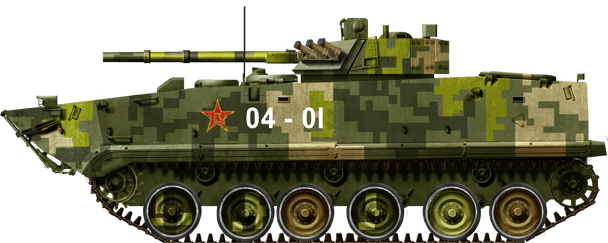
♆ 16/02/2023
 ZBD-04 (1997)
ZBD-04 (1997)
The ZBD-97 (1997) and ZBD-04 (2004) are two faces of the same coin. Before the ZBD-04, was the ZBD-97 (Factory designation WZ502), a fully tracked infantry fighting vehicle (IFV) developed for the Chinese People’s Liberation Army (PLA). The ZBD-97 entered service in 1999 to early 2000s while the ZBD-04 entered service in 2006. Both are designed to serve independently of, or in coordination with main battle tanks. They carries a fully equipped infantry squad whole covering them with heavy fire support, while keeping amphibious capabilities. The ZBD-04 (ZBD-97 main production run) is today deployed with the Guangzhou and Nanjing military regions. It was declined into multiple variants, including an Ambutank, Engineering Vehicle and Anti-tank missile vehicle as well as an ARV and evolved into the improved ZBD-04A. In all about 400 of these amphibious IFVs has been produced, shared by the PLA and PLAN's Chinese Marines and likely to be used for the invasion of Taiwan. We will go more into sub-variants in the following weeks.
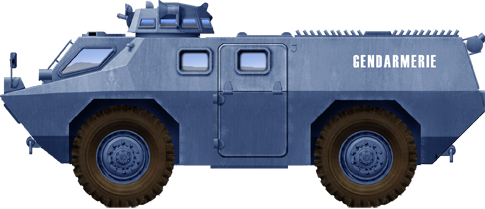
♆ 10/02/2023
 Berliet VXB-170 (1972)
Berliet VXB-170 (1972)
The French Berliet VXB-170 was designed as an armored personal carrier (APC) in 1969, competing against Renault's VAB for the largest post-WW2 army procurement program (the equivalent today would be the scorpion program). Berliet was not chosen, but found a customer with the Gendarmerie which looked years later for a similar vehicle for crowd and riot control. Then three export customers followed. When Berliet was acquired by Renault in 1978 however, the VXB was seen as a competitor for the VAB and terminated after 179 vehicles built.
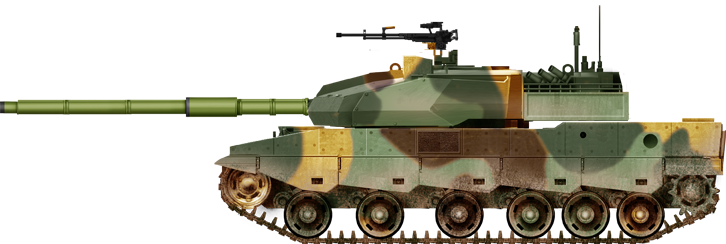
♆ 02/02/2023
 Bangladeshi Tanks and AFVs (1974-2023)
Bangladeshi Tanks and AFVs (1974-2023)
Full review of the Bandgadesh Armoured Forces, all models in use since the 1971 Liberation war of "East Pakistan": T-54, Type 59, 59 Durjoy, MBT-2000, VT-5, BTR-70, 70, Type 63 Tank, Type 63 APC, IFV, SPH, MT-LB, Otokar Cobra... Also, history, organization, detailed units, and operations: Bangladesh is probably the largest UN contributor given the country's budget.

♆ 25/01/2023
 Type 59 Durjoy (2015)
Type 59 Durjoy (2015)
The Type 59 Durjoy (“invincible” in Bengali) is essentially a highly modernized Chinese Type 59 for the Bangladesh Army similar to the Type 59G standard made at the 902 Central Workshop of the Bangladesh Machine Tools Factory, with Chinese assistance. The Durjoy is now the one and only specific MBT of the Bangladesh Army, shared by none. Most sources agrees the Army possesses a tital park of 174 nowadays. The upgrade program started in 2014, with the first in service in 2015 as a good complement to the VT-1 and MBT-2000. The Durjoy is also a good proposition to keep frontline aging Type 59s still in service around the world.
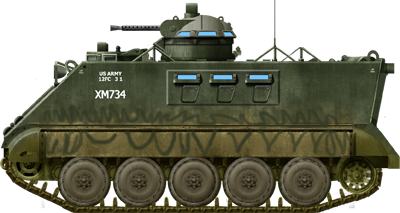
♆ 16/01/2023
 XM734 (1966)
XM734 (1966)
The XM734 was an another project related to the MICV 65 program the first step towards the long development of the M2 Bradley. Unlike the more advanced XM701 this was FMC's modification of the basic M113 with a centrally-mounted fuel tank, bunks facing outwards gun ports, plus other details. The six allegedly built were tested at Aberdeen, but this led the Army to ask for the improved XM765.
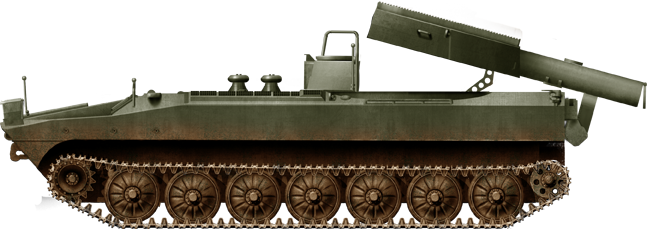
♆ 09/01/2023
 UR-77 Meteorit (1977)
UR-77 Meteorit (1977)
The UR-77 belongs to this rare category of armored vehicles called MICLIC, a specialized missile/rocker firing mine clearing vehicle, using a flexible hose filled with explosive to clear up large paths in minefields practicable by infantry and vehicles alike. Based on the 2S1 Gvodzika chassis, the few UR-77 built (accepted in 1977) were passed on to Russia, and exported in small numbers to Azerbaidjan and Syria. Together they saw a lot of action, including in the current war in Ukraine.
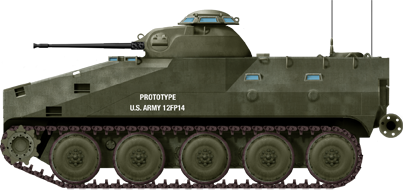
♆ 29/12/2022
XM-701 (1965)
 The XM-701 Infantry Combat Vehicle from Canadian Car and Foundy, was part of MICV-65 programme. It was to create an experimental, interim Infantry Fighting Vehicle leading to the later MICV-70 programme. Later redesigned it became the M2 Bradley. It was the first step in its development, in a sense killed by the arrival of the Soviet BMP-1, not satisfactory trials and redefinition of specifications in 1967-68. This is the start of a serie on the lineage leading to the M2 Bradley in 2023.
The XM-701 Infantry Combat Vehicle from Canadian Car and Foundy, was part of MICV-65 programme. It was to create an experimental, interim Infantry Fighting Vehicle leading to the later MICV-70 programme. Later redesigned it became the M2 Bradley. It was the first step in its development, in a sense killed by the arrival of the Soviet BMP-1, not satisfactory trials and redefinition of specifications in 1967-68. This is the start of a serie on the lineage leading to the M2 Bradley in 2023.
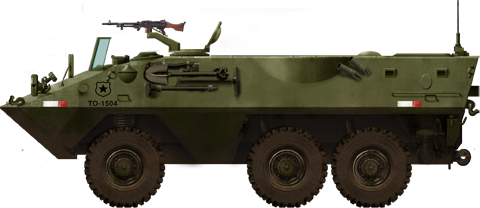
 Famae Piraña (1982)
Famae Piraña (1982)
23.11.2022
Cardoen and FAMAE (Chile) started assembling the Swiss Mowag Pirana 6x6 in 1980 and the 8x8 in 1990. It proved the basis for heavier variants, notably two turreted heavy support vehicle and a 25mm chain gun IFV. The Chilean army by combining forces of its two industrial giants managed to produce under licence some 250 Piraña I 6×6 and 25 Piraña I 8×8, still in its inventory in the 2000s, including many variants, IFV, mortar carrier, ambulance, command vehicle. Here are their story.
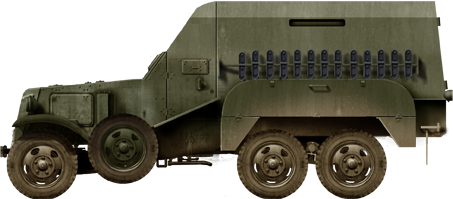
 BA-22 (1939)
BA-22 (1939)
09.11.2022 The BA-22 was a Soviet armoured ambulance developed in the late 1930s by GAZ, armored by Izhorskiy on a BA-10 armoured car chassis. It started development in 1939, as an armoured evacuation vehicle, the first such dedicated vehicle in the Soviet Army. However tested and rejected by the ABTU RKKA for service, the single prototype only built was kept for testings until the end of the war. It could have become also the first Soviet APC.
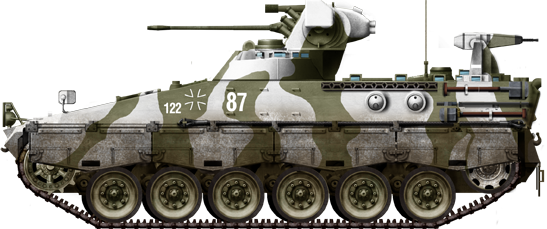
 Marder IFV (1969)
Marder IFV (1969)
26.10.2022 The Marder IFV started development as soon as the Schützenpanzer HS.30 was undergoing tests. It was seen as a heavier IFV designed to accompany Leopard Tanks on the battlefield and during its long development started to evolve as an answer to the Soviet BMP-1/2. The Schützenpanzer Marder was infinitely superior to the 1950s SpZ. "Kurz" and "Lang" which it replaced and was upgraded in the 1980s, 1990s and 2000s up to the Marder 1A6, and still 300 in the inventory today alongside the new Puma IFV.
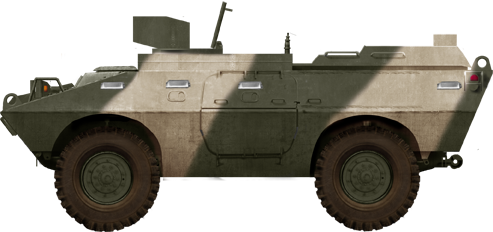
 Dragoon 300 (1982)
Dragoon 300 (1982)
13.10.2022 The Dragoon 300 was designed by Verne Corp. to meet a requirement of the US Military Police at the end of the Vietnam war, which wanted an air-transportable equivalent to the Cadillac Gage Commando. The requirement was cancelled but Verne teamed with Arrowpointe Corp. to market it internationally, and outside the US Navy and some police agencies to protect sensible areas, the vehicle was also exported to six other countries, and declined into a dozen variants, with circa 400 being built by AV Technology Corp. until the introduction of the Dragoon 2 and its production by GDLS in Spain (Santa Barbara).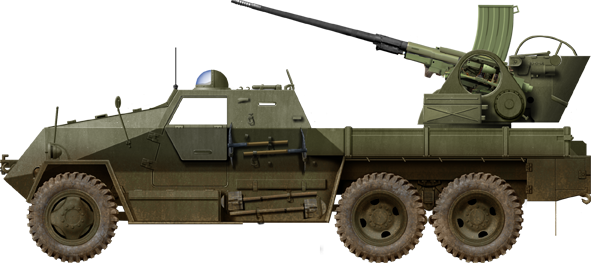
 Praga M53/59 SPAAG (1959)
Praga M53/59 SPAAG (1959)
27.09.2022 The Praga M53/59 was for decades the main SPAAG of the Czechoslovakian Army. Developed from the sturdy Praga V3S 6x6 truck, it was studied to carry a twin 30 mm AA gun and was a reliable, albeit slow vehicle, seeing active service for most of the cold war, taking part in many conflicts like the 1967-73 middle eastern, Libyan, Iran-Iraq, and Yugoslavian wars among others, and still in active service in four countries today.
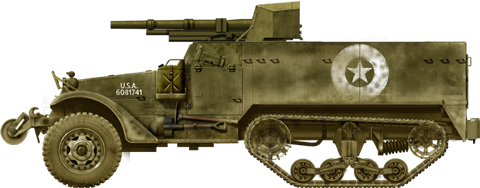
 T12/M3 GMC (1941)
T12/M3 GMC (1941)
31.08.2022 The T12, later standardized in late 1941 and produced from February 1942, until April 1943 as the M3 Gun Motor Carriage was a self-propelled gun based on the M3 White Half Track Car. More than 2,200 were delivered by the Autocar Company, soldiering in the Philippines in January 1942, North Africa, Sicilia and Italy until replacement by the M10 Wolverine. About 1300 were reverted back as regular M3A1 half-tracks, the remainder, not lost in action, still served in many amphibious operations of the Pacific, such as Saipan, Peleliu, Tarawa, and Okinawa.
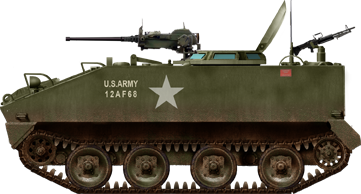
 M114 (1962)
M114 (1962)
24.07.2022 The story of the M114 is one of a failed opportunity. It was manufactured by Cadillac (General Motors) in the early 1960s, even before the Vietnam war as a fast and stealthy reconnaissance armored all-tracked vehicle that can perform also communication and control on the battlefield. It was indeed smaller and nimbler than the M113, technically faster, and still amphibious and air-droppable. But from paper to reality, the concept quickly proved unsuited for the Vietnam War and was replaced by the M551 Sheridan. It was retired gradually in 1979, considered a failure and ending as surplus used by police departments.
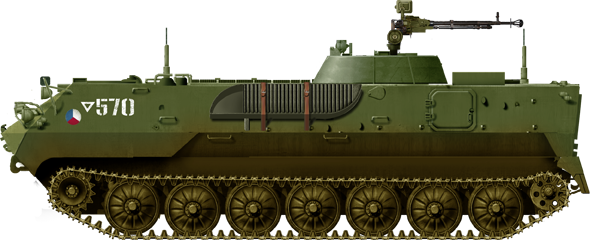
 MT-LBu (1974)
MT-LBu (1974)
08.07.2022 The MT-LBu (NATO M1974) was a standard Soviet Artillery Command and Communication vehicle developed to replace the AT-P vehicles, and sharing a lot of components with the MT-LB multipurpose prime mover/transport. It was declined into more than 60 variants, licence-built also by Poland and Bulgaria, exported to some 30 countries, still used by most today, seeing also combat in many conflicts.

 17pdr Cruiser A30 Avenger (1944)
17pdr Cruiser A30 Avenger (1944)
29.06.2022 The A30 Avenger was another attempt to give the British armored division a suitable tank hunter fitted with the "long" 17 pounder antitank ordnance. However a protracted development based on the transitional Cruiser Tank Challenger (A30) meant the Avenger never really was operational, with even less made than the Challenger. It never really entered service nor was deployed in any theater of war and was retired in the late 1940s.

 Dodge 3-tonnes AM "Tanaké" (1940)
Dodge 3-tonnes AM "Tanaké" (1940)
09.06.2022: The Dodge "Tanaké" armored car was a rather obscure French conversion was made on an imported Truck G60L in Beyrouth in 1940. The vehicle fought with Vichy French troops against the allies in 1941, with the 13th DBLE of the Free Foreign Legion against the Afrika korps in 1942, and in 1948 with the Syrian Arab Legion.
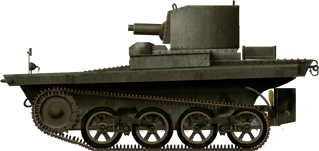
 Vickers Carden-Loyd light amphibious tank (1931)
Vickers Carden-Loyd light amphibious tank (1931)
25.05.2022: The Vickers Carden-Loyd light amphibious tank, also known as the army prototypes (war office) A4E11 and A4E12 and manufacturer names L1E1 and L1E2, was an experimentak floating light tank which was never adopted by the British Army but instead was exported to Japan, the Dutch KNIL, and China, where most were used in combat and lost.
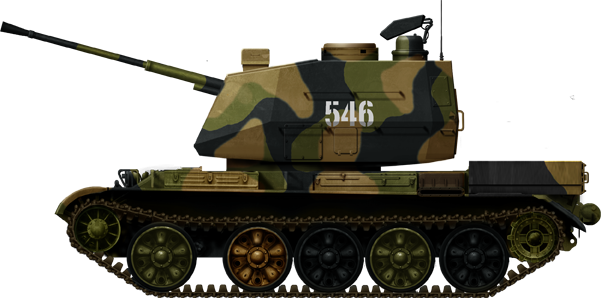
 PGZ 88 (1986)
PGZ 88 (1986)
18.05.2022: The Type 88, also referred as the PGZ-88, was a self-propelled anti-aircraft gun, first was revealed in 1989. Developed since the early 1980s it was fully-automatic, but only a 24 were built for evaluation trials; It was never accepted for service nor exported but helped pave the way for better systems like the Type 95 and Type 07. As of today these vehicles has been displayed and stored, kept in reserve or scrapped.
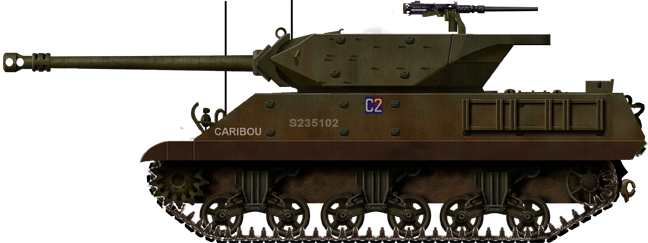
 17pdr Sp Achilles (1943)
17pdr Sp Achilles (1943)
05.05.2022: The 17 Pdr SP (M10 C) Achilles was a conversion of the lend-lease, US-built, M10 Wolverine Tank Hunter, in order to accomodate the excellent Orndance 17 pounder antitank gun supplied in large quantities from late 1943 to the British Army and soon supplied to the Canadians and Free Polish Forces. Over 1,100 were converted until April 1945, soldiering from Normandy to Italy and Germany.
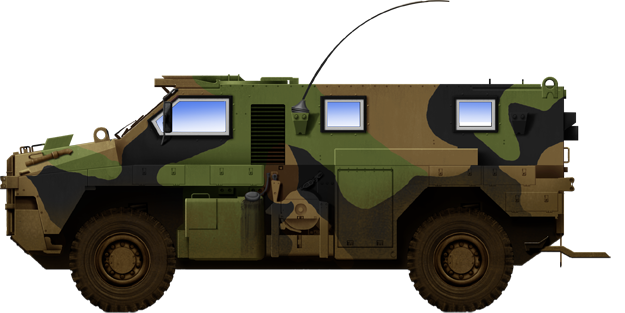
 Bushmaster PMV (1995)
Bushmaster PMV (1995)
28.04.2022: The Bushmaster Protected Mobility Vehicle is the first armoured vehicle to be designed and completely manufactured in Australia since the Sentinel tank during World War II. It is a four-wheel drive "Infantry Mobility Vehicle" initiated by the government-owned Australian Defence Industries (ADI), but currently by Thales Australia, under contract by Oshkosh Truck (which owns now ADI). It is in service outside the Australian Army, with the RAAF, the Royal Netherlands Army, British Army, JGSDF, Indonesia, Fiji, Jamaica, New Zealand and Ukraine.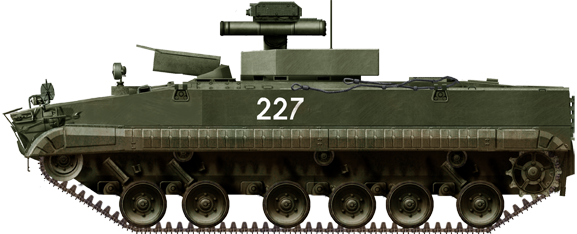
 9P162 Kornet-T
9P162 Kornet-T
20.04.2022: The 9P162 Kornet-T is an anti-tank missile carrier designed in Russia on the basis of the BMP-3 IFV, part of the 9K128 "Kornet-T" complex, and design to carry and operate the 9M133 Kornet anti-tank guided missile. It was designed to replace the older 9P149 Shturm-S based on the MT-LB, but also the 9P148 Konkurs based on BRDM-2 armored scout car. First Kornet-T anti-tank missile carriers were delivered in 2003, but tests and fixes were ongoing for many more years. A first batch of 20 were delivered to the Russian Army in 2012.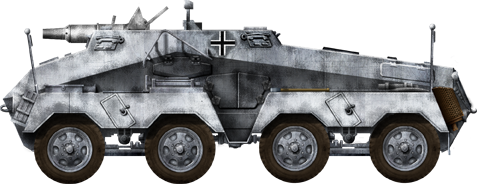
 Schwerer Panzerspähwagen (7,5 cm) auf Sd. Kfz. 233 (1942)
Schwerer Panzerspähwagen (7,5 cm) auf Sd. Kfz. 233 (1942)
13.04.2022: The schwerer Panzerspähwagen (7,5 cm) Sd. Kfz. 233, or simply know as the "Sd.Kfz.233" was part of the family of heavy reconnaissance 8x8 armored cars developed from 1937, starting with the Sd.Kfz. 231; It was developed in 1942 when the need arise in reconnaissance batallions to field a dedicated artillery support vehicle. The Sd.Kfz 233 armed with the ubiquitous 7,5 cm K37 L24 also shared by the early Panzer IV and 135 vehicles were manufactured from July 1942 to October 1943.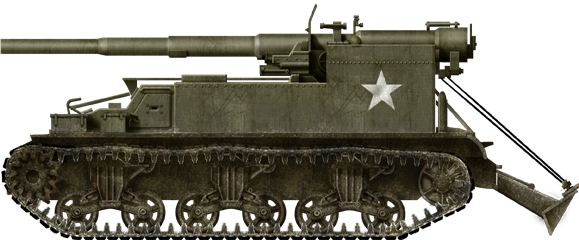
 M12 GMC (1942)
M12 GMC (1942)
06.04.2022: The M12 GMC was the first heavy self-propelled gun in service with the US Army during WW2. It had a rocky past, developed in early 1942 and produced to just 100 vehicles that were send in storehouse apart those kept for training. In early 1944 however 75 were dusted out to be modernized and sent to equip several artillery batallions deployed for the Normandy Landings. The M16 GMC, assisted by the M30 ammo carrier, had a remarkable career until the end of the war in Europe, still equipped with a vintage WW1 155 mm gun.

 TR-85 (1985)
TR-85 (1985)
30.03.2022: The Tank Romanesc model 85 is the actual main battle tank of the armed forces, studied during the cold war to succeed to the TR-77, equipped with a new Romanian powerpack, transmission, gearbox, wheeltrain, suspensions, and fire control system, among others. The TR-85M1 Bizonul was developed with a new turret bustle from 1994 and many other upgrades. Only 54 are currently in active service today, alongside 250 TR-85, the rest placed in reserve or converted into special vehicles, for a grand total of 617 vehicles.
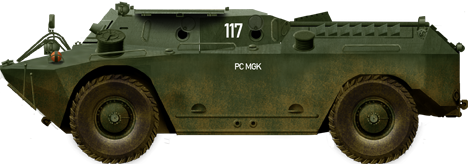
 D-442 FUG (1963)
D-442 FUG (1963)
24.03.2022 The Soviet BRDM-2 was a simple and versatile vehicle that draw attention of Warsaw Pact countries as a good candidate to be copied, or emulated by their own industries. Hungary was one such country. The D-442 FUG (Felderítő Úszó Gépkocsi "amphibious reconnaissance vehicle") and its main variant, the D-944 PSZH (Páncélozott Személyszállító Harcjármű – "armored personnel carrier") were both product of Hungarian domestic development, for a vehicle that was even cheaper, and amphibious, exported to Czechoslovakia, East Germany and Poland among others
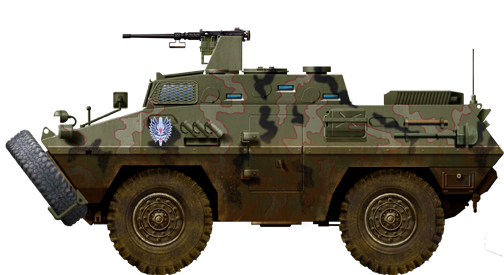
 BOV (1983)
BOV (1983)
17.03.2022 The BOV is a 4x4 armoured vehicle designed and built in Yugoslavia during the latter part of the cold war. It was designed originally as a tank hunter put into service as the POLO M83, and later declined into an APC version (M86 or later BOV-VP), and a SPAAG version BOV-3. Production went up to circa 650 vehicles, which soldiered in the Yugoslavian wars and is still produced in Serbia as the BOV-2 by Yugoimport, while older vehicles were passed onto successors states.
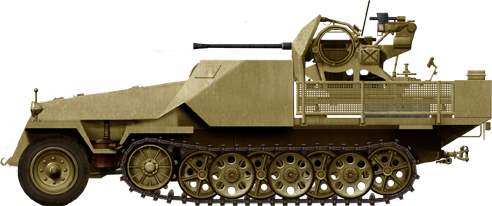
 2cm Flak 38 auf Selbstfahrlafette Zgkw.3t (Sd Kfz.11) (1943)
2cm Flak 38 auf Selbstfahrlafette Zgkw.3t (Sd Kfz.11) (1943)
10.03.2022 Also called SdKfz 11/1 (late version), this derivative of the Sd.Kfz 11 light prime mover and utility half track of the Wehrmacht, was armored with a body recalling the SdKfz 251 used by the Panzergrenadiers. But it carried on its flatbed a 2 cm Kanone FLAK 38 for organic AA defense of various units, being apressing issue in 1944 with the gradual loss of air supremacy over Europe. The vehicle had no nickname, and served on the Eastern Front and Normandy until the fall of Germany in May 1945, often also as close support vehicle.
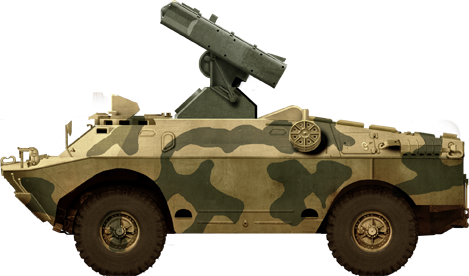
 9K31 Strela-1 (1968)
9K31 Strela-1 (1968)
02.03.2022 The 9K31 Strela-1 is the TEL 4x4, or carrier derived from the 1960 BRDM-2, part of the weapons system 9P31, including the missile 9K31 (NATO SA-9 GASKIN). It was developed from 1960 in complement to the ZSU-23-4 Shilka SPAAG to bring an organic short/medium range of combined AA guns and missiles for anti-aicraft defense of the Warsaw Pact armies. Produced to about 2,000 vehicles, used by all Warsaw Pact countries and largely exported, it saw plenty of action since the 1970s, and it's certainly not over. It's seeker was unique in that it could engage incoming jets, not possible for other IR seeking systems.
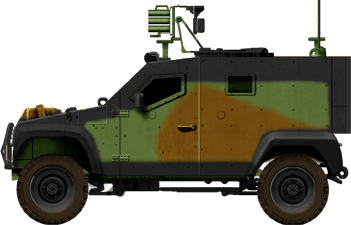
 Peugeot PVP APC (1995)
Peugeot PVP APC (1995)
22.02.2022 The Panhard PVP (for "petit vehicle protégé") was an armored light utility vehicle intended to partially replace the Peugeot P4 softskin utility vehicle on some missions. The P4 indeed revealed its vulnerability in combat in ex-Yugoslavia in 1995 peace-keeping operations. Panhard developed a protection kit (P4P) but the French army launched procurement for the future PVP, developed and produced, by successively Auverland, Panhard, Renault Truck Defense and now Aquus as the "Dagger". 1133 has been produced from 2004 to 2012. More modern versions are now marketed.
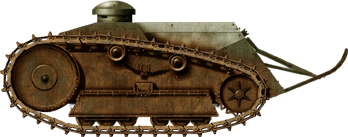
 Ford 3-ton tank (1917)
Ford 3-ton tank (1917)
09.02.2022 The Ford 3-Ton M1918 was one of the first tank designs, intended for a 15,000 strong production in 1919. It was a small two-man, turretless, one-MG tank capable of 8 mph (13 km/h), with a range of 34 miles (55 km). Of the 15 prototypes, a single one was tested in France in 1918, but the order was cancelled at the end of the war.

 Altay Main Battle Tank (2012)
Altay Main Battle Tank (2012)
02.02.2022 The Turkish Altay Main Battle Tank (3rd gen.) development could be traced back to 1993 but it's only from 2010 that the project gained traction. After prototypes in 2016-2021, a first batch signed in 2012 should see a production start in 2023 (it was delayed twice, notably due to COVID, and powerplant issues). A total of 1,000 had been planned in order to replace the four existing main tank types in service in the Turkish Armies, and most probably upgrade the current Leopard 2A4.
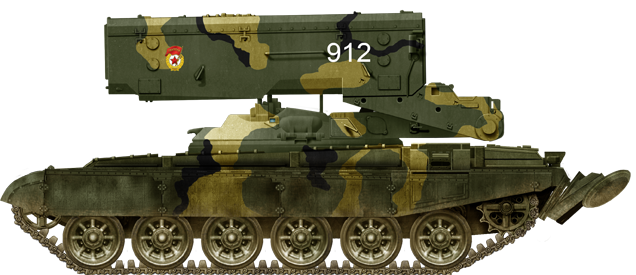
 TOS-1 Buratino (1988)
TOS-1 Buratino (1988)
26.01.2022 The TOS-1 Buratino ("Pinocchio") system was developed back in the 1980s. The idea of themobaric or napalm rockets was to create a large cloud of flammable gas, also causing massive explosions in the process to clear out bunkers and fortifications of any kind on the battlefield. It was based on the trusted T-72 MBT chassis, production has remained ellusive, but the vehicle was modernized and also widely exported, seeing combat action since the fall of USSR.
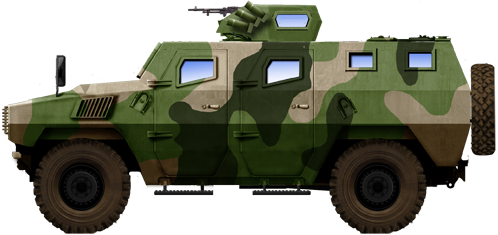
 Shaanxi Baoji Tiger APC (2010)
Shaanxi Baoji Tiger APC (2010)
19.01.2022 Called the ShaanXi Baoji Special Vehicle "China Tiger", the vehicle was first revealed at At Eurosatory 2012 Defence Exhibition by the Chinese defence Company Shaanxi Baoji Special Vehicles Manufacturing. This new 4x4 armoured vehicle personnel carrier was developed for the international market under the name "Tiger". Currently still produced, exported so far to Bahamas (2), Bolivia (24) and Somalia (12).
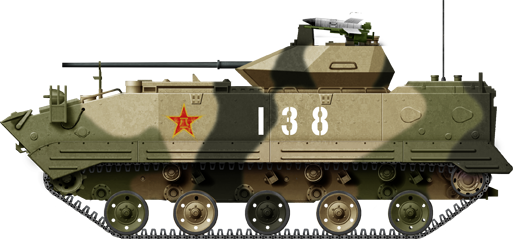
 Chinese PLA ZBD-03 IFV (2002)
Chinese PLA ZBD-03 IFV (2002)
12.01.2022 Introduced in 2002, the Chinese ZBD-03 is today the mainstay of the Chinese PLA airborne divisions, as infantry fighting vehicle. It was first designed in 1998 and was produced in the 2000s to perhaps 1,500 vehcles, also declined into the specialized variants of Command Post and ATGMS tank hunter, mirorring the Russian BMD-2

 2S25 Sprut SD (2005)
2S25 Sprut SD (2005)
05.01.2022 Introduced in 2004, the 2S25 self propelled airborne and amphibious tank destroyer was produced at the Volgograd Tractor Plant, and circa 30 or less has been produced so far as of 2018. Replacement has been planned already and it seemed no further orders would be delivered. The vehicle is still actie in an operational airborne brigade with 24 vehicles today.
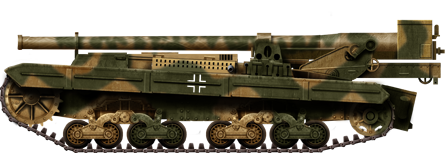
 Semovente da 149/40 (1943)
Semovente da 149/40 (1943)
28.12.2021 The Semovente da 149/40 was the ultimate, heaviest built Italian self propelled gun of WW2. It used the Cannone da 149/40 modello 1935, mated on a M15/42 M42 chassis by Ansaldo leading to a prototype in December 1942, but production setup dragged on until Italy capitulated, and the sole protoype ended in Germany.
15.04.2021: Fiat 6614 (1972)
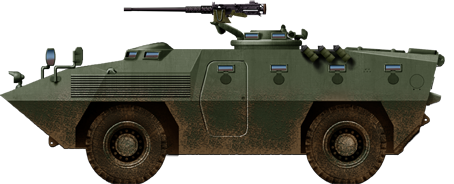
The FIAT Tipo 6614 was a 4x4 armoured personal carrier developed in the 1970s to answer some Italian Army specifiications for a cheap vehicle, that was to be use later by the Italian police and Carabineri units as well as the Air Force or the army in peace-keeping deployments. It was also widely exported. It was also declined into the FIAT 6614 infantry fighting Vehicle and South Korean KM-900.
10.04.2021: M31 TRV (1941)
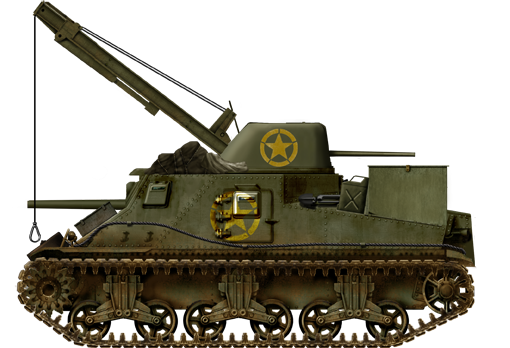
The early standard T2 Tank Retreiver (TRV) became the M31 ARV when standardized in late 1942. It was produced or converted from existiing M3 Lee and Grant Medium Tanks. They were the first purpose tracked recovery armoured vehicles used by the US Army, also sent to the Soviets and Free French as lend-lease as well. They were used until the very end of the war, despite their sucessor, the M32, was based on the M4 Sherman, declared standard in October 1943 already.
05.04.2021: Canadian Armoured Autocar (1914)
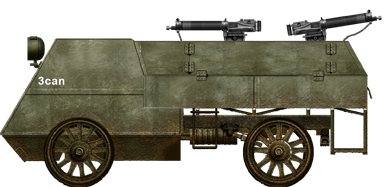
The Armoured Autocar was an armoured vehicle, more a mobile, motorized armoured machin gun nest than an armoured personal carrier or even a regular armoured car as it had no turret. Initiated by French Canadian captain Raymond Brutinel, this vehicle was funded by him and with the support of the Minister for the Canadian militia in 1914, resulting in the creation of the Canadian Automobile Machine Gun Brigade, world's first motorized unit of that kind anywhere in the world. Although the static nature of the Western front did not gave them much occasions of sustained action, the German spring offensive in 1918 saw them used in active defense and later, taking part in the last offensives, when mobility returned to the battlefield.
26.03.2021: 7.62cm Pak-36 r-Auf 5t Zugkraftwagen Selbstfahrlafette ausf SdKfz.6/3 "Diana" (1940)

The 7.62cm Pak-36 r-Auf 5t Zugkraftwagen Selbstfahrlafette ausf SdKfz.6/3, more commonly known "Diana" was a rare conversion (only nine) of the Sd.Kfz.6 troop transport and artillery tractor half track of the Wehrmacht, first designed in 1936 and initially produced by Büssing-NAG, and Mercedes from 1942. It was a tank-hunter conversion featuring a Russian 76.2 mm F-22 universal gun, protected by an armoured box. They were all used (and lost) in North Africa with the Deutsche Afrika Korps and 605 Pzabt.(mot), together with the Panzerjäger-I, also using a captured gun.
22.03.2021: BTR-D (1974)
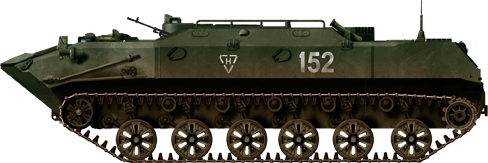
The BTR-D was Soviet's airborne troops armoured personal carrier (APC). It was developed following reports of the limitations in the field of the BMD-1 airborne IFV, too cramped to carry effectively four soldiers. In effect, the BTR-D reused much of its IFV brother, but with no turret and a much larger compartment, and longer wheeltrain. Armed with just two PKT bow machine guns, it is a pure APC able to carry three paratroopers in addition to its crew of three. The BTR-D was accepted in 1974 and deployed in all soviet airbone units in the 1970-80s. It also saw service in several conflicts and had been upgraded and declined into a multitude of variants, like the "Nona" self propelled gun. Still active with the Russian, Ukrainan armies and others today.
17.03.2021: Karl Gerät (1939)
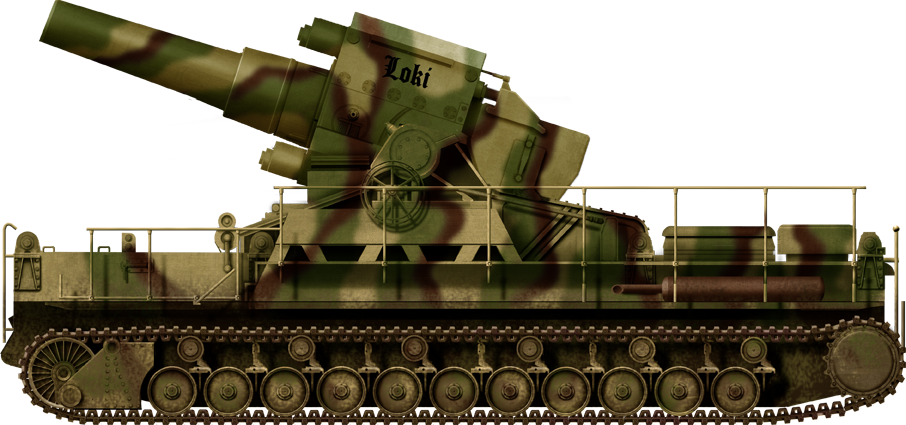
The Karl Gerät self-propelled howitzer was the largest ordnance ever deployed by any belligerent during WW2, outside railway guns. Its caliber was larger than the Sturmtiger, and its range superior, and it was given tailored 60 cm caliber bunker-busting shells to deal with Belgian and French fortifications. However, the wesstern campaign ended before it could be deployed. In all seven of these were built, named after Nordic deities. They served mainly on the Russian Front, dealing with massive fortifications as Sebastopol and elsewhere, even taking part in the battle of the bulge, the warsaw uprizing, or attempting to destoy the bridge at Remagen.
08.03.2021: M752 MGM-52 TEL (1971)
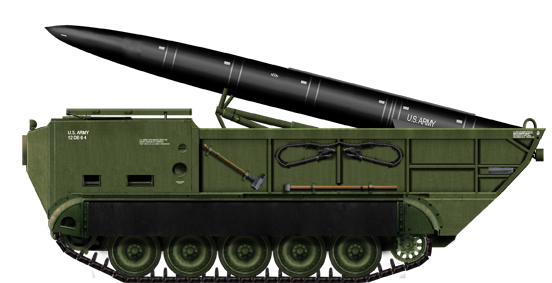
The M752 was a complete tactical mobile missile system, with its TEL (Transporter Launcher Erector), comprising the MGM-52 tactical missile, fitted either with a nuclear warhead or a versatile conventional warheard, HE and fragmentation (sub-munition model), and its TEL vehicle, the M677 based on the M113, deployed from 1971 to the end of the cold war and also used by NATO counties and Israel.
01.03.2021: Carro M15/42 (1942)
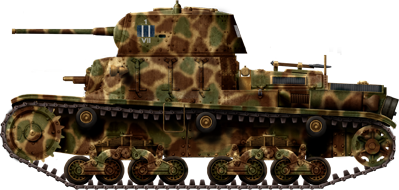
The Carro Armato Medio M15/42 was the last Italian Tank for about 60 years. It was designed with a brand new, more powerful FIAT gasoline engine for increased performances and a much better, high velocity 47 mm gun. However many other aspects did not changed like the riverted armour and classic two-bogie leaf sprung suspension and drivetrain, negating the performance increase. Only a handful, perhaps 150 of these last Italian medium tank were delivered before the armistice, but production went on under German occupation, and the vehicle was declined in several variants, including a SPAAG.
25.02.2021: DAF YP 408 (1975)
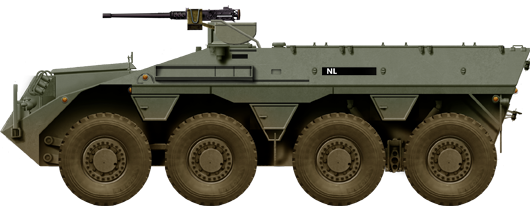 The DAF YP-408 started as a Royal armoured transporter of the Dutch household guards in case of impending atomic war. From a sturdy 4x6 truck chassis by DAF, its was transformed into a 6x8 APC. From this base, with over 800 manufactured, about eight main variants and six sub-variants of this vehicle was produced and used by the Dutch Army in Suriname and Lebanon, and also used by Portugal, Chile and Suriname.
The DAF YP-408 started as a Royal armoured transporter of the Dutch household guards in case of impending atomic war. From a sturdy 4x6 truck chassis by DAF, its was transformed into a 6x8 APC. From this base, with over 800 manufactured, about eight main variants and six sub-variants of this vehicle was produced and used by the Dutch Army in Suriname and Lebanon, and also used by Portugal, Chile and Suriname.
19.02.2021: PHZ-89 (1989)
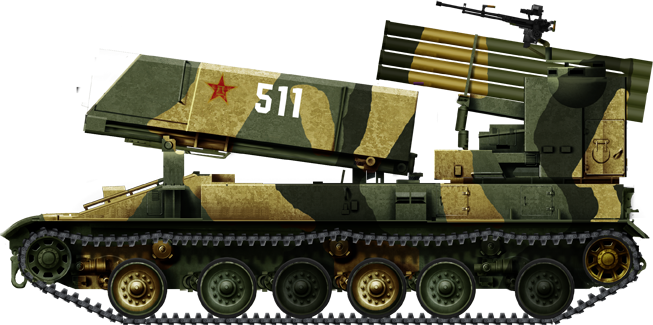
The type 89 was developed from 1985 to 1989 as the Chinese premier (Self-Propelled) Multiple Rocket launcher System (MRLS), approved in 1989 but entering service in 1990 so it's as much a modern vehicle than a cold war one.
10.02.2021: The SdKfz 254 (1936)
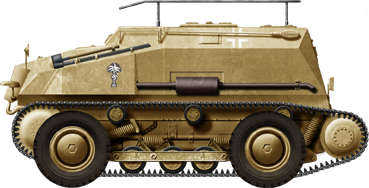
Started as a German Experiment, later copied in Austria, and took over after the Anschluss in 1939... by the Germans, the vehicle known as the Saurer RR-7 was quite unique, as the unique wheel-cum track vehicle in service with the Wehrmacht during the war. Under German supervision it was armoured, armed, and a handful were produced, around 170, used as artillery tractors and artillery observation vehicle in north africa and Russia under the waffenamt designation Sd.Kfz.254.
06.02.2021: The 2K12 Kub (SA-6 "Gainful" Carrier)
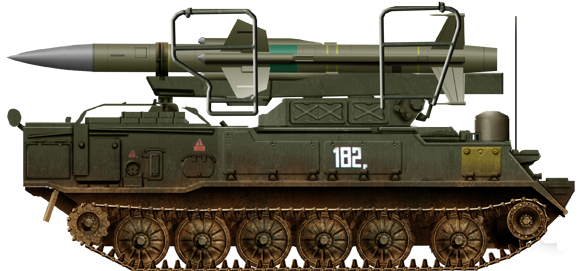
The 2K12 "Kub" was the main tracked armoured carrier for the medium-range anti-aircraft ground-to-air missile SA-6 (NATO codename "Gainful"). In service from 1967, it has been designed by NIIP/Vympel and MMZ (GM chassis) and manufactured by the Ulyanovsk Mechanical Plant unti 1985 to around 500 vehicles, and declined into the 2K12 Kub, 2K12E Kvadrat (export version), 2K12M3, 2K12M4, exported 33 countries, and seeing action in a dozen conflicts, still in service today.
30.01.2021: The M60 Sabra (1993)

The M60T Sabra was an Israeli radical modernization of the M60T, which was the already modified Turkish version of the M60 Patton Main Battle Tanks, of which thousands have been delivered to the Turkish armed forces since the 1980s. The M60T Sabra is derived from the Magach 7 and numerous Israeli versions of the M60 Tank. It has been produced to around 300 vehicles, deployed notably in Syria and Libya among others.
22.01.2021: The BMD-2 (1985)

The Soviet BMD-2 was the second IFV (Infantry Fighting Vehicles) developed specifically for the paratroopers. It was basically a modernized BMD-1, according to the lessons of Afghanistan, made to operate in such theater of operations. However the collapse of USSR meant the BMD-2, which development started in 1981 had a production run at Volgograd Tractor Plant of about 2,500 vehicles, stopped in 1991. It was modernized since, an the version M is intended to upgrade all vehicles, of which around 850 are in service today, for 1,500 in reserve and a few in Ukraine. They saw action in several conflicts but are now superseded by the larger BMD-3 and are to be replaced by the BMD-4 in the 2020s.
18.01.2021: The Type 90-II MTB

The Chinese PLA Type 90 Main Battle Tank represented an evolutionary step, proceeded from the T-85, which in turn was a Chinese copy of the T-72. But if the Type 90 shared most of its components with the Type 85, the turret was heavily modified to house a brand new 125 mm smothbore autoloaded main gun. Known in its variant II, derived from the Type 85-IIM, it also introduced ERA semi-active protection. The Type 90-II was refused for production by the PRC but its development went on for export solely, leading to the VT-1 and Al-Khalid, for which 550 had been built for six customers.
15.01.2021: The SU-122/54

The Soviet SU-122/54 was a tank hunter developed in 1948-1954 with many delays, on the ever changing basis of the T-54 medium tank, to carry the 122 mm D49 tank gun, and to perform the role of US/British heavy tank destroyer. The gap bewteen the first three roadwheels made some NATO experts believed it was based on the T-62 chassis. Since priorities changes however during production, it was cut to just 77 vehicles, and their service lasted until the 1970s.

 This photo was taken back in 2015 and puzzled analysts back then, which already knew well the Snow Leopard as standard. It happened to be in 2023 a new IFV. The photos showed mobility trials of the chassis alone. This is likely the replacement for the actual ZBL-08, dubbed by analysts the Type 19 Infantry Fighting Vehicle (ZBF 19), with a 30mm unmanned turret, ATGMs and 5.8mm coaxial machine gun. Called still not officially the Type 19 it shows a gunner sight with unusual layout, mostly concealed beneath the main gun shield. We will have to look more closely in the next months about this brand new PLAGF IFV, which pre-production has started since years.
This photo was taken back in 2015 and puzzled analysts back then, which already knew well the Snow Leopard as standard. It happened to be in 2023 a new IFV. The photos showed mobility trials of the chassis alone. This is likely the replacement for the actual ZBL-08, dubbed by analysts the Type 19 Infantry Fighting Vehicle (ZBF 19), with a 30mm unmanned turret, ATGMs and 5.8mm coaxial machine gun. Called still not officially the Type 19 it shows a gunner sight with unusual layout, mostly concealed beneath the main gun shield. We will have to look more closely in the next months about this brand new PLAGF IFV, which pre-production has started since years.

 This was the OA-82 Jarmila II, a Czech armoured car based on the chassis of a 1.5-ton off-road vehicle Tatra 805, featuring two BzK vz. 59 recoiless rifles for antitank support. This reconnaissance vehicle was developed in 1958-59 by AZNP in Mladá Boleslav. It stayed a prototype as after tests, production was not authorized. It's possible five were built in all for evaluation in 1959-60. It was weighting 6,834 lb for an Overall Length of 13ft 1,47in, width of 6ft 4,76in, height of 6ft 0,82in, ground Clearance of 1ft 3,75in. It had a Tatra 603 93.3 bhp engine at 4000 rpm, top speed of 50 mph and 311 mi range. See more there.
This was the OA-82 Jarmila II, a Czech armoured car based on the chassis of a 1.5-ton off-road vehicle Tatra 805, featuring two BzK vz. 59 recoiless rifles for antitank support. This reconnaissance vehicle was developed in 1958-59 by AZNP in Mladá Boleslav. It stayed a prototype as after tests, production was not authorized. It's possible five were built in all for evaluation in 1959-60. It was weighting 6,834 lb for an Overall Length of 13ft 1,47in, width of 6ft 4,76in, height of 6ft 0,82in, ground Clearance of 1ft 3,75in. It had a Tatra 603 93.3 bhp engine at 4000 rpm, top speed of 50 mph and 311 mi range. See more there.